

15 Best Germany Travel Guides
This post may contain affiliate links. Read my disclaimer policy.
Looking for the best Germany travel guide to take on your trip? Here are 15 of the most useful options for travelers planning trips to Germany!
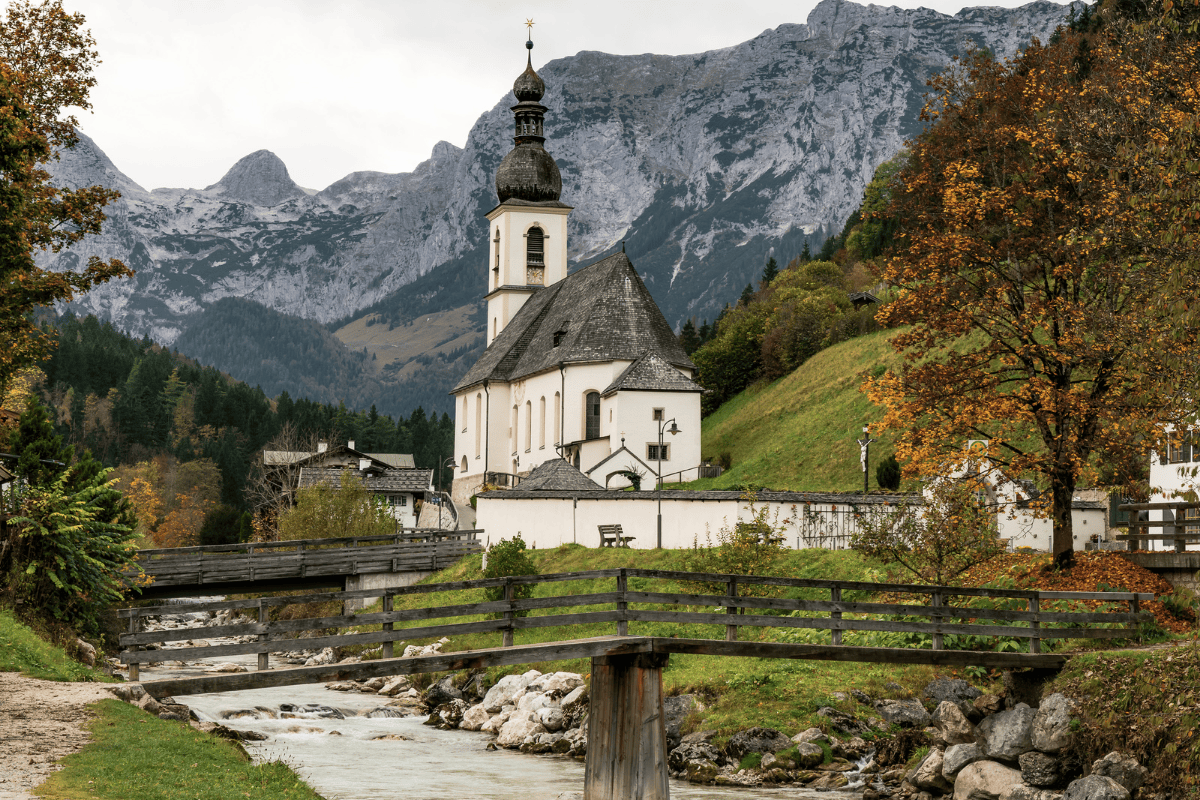
Germany is a world class tourist destination in the heart of Europe.
Every year, millions of people travel there to taste its many famous beers and traditional German cuisine , visit enchanting fairy tale castles , national parks, and beautiful sights, learn about its rich history and culture, and much more.
No matter whether you plan to visit busting big cities or Germany’s many thriving smaller cities, you’ll find tons of attractions and points of interest. But they can be difficult to explore effectively without a guide to help you along the way.
Join our FREE Germany Trip Planning Facebook Group!
This article shows you the best Germany travel guides out in the market today (both in hard copy and Kindle) and how you can choose the best one for your trip.
Whether you plan to spend time in Berlin, the Rhine, Bavaria (or elsewhere!), want to travel by cruise, train or take a road trip, or are traveling solo, with a partner or your entire family, there’s a guide for every kind of itinerary and traveler!

- 1 Quick Guidebook Recommendations
- 2 Why Use A Travel Guide?
- 3 Germany Travel Guides Comparison Chart
- 4 How To Choose The Best Travel Guide For You
- 5 15 Best Germany Travel Guides
- 6 What To See And Do In Germany?
- 7 When Is The Best Time To Go To Germany?
Quick Guidebook Recommendations
Check out this quick list of our favorite guide books if you’re in a hurry, or continue scrolling to see our full list with in-depth reviews.
- For Insider Tips On Hidden Gems : Fodor’s Essential Germany
- For Kindle Unlimited Users : The Rough Guide to Germany
- For First-Time Travelers to Germany: Rick Steves Germany
- For multiple formats and off-line maps: Lonely Planet Germany
- For DIY Berlin Walking Tours: National Geographic: Walking Berlin
- For Visiting Munich, Bavaria & The Black Forest: Lonely Planet: Munich, Bavaria, and the Black Forest
- For Visiting Rothenburg & the Rhine: Rick Steves’ Rothenburg & the Rhine
- For Road Trips & Day Trips in Germany, Austria & Switzerland : Lonely Planet’s Guide to Germany, Austria, and Switzerland
- Best City Pocket Guide s: Lonely Planet’s Pocket Guide Berlin, Hamburg, Munich
- For Roadtrips in Germany: DK Eyewitness Road Trips
- For Rail Travel in Germany: Europe by Rail
- For River Cruises: Lonely Planet Cruise Ports European Rivers
- Best Guide for Kids: Kids Travel Guide Germany
- For Quickly Learning About German Culture: Culture Smart Germany
- For Learning German Language: 1,000 German Phrases
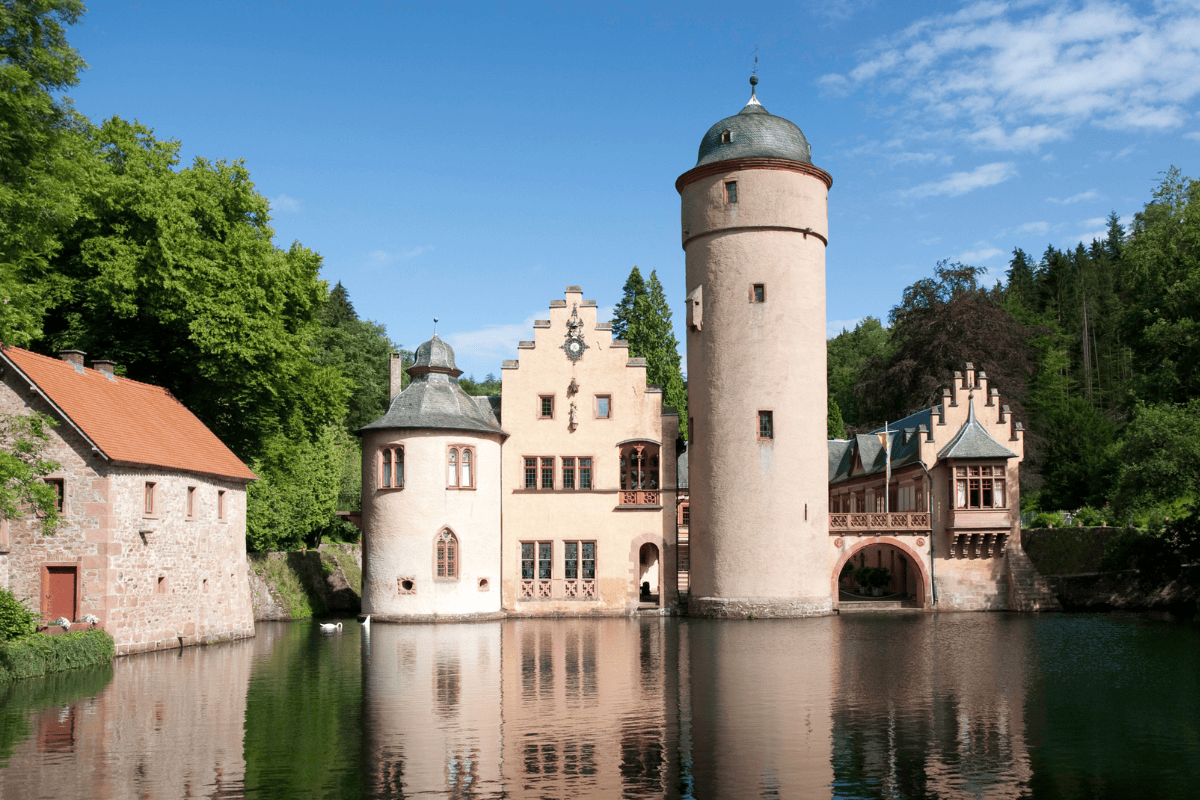
Why Use A Travel Guide?
Germany travel guides are a great resource for planning specific aspects of your trip, especially when combined with the info we provide on this website.
You can never have too much trip planning information, and a good travel guide provides essential travel information without the need for wifi.
Travel guides are especially useful for people who don’t have a lot of experience traveling abroad or who don’t speak the language of their destination country.
The guides we highlight below can help you find good restaurants, learn about regional customs and traditions, and avoid scams in specific locations.
If you’re looking for something more specific than general travel advice, there are many specialty travel guidebooks available that cover everything from hiking trails to famous literary locations around the world!
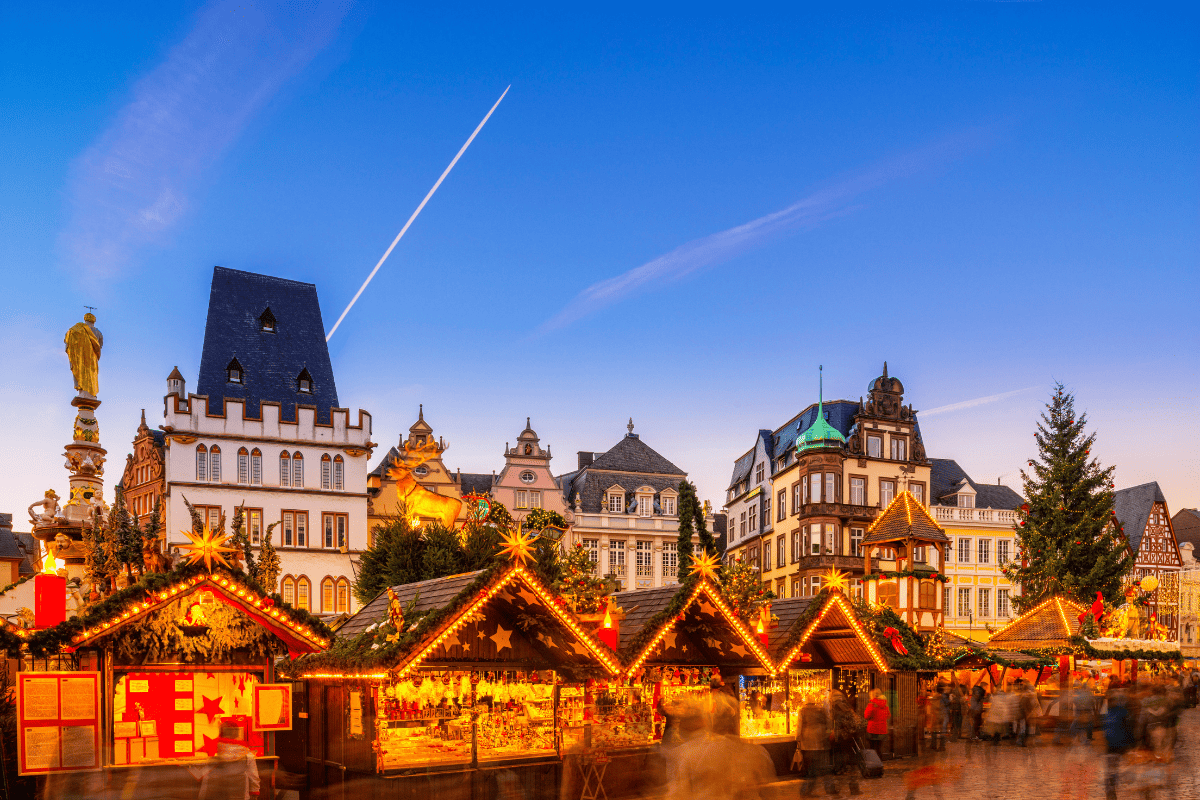
Germany Travel Guides Comparison Chart
Here’s an overview of the best guidebooks for Germany travel. Scroll down for a more detailed review of each book!
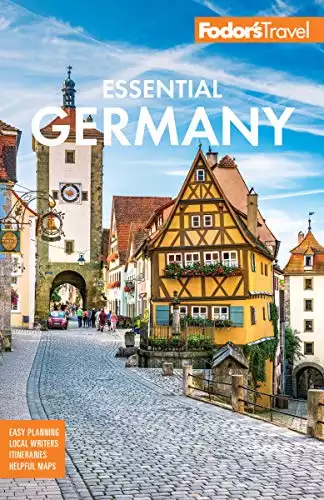
- Perfect for insider tips
- Full-size street maps
- Sample itineraries
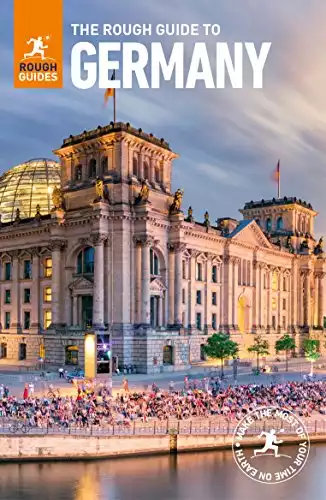
- Free with Kindle Unlimited (as of now)
- Carefully planned itineraries
- Full-color maps
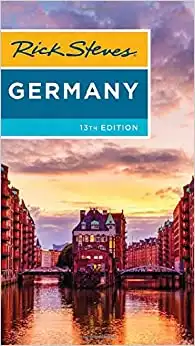
- Perfect first timers
- Strategic advice for making the most out of your budget
- Tips on how to plan a multi-week trip to different cities in Germany
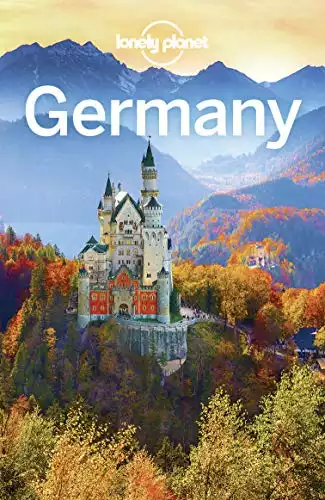
- Honest reviews of restaurants
- Free on Kindle Unlimited too
- Add notes to personalize your digital guidebook
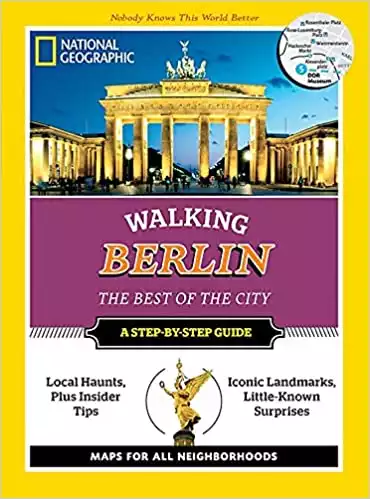
- 15 walking tours
- Step-by-step itineraries
- Detailed maps
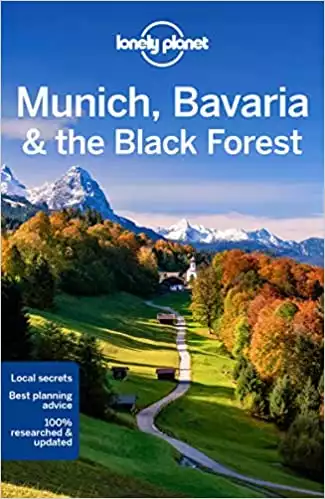
- Up-to-date research on travel information and what businesses are still open after light of Covid-19
- “What’s new” sections featuring cultural trends
- New, up-and-coming areas to visit
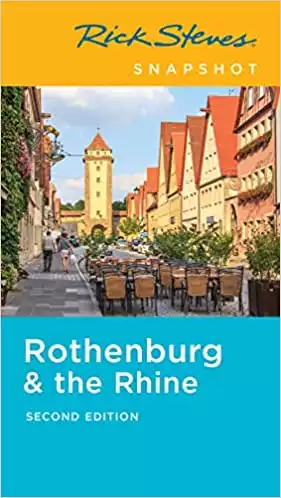
- Insider travel tips
- How to avoid tourist traps
- Rothenburg & Rhine focused
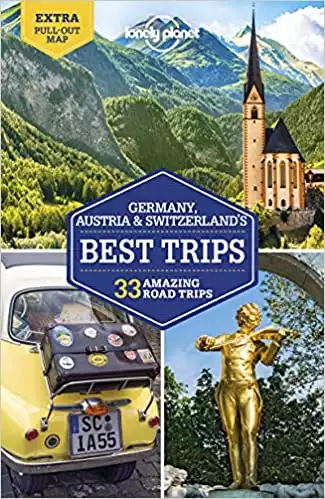
- Germany, Austria & Switzerland
- 33 trip ideas
- Fastest travel routes & scenic detours
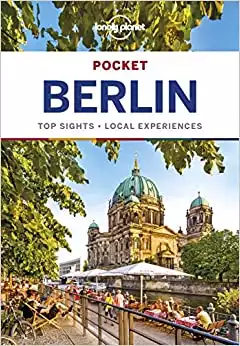
Small & handy
Books for Berlin, Hamburg & Munich
Expert advice on top tourist destinations & neighborhoods
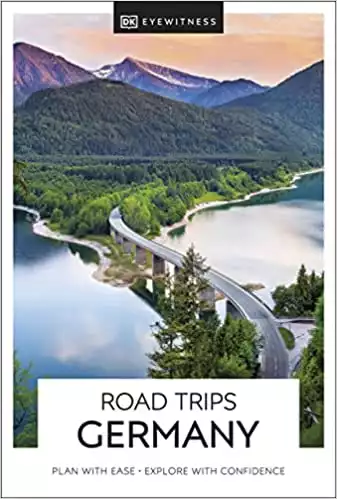
- 24 well-researched driving routes.
- Discover stunning views and hidden gems off the beaten track
- Practical tips for driving in Germany
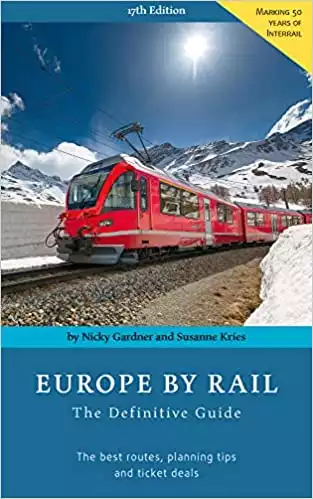
50 key routes
Tips on the best ticket deals
Fun sights to see along the routes
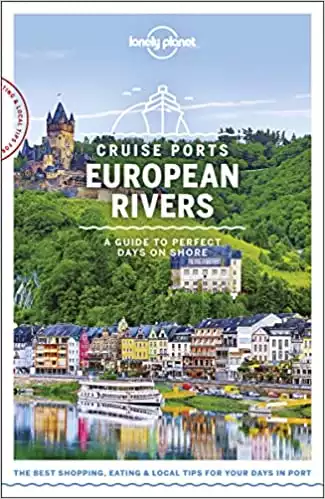
- Advice for first-timers
- Covers Germany & other European cruise routes
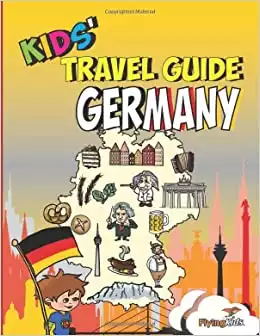
- Fun facts about Germany
- Language learning
- Coloring pages, quizzes, puzzles & journal pages
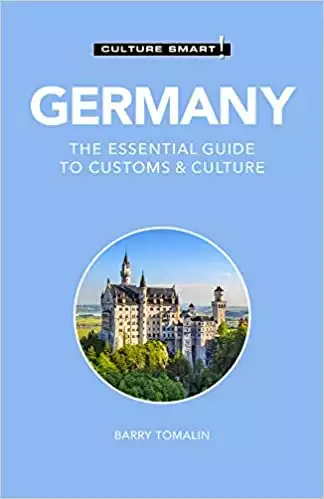
- German history
- Cultural values, traditions & etiquette
- Regional cultural differences
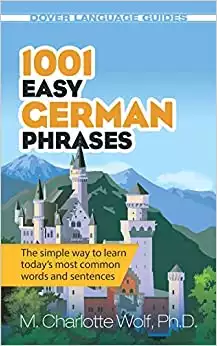
- 1,000 basic words, phrases, and sentences in German
- Small talk, asking for directions, finding a bank, ordering at restaurants
- Phonetic pronunciation guide!
How To Choose The Best Travel Guide For You
There are a lot of travel guides on the market, making it pretty overwhelming to find the right one. When choosing the best travel guide for your trip, there are a couple of things you should take into consideration.
Grab our FREE Germany Trip Planning Checklist Now!
What are your travel plans?
If you’re going on a multi-week trip across Germany, visiting several cities and regions, then the best travel guide for you will be a comprehensive general country guide on Germany.
These kinds of guides usually have multiple chapters dedicated to all the big cities and regions, making it easy to flip through whichever destination you’re going to along your trip.
On the other hand, if you’re mostly staying in a specific region or a couple of cities, then it’s better to find a regional guide that really narrows in the area you’re visiting. This way you won’t be bogged down with city information that may not be applicable to your trip.
What’s your travel style?
If you’re going on road trips, you’ll find guidebooks with specific information and helpful tips on driving in Germany, the best scenic routes, and more. Likewise, if you’re going on a river cruise, find a guide that covers that specific type of travel. There are also guides that are geared towards kids.
What’s your preferred writing style?
Do you prefer matter-of-fact, objective, no-frills writing? Or do you gain more value from reading personal guides filled with the author’s own anecdotes and experience of the city?
There are also guides that focus heavily on history, others on beautiful travel photography. Make sure to read reviews to get a gist of the style and content of the guide!

Fodor’s Essential Germany is the perfect guide for those who want insider tips on how to experience Germany like a local.
Fodor’s Travel Guides are all written and researched by local experts, who can offer you unique insights you might not find in other guides.
In this guide you’ll find fully updated information on all of Germany’s main attractions and hidden gems, which includes restaurants, hotels, and even outdoor activities.
As well as full-size street maps and beautiful photographs, you’ll also have access to multiple sample itineraries to help you make the most out of your travel time.

The Rough Guide to Germany is one of the best options for those who want a guidebook on their Kindle – it’s free with Kindle Unlimited (as of now)!
You’ll have rundowns of must-see landmarks, carefully planned itineraries, and full-color maps to navigate the streets of Berlin or Munich without the need to go online.
This guide covers a vast majority of areas in Germany, not just the major cities . If you’re spending more time in a certain region, then the detailed regional coverage will be very useful.

Rick Steves is one of the most well known travel writers from the United States. His mission is to empower Americans to go on fun and culturally enriching trips to Europe and his guidebook to Germany reflects that.
People who are traveling to Germany for the first time will find this guide very useful. It has strategic advice on how to make the most out of your budget and time with tips on how to plan a multi-week trip to different cities in Germany.
Other handy features include self-guided walking tours, a packing checklist, and a German phrasebook. This edition also has up to date detailed information reflecting the changes brought about Covid-19.
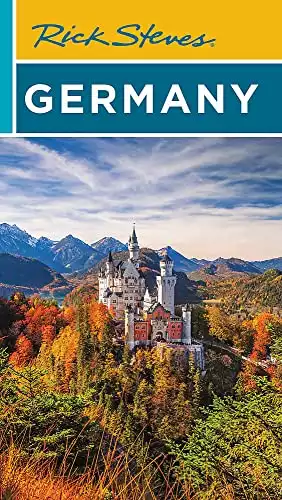
Lonely Planet has some of the best guidebooks in the market and the Lonely Planet’s Germany is no exception - it's currently the #1 best seller on Amazon.
They provide comprehensive and trustworthy information on everything you need to know about Germany, from the most visited tourist areas to less well known historic cities.
This guide makes sure to provide itineraries and honest reviews of restaurants, shops, landmarks that cater to every kind of travel style and budget.
The book is available in both digital (it’s free on Kindle Unlimited too!) and paperback versions. The digital version comes with downloadable PDF and offline maps that are great for preventing extra roaming charges, embedded links to recommendations with websites.
You can even add notes to personalize your guidebook. The paperback version is small and sleek, making it easy to bring around while traveling.
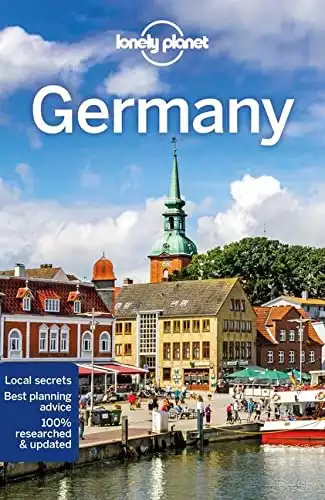
If you’re staying in Berlin for some time, then you’ll probably be spending a good amount of time walking (alongside using their excellent public transport).
And there’s no better way of getting to know a city than by walking! National Geographic Walking Berlin is the best guidebook for this.
This book contains 15 walking tours with step-by-step itineraries and detailed maps that will have you roaming and exploring Berlin like a true local in no time.

Lonely Planet just came out with their newest guide on Munich, Bavaria, and the Black Forest.
Whether you’re looking for the perfect spa town to relax along the Black Forest or celebrating Oktoberfest in Munich, this guidebook will have you covered.
Since it was just recently published, you’ll be able to find up-to-date research on travel information and what businesses are still open after light of Covid-19.
Aside from all the essential reading, there are also “what’s new” sections that feature cultural trends and new, up-and-coming areas to visit.

From wandering around quaint villages, going back in time exploring ancient castles ruins, or dining in good restaurants by scenic vineyards, the Rhine Valley is a must-visit.
It’s particularly known as a romantic destination, but every kind of traveler can enjoy it. Rick Steves’ guide to the Rhine is a great place to start planning your trip.
It includes insider travel tips on how to beat crowds and avoid tourist traps. The selective coverage also includes information on Rothenburg, a picturesque well-restored medieval city.

Lonely Planet’s Guide to Germany, Austria, and Switzerland is perfect for those whose travel plans always include day trips or road trips.
Especially if you’ve planned your itinerary with the goal of visiting neighboring countries like Austria or Switzerland, then this guide is for you.
This guide covers everything from the Romantic Road, Lake Bodensee, the Swiss Alps, Zurich, Lake Geneva, Vienna, Salzburg, and more! It features over 33 trips to take with useful advice on breaks to stretch your legs along the way, the fastest travel routes, and scenic detours.

The Lonely Planet’s Pocket Guide series are perfect for those taking shorter trips over a weekend or maybe those who have limited leisure time during business trips.
These guides are small and handy, getting down to the basics of each German city. It’s easy to use and concise, with expert advice on the top tourist destinations, neighborhood chapters, and day planners.
Click here for more information on Pocket Berlin, Pocket Hamburg , and Pocket Munich

DK Eyewitness Road Trips is ideal for those who want to explore Germany through road trips.
This guide contains 24 well-researched, easy to follow driving routes. Each lasts from 1 to 5 days, so you can choose any depending on your time and preference.
You’ll get to learn about stunning views and hidden gems off the beaten track that you can only discover on the road. It’s full of practical tips like road conditions, detours, parking info, and navigation details for GPS use.
Plus, each tour includes ideas for activities and sights along the way.

Europe by Rail is the definitive guide for planning your European trail travel journey using Interrail or Eurail.
This guide includes 50 key routes that you can follow or incorporate into your Germany itinerary.
It also contains tips on the best ticket deals, where to stay, and fun sights to see along the routes. It covers popular routes such as Glacier Express, the Rhine Valley, French Riviera, and the Scottish Highlands with information on new routes to Slovakia, Greece, and more.

River cruises have been gaining popularity, with many tourists loving the different perspective you get as you travel by water through scenic riverfront views.
Riverboats are usually much smaller than Mediterranean cruises, making for a more social experience and more frequent stops and onshore activities.
This Lonely Planet guide is perfect for those going on a European cruise through a number of different countries but who do not want to buy a guide book for each country.
It covers the following routes: Northern Rhine, Southern Rhine (France, Germany, Switzerland), Western Danube (Austria and Germany), Eastern Danube (Hungary and Serbia), the Seine (France), and the Elbe (Czech Republic and Germany).

Traveling with children to Germany for the first time can be intimidating. Kids Travel Guide Germany is here to help ease your worries!
This guide is a fun gift to give your kids as a way to cultivate their interest in traveling from a young age. Leonardo, the cute cartoon tour guide, will teach your kids fun facts about Germany and even basic German words.
It also comes with an activity book full of coloring pages, quizzes, puzzles, and journal pages to document their trip.

Nothing enriches travel experiences like immersing yourself in the country’s local culture. Culture Smart Germany shows you everything you need to know about German culture and way of life.
You’ll find chapters discussing history, values, cultural differences between regions, cultural traditions, and common etiquette to follow.
It’s great for navigating day to day life while you travel and even for more formal business trips.

This German phrase book is the ideal companion for your trip to Germany.
With more than 1,000 basic words, phrases, and sentences in German it covers every travel situation you could think of from small talk, asking for directions, finding a bank, and ordering at restaurants.
Easy to use and straight to the point, this guide will help you familiarize yourself with the German language and navigate social situations with locals. It also comes with a phonetic pronunciation guide!

What To See And Do In Germany?
If you’re not sure which guidebook will work best for you, consider where you most want to spend your time.
Germany is filled with tons of historic places to learn from, beautiful landscapes to admire, and fun cultural activities to experience. To get a gist of what awaits you in your Germany trip, let’s break it down to some of the main travel destinations in the country.
Berlin, the capital of Germany (and the largest city), is where you’ll find some of the most iconic landmarks of German history. You won’t run out of things to see from the Brandenburg Gate, the East Side Gallery, the Holocaust Memorial, the German Parliament Building (Reichstag), and many more.
For more information on the top historic places to visit in Berlin, read our guide to planning the ultimate Berlin itinerary.
This dynamic city has also undergone a lot of changes in the past decades, growing into one of the most interesting cities to visit in central Europe. Many people are drawn to the vibrant Berlin arts scene and music scene.
After all, the capital city is home to world-class museums (including some that give you a glimpse into what life was like in East Germany) and some of the best nightlife in Europe.
Plus, it’s the gateway to rugged Rügen island to the north on the Baltic Sea, historic Dresden to the south, as well as “Swiss Saxon” national park area.
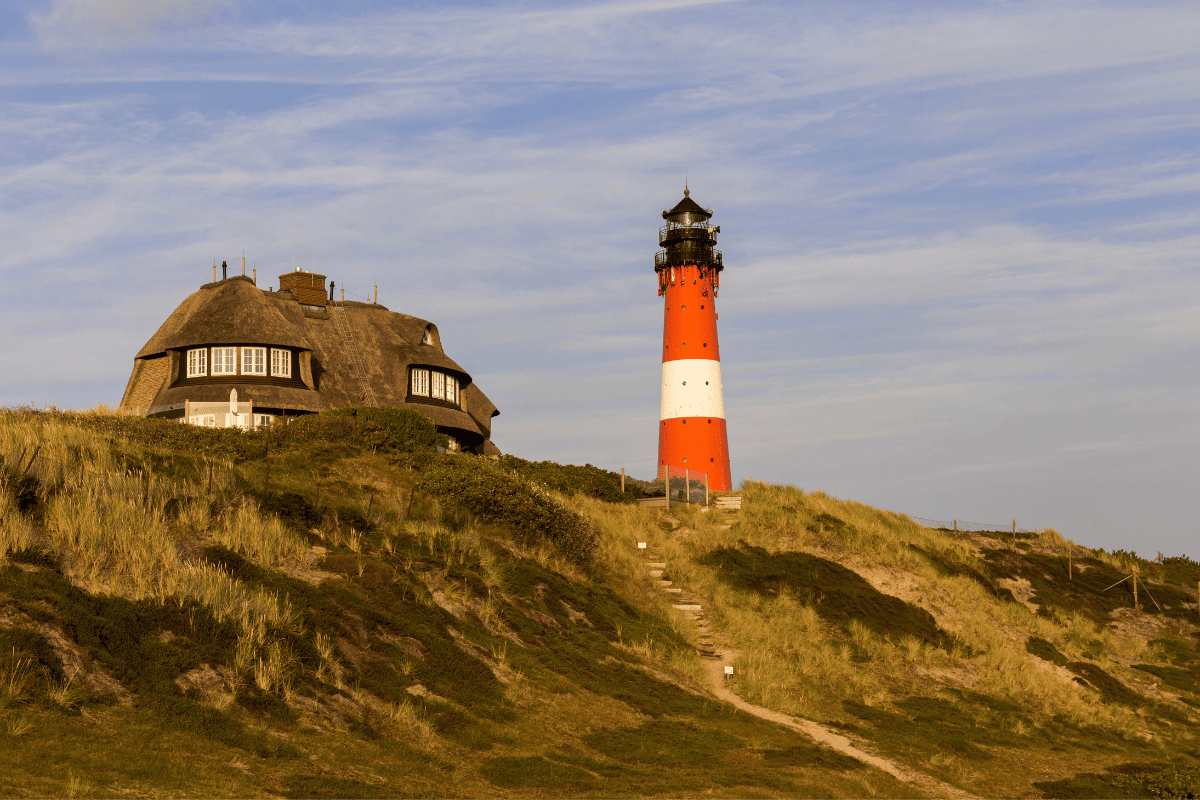
Hamburg, located on the Elbe river in northern Germany, is one of the most unique German cities. Famous for its ports, lakes, canals, and rivers running throughout the city, Hamburg shows you a different side of Germany.
Whether you canoe through the canals (super fun!) or try delicious fresh seafood after a harbor cruise, you won’t run out of fun activities to do in Hamburg. It’s one of my favorite cities in Germany!
The Black Forest is a region worth visiting for its spectacular scenery, small towns, and close proximity to France and Switzerland. It’s one of the best places to visit for those who love outdoor activities. There are hundreds of miles of hiking trails to explore and lakes and waterfalls to admire.
In-between immersing yourself in nature, you can explore picturesque smaller towns like Baden-Baden, Heidelberg, or Freiburg, and villages like Titisee-Neustadt, Triberg, and Gengenbach. You can also spend an afternoon seeing how people used to live at the Black Forest Open Air Museum.
Making your way to southern Germany, you’ll find the Bavarian Alps. For a scenic drive that makes the most out of your experience, we recommend driving south down the Romantic Road.
This route connects storybook castles , medieval towns, and breathtaking landscapes. It’s also one of the best ways to get to Neuschwanstein, the fairy tale castle that’s undoubtedly one of Germany’s most popular attractions.
A staple in all Germany itineraries is, of course Munich, the biggest city in Bavaria. It’s a popular destination for good reason – it’s a beautiful city rich with history far beyond the famous Oktoberfest. Munich (and Bavaria in general) is what most people envision when they think of Germany.
From Munich’s beer gardens, lush urban parks, and historic plazas, you won’t run out of things to see! Check out our guide on how to plan the perfect Munich weekend itinerary here.
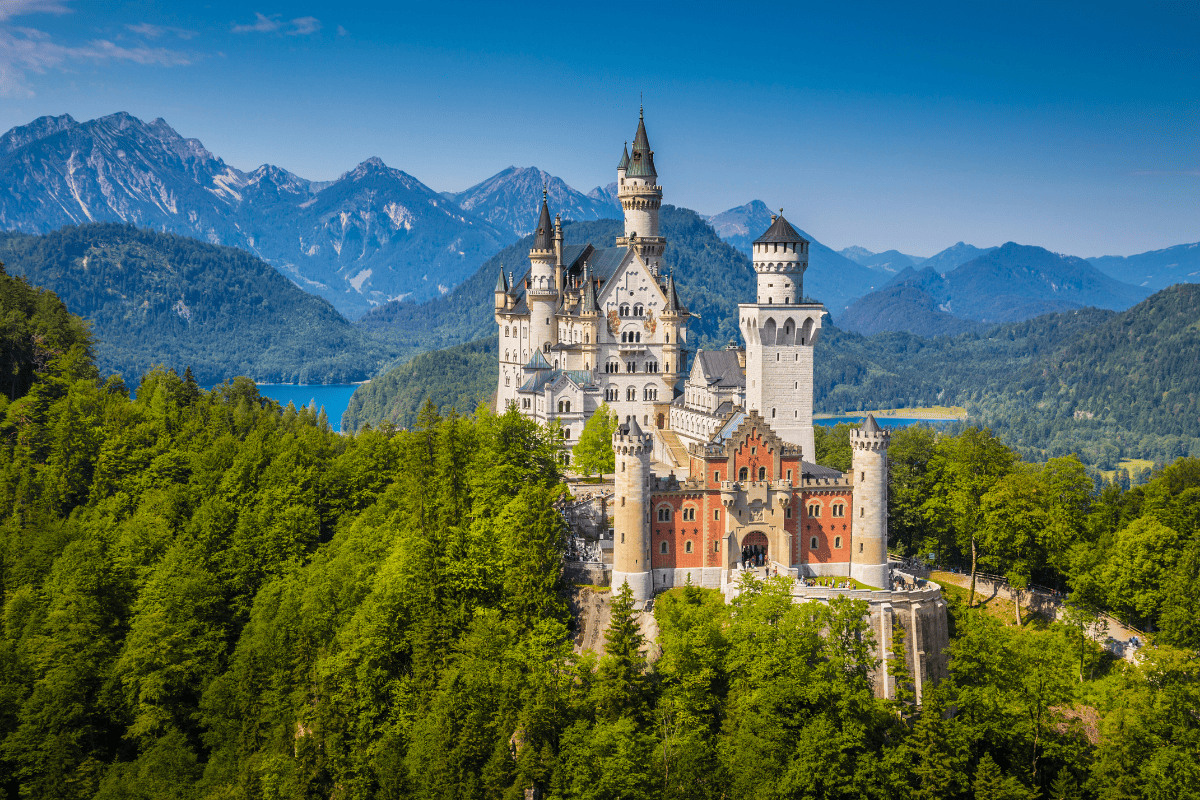
Before leaving southern Germany, make sure to stop by Lake Constance (Bodensee in German). Found along the country’s border of Austria and Switzerland, this region with its lakeside small towns is a great place for sunny summer holidays.
In Central Germany, you’ll find the Rhine Valley which holds great historical and cultural importance as a UNESCO World Heritage Site. It’s also a popular romantic destination where you can do activities like wine tasting in hillside vineyards and going on a cruise on the Rhine river. We recommend exploring the area on a boat tour to bring you to quaint villages and ancient castles.
Cologne is a great gateway city to the Rhine Valley. The city’s old town is home to the famous Cologne Cathedral and it’s a great walkable area with lots to see.
Another nearby major city is Frankfurt. Though you may only know Frankfurt as Germany’s financial capital or home to one of the world’s busiest airports, the city is fun to explore for its modern architecture, the contrasting historic old town, and interesting museums. Read our guide to spending a day in Frankfurt here or how to day trip to the many castles in the area.
We hope this gives you a good idea of all the exciting things to see and do in Germany. We know there’s a lot to take into consideration. That’s why we also prepared a step-by-step guide on how to plan the perfect Germany vacation that answers everything from where to stay, what cities to visit, and how to get around!
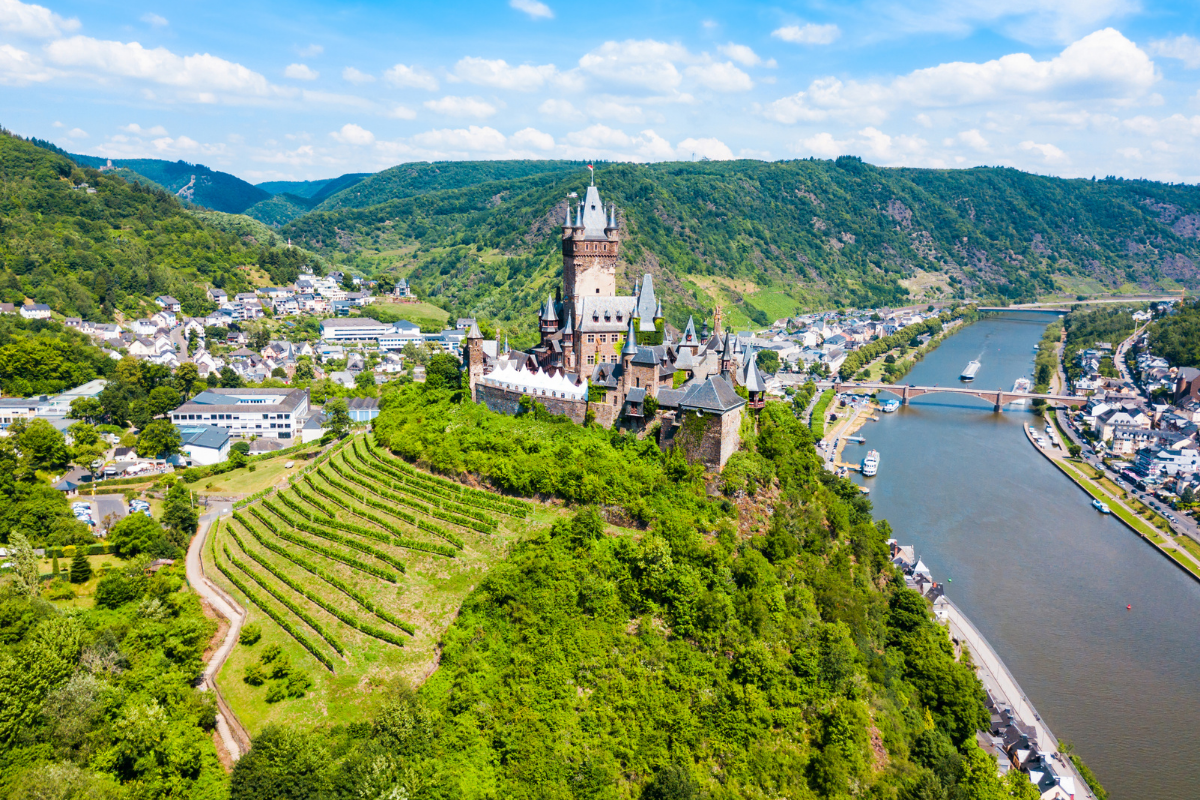
When Is The Best Time To Go To Germany?
We get this question a lot! The best time to go to Germany totally depends on what kind of experience you’re looking for. There’s really no bad time to visit because each season has something great and unique to offer!
During summer, you’ll get to enjoy warm and sunny weather. The long days are perfect for sightseeing since the sun sets as late as 10:00-10:30 pm. Be aware that you won’t always be guaranteed clear, blue skies, though. Some days can be rainy or windy but that kind of weather usually doesn’t last longer than a couple of days.
On the flip-side, it can also get really hot during heat waves, and you won’t find A/C in all restaurants and hotels.
Another downside is that since it’s peak season, streets and tourist attractions can be much more crowded with families from all over the world traveling during summer break. Prices for tickets and accommodations are also at their highest so we recommend booking reservations as early as possible.
Winter can also be a beautiful time to visit, but you’ll obviously have a very different experience. Snow, cold weather, and short days with the sun setting as early as 5 pm are just some of the things that you can expect.
Luckily, you’ll have the festive bright lights and cozy atmosphere of Christmas markets to make up for it. It’s also an ideal time to visit if you love winter activities like skiing or sledding.
Fall can be a good time to visit, especially if you want to participate in Oktoberfest festivities which take place late September to early October. The autumn weather means it’s still pleasantly enough for strolls, though you’ll have colder nights as you approach winter.
Weather during spring can be a bit of a toss-up. Some days can bring light breezes and warmth but other days can be gloomy and rainy. But you’ll get to see cities come alive and locals spend more time in parks or beer gardens as flowers bloom and outdoor activities kick into gear.

Grab your FREE 10 Germany Gems Cheatsheet Now!
Cate has been traveling to Germany for 30+ years. She has lived in Germany, taught college German, and has a PhD in German Applied Linguistics. She loves helping travelers plan their dream trips to Germany!
Similar Posts
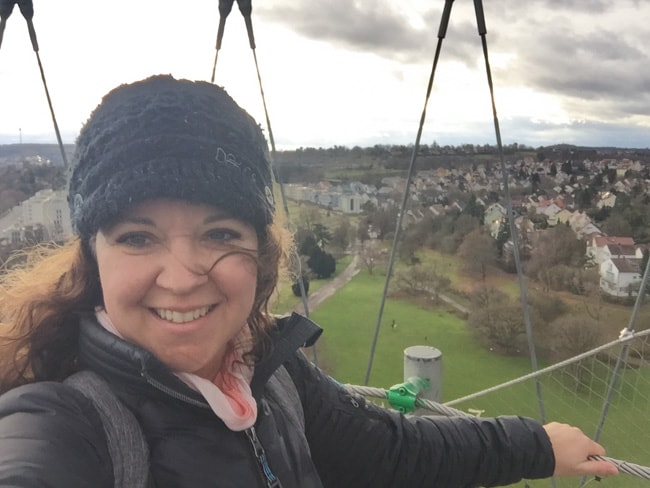
Best Travel Wraps And Scarves For Your Germany Trip in 2024

Best German Translator Apps for English Speakers

Best German Street Food
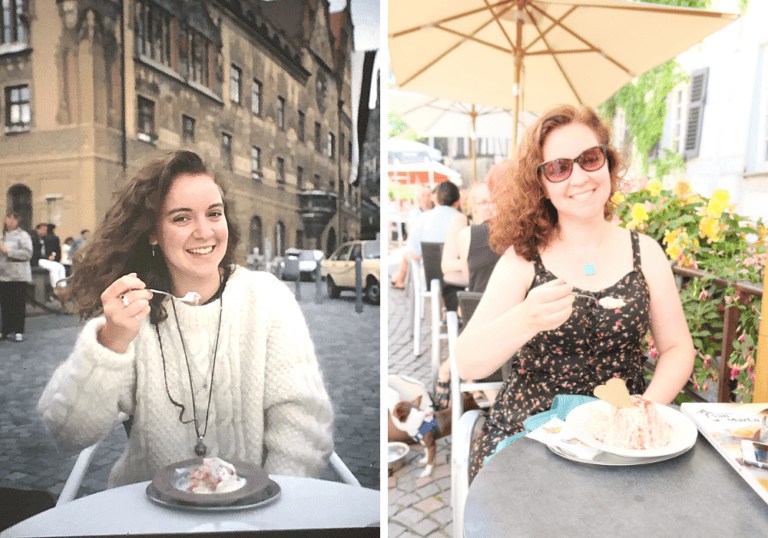
Recreating 25 Old Photos From Living And Traveling In Germany

Best Electric Travel Tea Kettle in 2023

2023 Black Friday Deals For Germany Travel
Here’s how we can help you plan your perfect trip in 2024.
GERMANY TRAVEL PLANNER: Just getting started? Have questions about Germany’s confusing train tickets or how to find the best guided tours? Not sure which parts of Germany should be in your itinerary (and what to leave out)? Our Germany Travel Planner answers those questions and more via how-to videos, our interactive Germany Planning Map, City Cheatsheets, and MUCH more. Click here to unlock the best of Germany the easy way!
GERMANY TRAVEL CONSULT: Feeling overwhelmed? Itinerary just not coming together? Wonder if a few tweaks would take your trip to the next level? Book a Mini or Full consult with Cate! She’ll help you create or tweak your itinerary, recommend train tickets/passes, hotels, things to do, guided tours, show you how to buy train tickets, orient you to specific cities, help you plan out day trips, and answer your Germany travel questions.
ACCOMMODATIONS: We recommend using Booking.com since they have widest range of accommodations available from hostels, boutique hotels, luxury chains, aparthotels, at the best prices. Check out our accommodation guides for specific recommended hotels.
WHAT TO PACK: If you’re bringing your phone, be sure to bring this plug adapter , this power bank , and this wrist strap . They’ve been lifesavers for us! You can see our other packing essentials here and here .
TICKETS & TOURS: For guided tours, day trips, private tours, and skip-the-line tickets, Get Your Guide is our go-to!
TRAINS & BUSES: To research train schedules and buy tickets or a Germany Rail Pass, we recommend the official Deutsche Bahn (German Rail System) website (and download their DB Navigator app). For buses, look at FlixBus , which offers tickets for routes within Germany and to other European countries. FlixBus is often cheaper than trains but can take longer.
Leave a Reply Cancel reply
Your email address will not be published. Required fields are marked *
Save my name, email, and website in this browser for the next time I comment.

A 1st Timer’s Guide to Germany Travel: Where to Go, When to Go & More!
Last Updated: August 30, 2024
*FYI - this post may contain affiliate links, which means we earn a commission at no extra cost to you if you purchase from them. Also, as an Amazon Associate I earn from qualifying purchases. Check out our Privacy Policy and Disclosure. for more info.
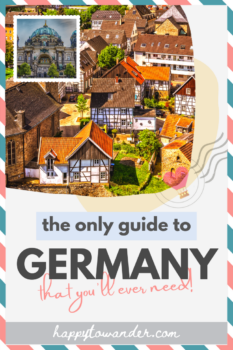
While most commonly associated with beers, bratwursts and tight leather pants, Germany is a country full of delightful finds that extend far beyond the stereotypes.
From dreamy castles and fairytale towns to awe-inspiring nature and sprawling cities, Deutschland has a little something for every kind of traveler… although I’ll admit the leather pants are also great.
I first visited Germany on a 6 week backpacking trip across Europe, and as I sipped my comically large beer under the toasty Berlin sun, I felt a strange sense of calm and belonging.
Spurred by this hunch, I moved to Munich. One study abroad later, I loved it so much I stayed for over 5 years… enough to gain so much giddy enthusiasm for this country that I’ve become a thoroughly insufferable dinner guest.
But my social life’s loss is your gain, my friend… because today, I’ve decided to channel all my Deutschland fangirl tendencies into this concise Germany travel guide filled with all my top tips, itineraries, and recommendations.
I hope you find it helpful, and of course, feel free to ask any more questions in the comments section or on Instagram here.
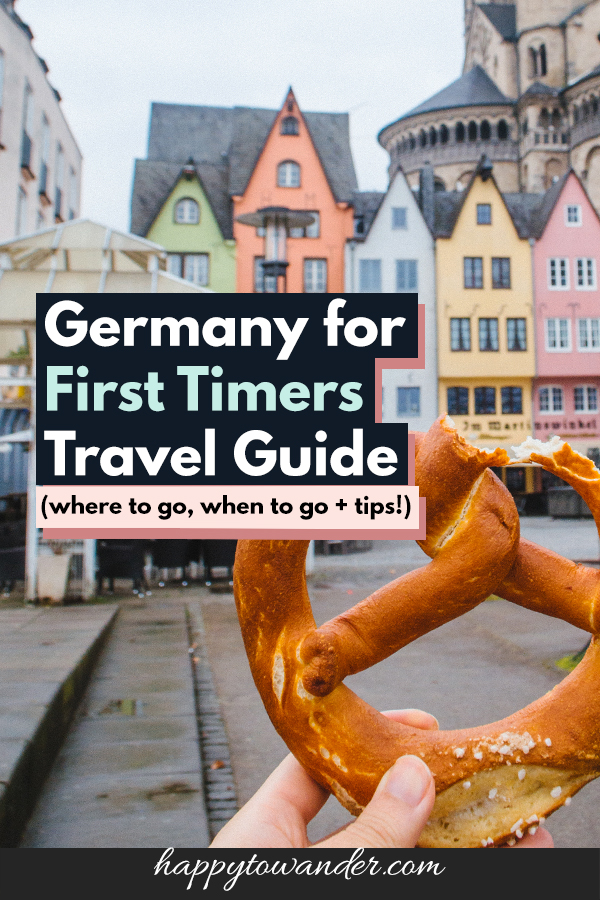
Save this Germany Travel Guide for Later!
I promise it’ll come in handy!
Traveling to Germany Basics
Currency: Euro
Language: German, although accents and dialects vary wildly! In larger cities and tourist hotspots, most Germans also speak excellent English.
Getting Around: Trains, buses and flights are plentiful and affordable in Germany – my best tip is to use Omio to compare options easily. Having a car is ideal for visiting smaller towns, more remote locations and numerous destinations in a short amount of time, but is otherwise not needed for big cities.
Curious about trains in Germany? Read my full step by step guide to German train travel.
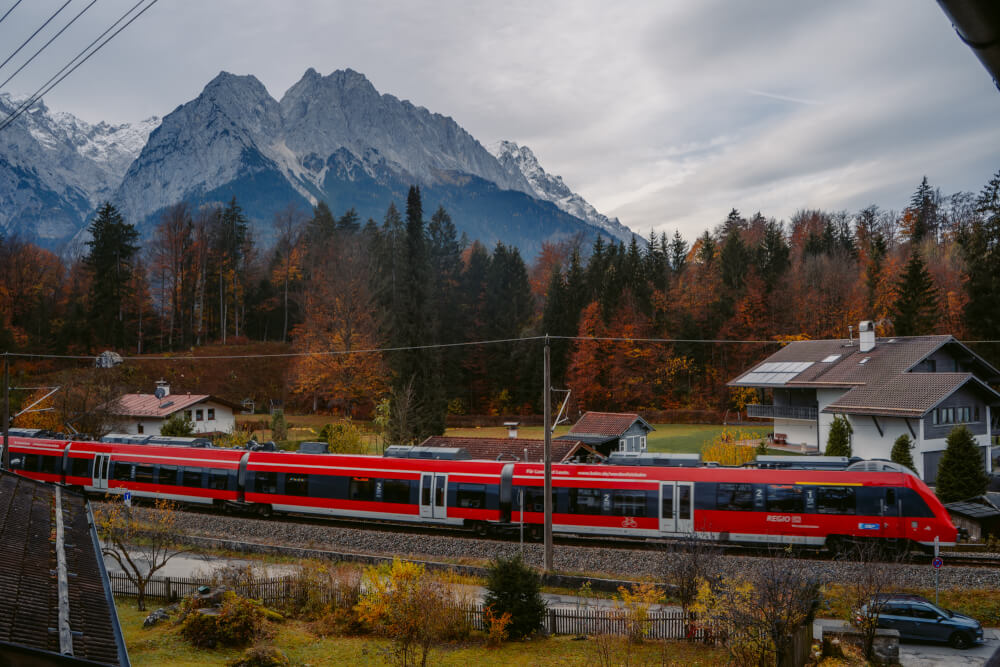
Germany Highlights (By the Season)
- Winter: Christmas markets, skiing & alpine sports, Karneval and Fasching season (Carnival), Starkbier (Strong beer) season
- Spring: Cherry blossoms in Bonn , Frühlingsfest (Springfest) in Munich
- Summer: Hiking, Beer Garden season, summer festivals/celebrations
- Fall: Oktoberfest and other Volksfests, the world’s biggest pumpkin festival in Ludwigsburg, the Wurstmarkt (world’s largest wine festival)
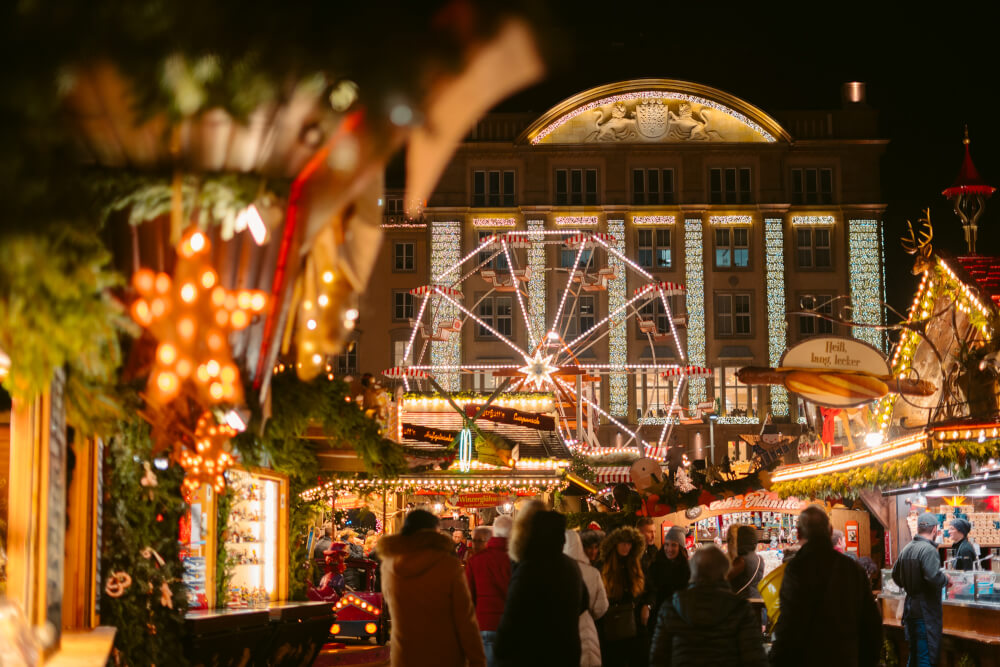
My Favourite Places in Germany
Not sure where to go in Germany? Here are some places I can definitely recommend!
Let’s get my mega-biased opinion out of the way first – Munich is the city I called home for 5+ years, and I couldn’t recommend it more… especially if you’re obsessed with beer like I am. This is the birthplace of Oktoberfest after all!
There are lots of fun things to do in Munich , like hopping around the city’s sprawling museum district (many only cost 1 euro on Sundays!), eating up the best Bavarian food that Munich has to offer or soaking in the wealth of historical sites scatered around the city.
It’s also an ideal base for many epic day trips. Going from Munich to Neuschwanstein Castle (AKA the real life Sleeping Beauty castle) takes only 2.5 hours. Or, if you want to visit glorious Salzburg from Munich (AKA the birthplace of Mozart and setting of Sound of Music), that’s only 1 hour by train.
Why visit Munich when you travel Germany:
- Amazing beer & beer festivals
- The English Garden – one of the largest city parks in the world
- Beautiful palaces and museums
- Easy base for amazing day trips to the Alps
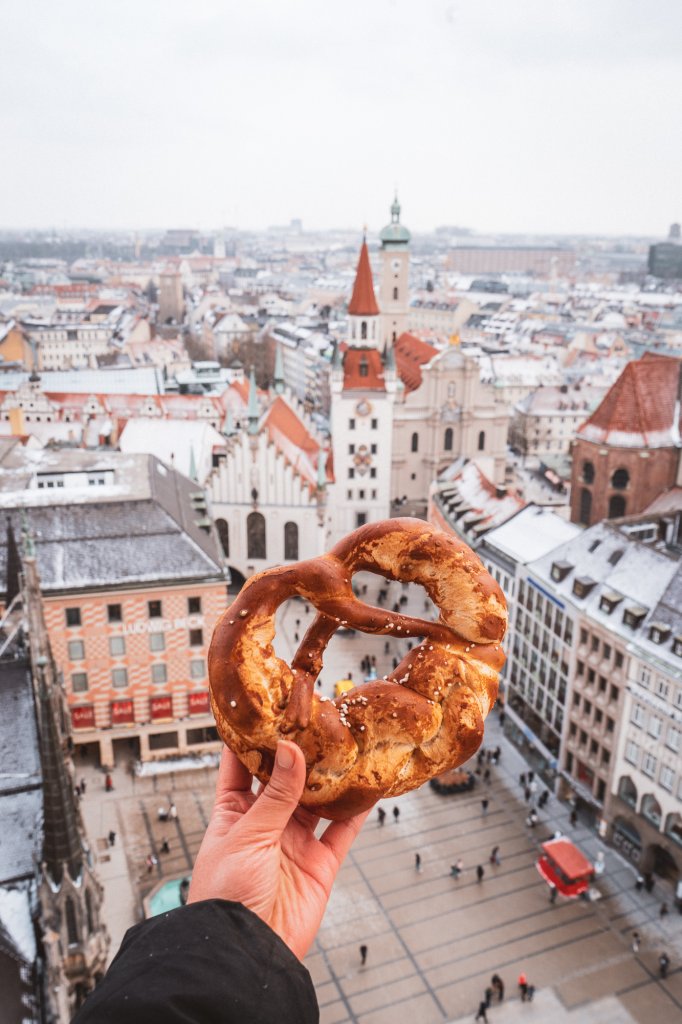
Berchtesgaden National Park
If it’s natural beauty you’re after, Germany’s Berchtesgaden National Park (near the border to Austria) is a must-visit.
Everything here is breathtaking – from the shimmering turquoise lakes and snow-flecked mountains to the adorable Berchtesgaden town center.
And, if you’re up for it, this is the ideal place to enjoy a typically Bavarian wellness weekend.
Why visit Berchtesgaden National Park when you travel Germany:
- Stunning hikes and scenery
- The glorious boat ride on Königssee to see the equally stunning Obersee
- Historic sights like Hitler’s Eagle’s Nest

Hands down one of my favourite places to visit time and time again is Berlin.
This endlessly fascinating city is home to incredible museums, delicious food, and a unique culture that makes it distinct from the rest of the country, despite its status as capital!
Whether you’re a history nerd, an avid partyer, or a famished foodie, Berlin has plenty to offer.
Why visit Berlin when you travel Germany:
- Fascinating history
- World-class museums and attractions
- A thriving nightlife and food scene
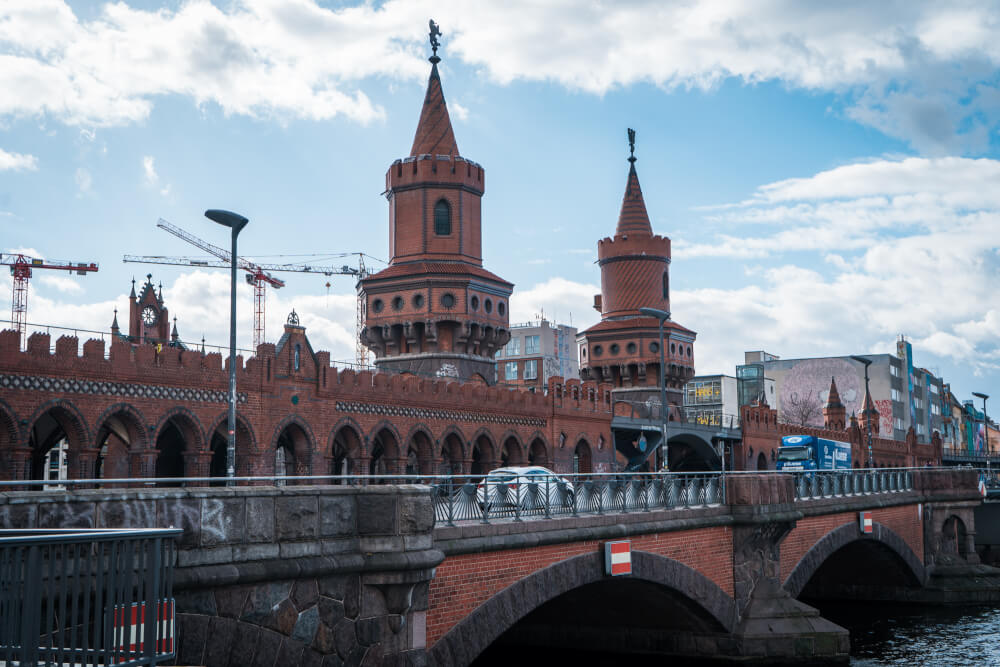
Franconia is a glorious region in northern Bavaria that is divided into Lower, Middle, and Upper Franconia.
To me, it’s one of the most underrated regions in Germany for international visitors, with an abundance of fairytale half-timbered houses, amazing beer, and unique natural landscapes.
Here are some places in Franconia that are absolutely worth visiting:
- Franconian Switzerland
- Würzburg (still haven’t been yet!)
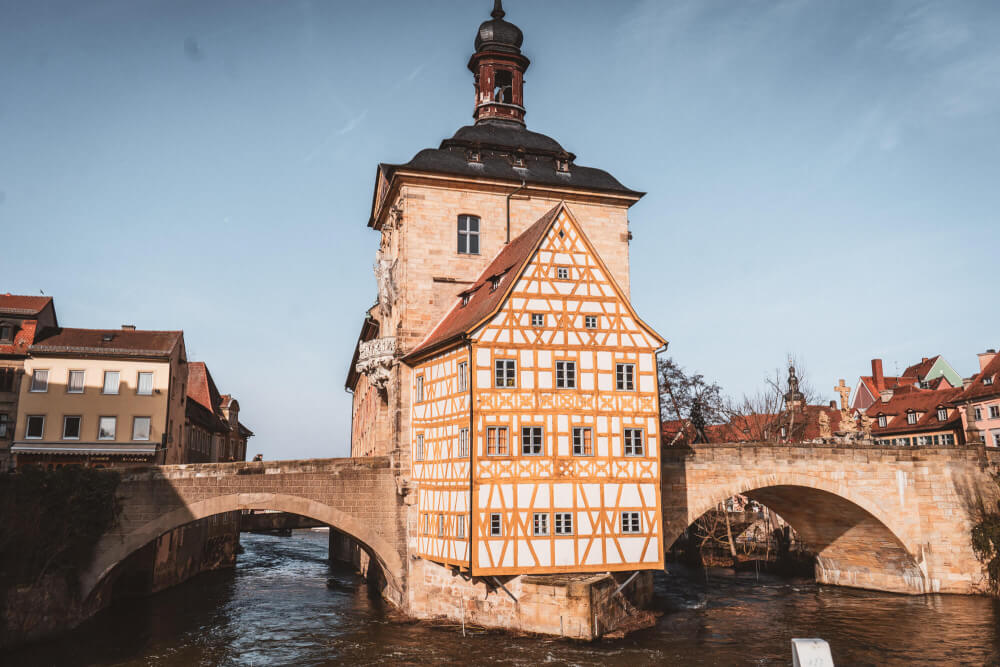
Perhaps the most idyllic entry of this list is Monschau, a sleepy but gorgeous village found near the border to Belgium.
I was lucky enough to come here for Christmas markets a few years ago, and I loved it so much, I skipped the train I’d pre-booked just so I could spend a few more hours there.
Picturesque half-timbered houses clustered around a roaring central river… oh, and a castle on a hill. Because of course they have one.
Why visit Monschau when you travel Germany:
- Super friendly locals
- Picture-perfect scenes at every turn
- Christina might cry if you don’t
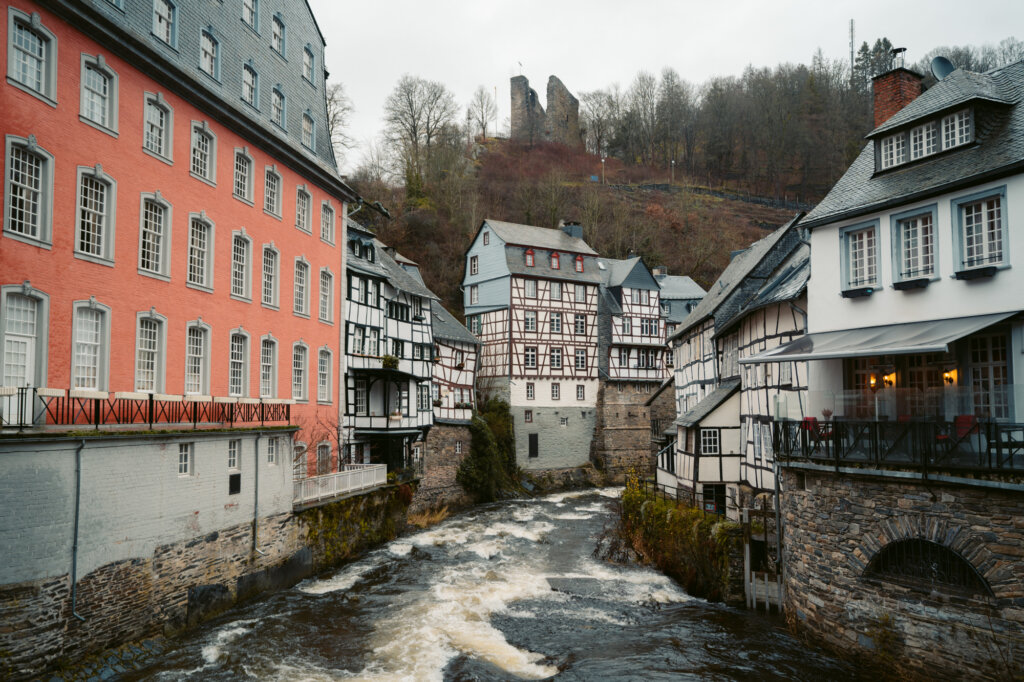
Hamburg is an amazing city I’ve had the chance to visit a few times now. It’s a lifestyle city that reminds me a lot of my hometown, Vancouver.
Home to a mix of classic and modern architecture (including the coolest opera house in the world!), as well as Germany’s #1 attraction – the adorable Miniatur Wonderland, Hamburg has a lot to offer tourists, but perhaps the best way to enjoy it is with a nice beer and sunset along the Elbe.
Why visit Hamburg when you travel Germany :
- Amazing architecture like the Elbphilharmonie
- Fresh and tasty seafood (and a booming foodie scene!)
- A fun, vibrant vibe
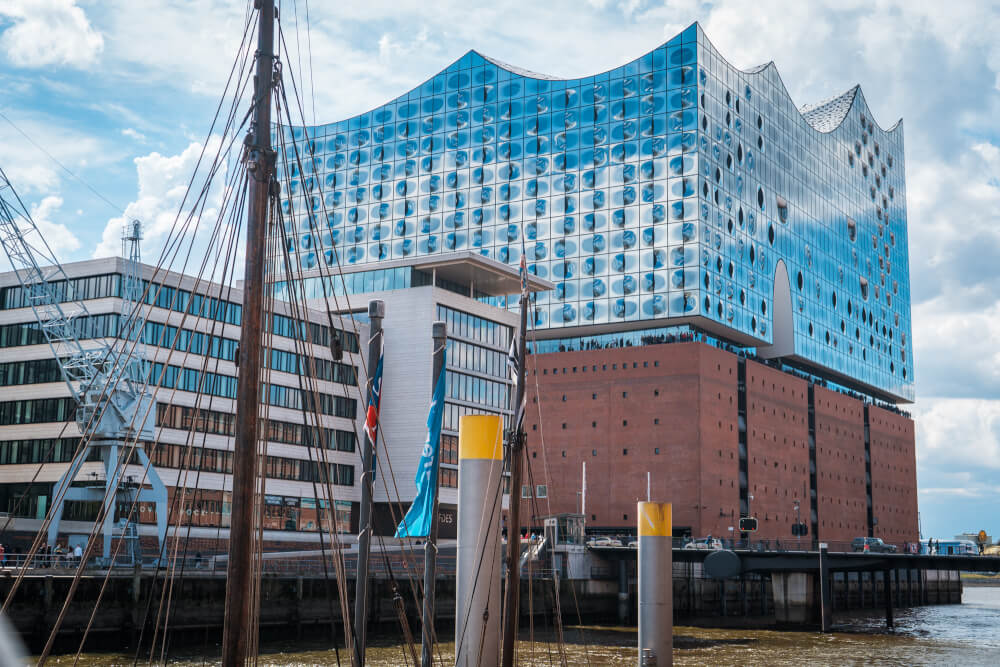
Dresden is one of the most beautiful cities in Germany, and its beauty is all the more astounding when we consider that much of the city was destroyed completely in WWII.
After decades of reconstruction however, Dresden once again shines with its former glory, establishing itself as one of the most important cultural hotspots in Germany.
… and all only a stone’s throw from Saxon Switzerland, one of the most beautiful natural wonders in the country!
Why visit Dresden when you travel Germany :
- Stunning architecture and sights
- World-class museums and culture scene
- Its jawdropping Christmas market (the oldest one in the country!)
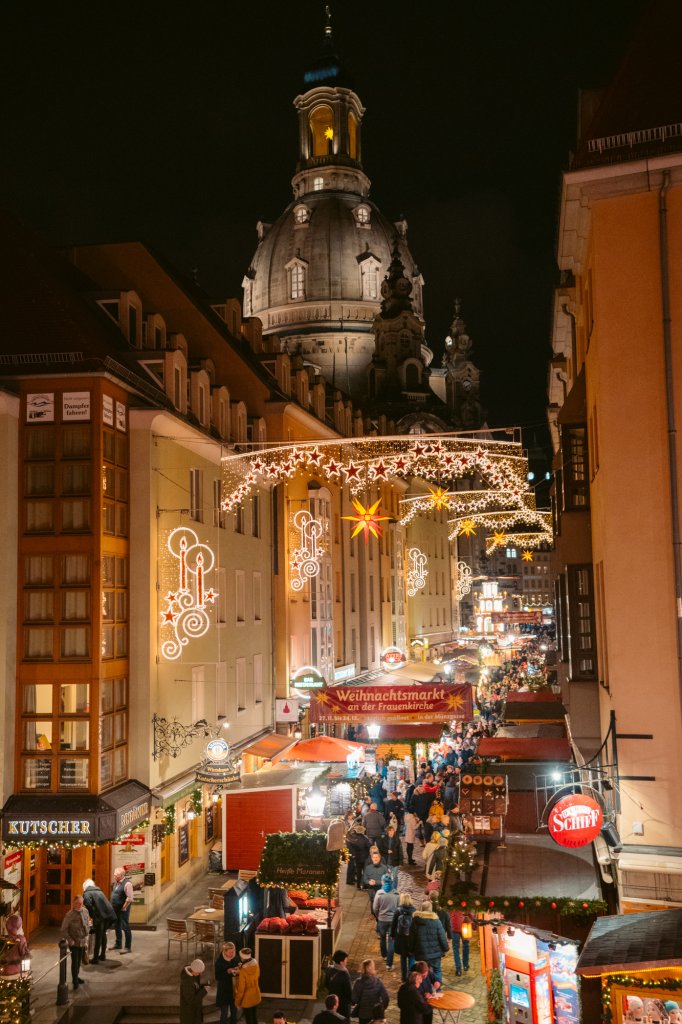
Stuttgart (and its Surrounding Area)
Stuttgart is the biggest city (and capital) of the German state Baden-Württemburg.
It’s perhaps best known as the ‘cradle of the automobile industry’, which explains why it’s home to not just one, but two car-centric museums: one belonging to Mercedes-Benz, and one to Porsche.
Besides cars though, the area around Stuttgart offers up some of the cutest small towns you can find in Germany, all easily reachable by public transport, meaning you get the best of all worlds during a visit here.
Why visit Stuttgart and the surrounding area when you travel Germany:
- Fairytale towns like Esslingen, Ludwigsburg, and Tübingen
- Stuttgart’s Stadtbibliothek, one of the most unique and beautiful libraries in the world
- Lots of fun events like Stuttgart’s Christmas Market and the Cannstatter Volksfest
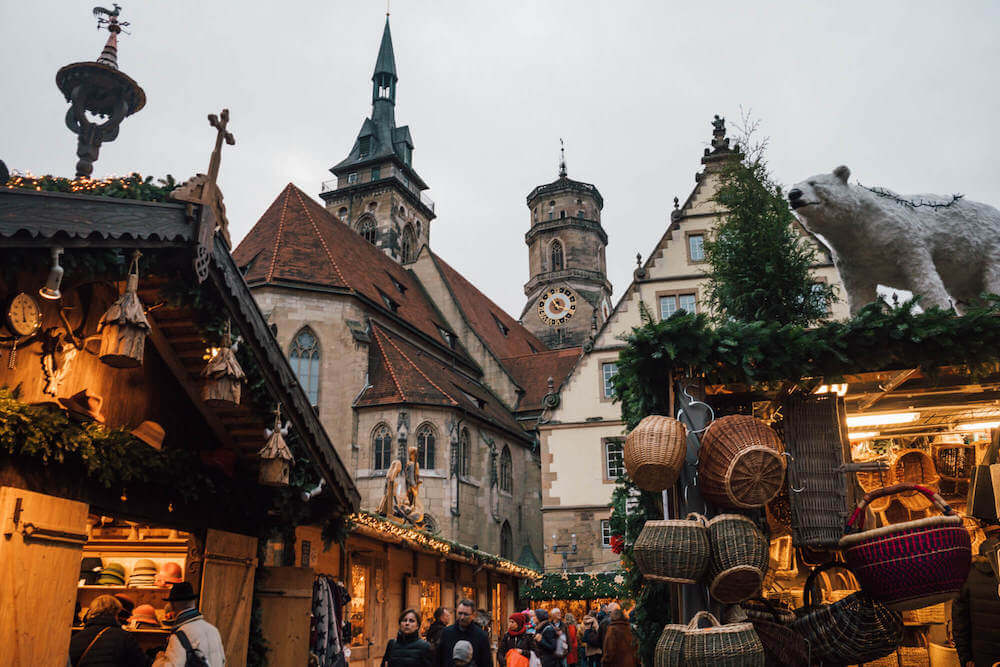
Thuringia is a state often overlooked by international tourists, but if you’re looking for a truly charming German escape, its capital Erfurt makes an excellent choice.
This beautiful city is famed for its unique Krämerbrücke, which is a gorgeous medieval bridge lined with residential buildings.
But that’s not all – there’s also an impressive cathedral, an imposing fortress, and surprises waiting on every corner… quite literally, because Erfurt is the HQ of the German children’s channel KiKA, and there’s plenty of fun statues of famous characters scattered around town.
Why visit Erfurt when you travel Germany:
- Krämerbrücke, the longest inhabited bridge in Europe
- Quirky and fun children’s channel sculptures all over the city
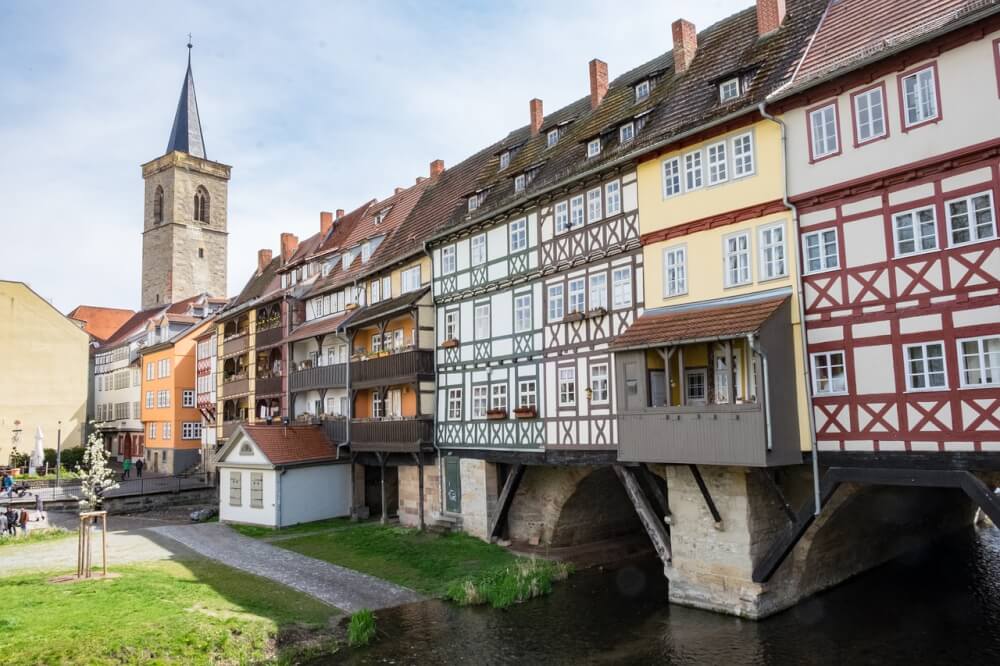
Cologne, to me, is a city synonymous with fun and celebration. While at first glance, it might not rank among the “prettiest” places to visit in Germany (much of it was destroyed in the war), it still boasts several impressive landmarks and sights, like the epic Cologne Cathedral.
Where Cologne really shines though is during special events – the Christmas markets here are some of the best I’ve been to in my entire life, and the Karneval celebrations… well, those are truly epic!
Why visit Cologne when you travel Germany:
- Bucket list events like the Cologne Christmas Market and Kölner Karneval
- The iconic Kölner Dom (Cologne Cathedral), one of the most famous churches in the world
- Fun-loving locals who are among the friendliest I’ve ever encountered in Germany
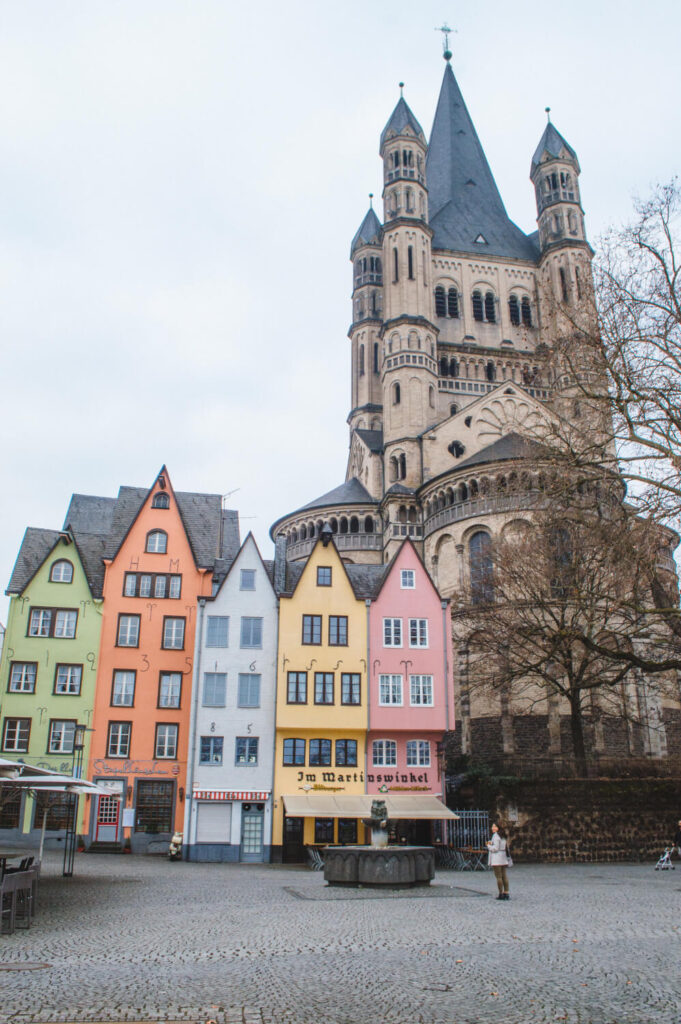
Last but not least, we have Hannover, a city which (in my opinion) is one of the most underrated cities in Germany where tourism is concerned.
Locally, people often joke that Hannover is one of the most boring cities in Germany, but I don’t think that’s true at all. One quick look and you’ll find a stunning palace within the city, an architecturally impressive Town Hall (with a unique elevator offering epic views), and a cool laidback vibe that many compare to what Berlin was like decades ago.
Here are some awesome things to do in Hannover.
Why visit Hannover when you travel Germany:
- Its gorgeous New Town Hall
- The stunning Herrenhausen Palace and its gardens
- A fun, laidback city vibe
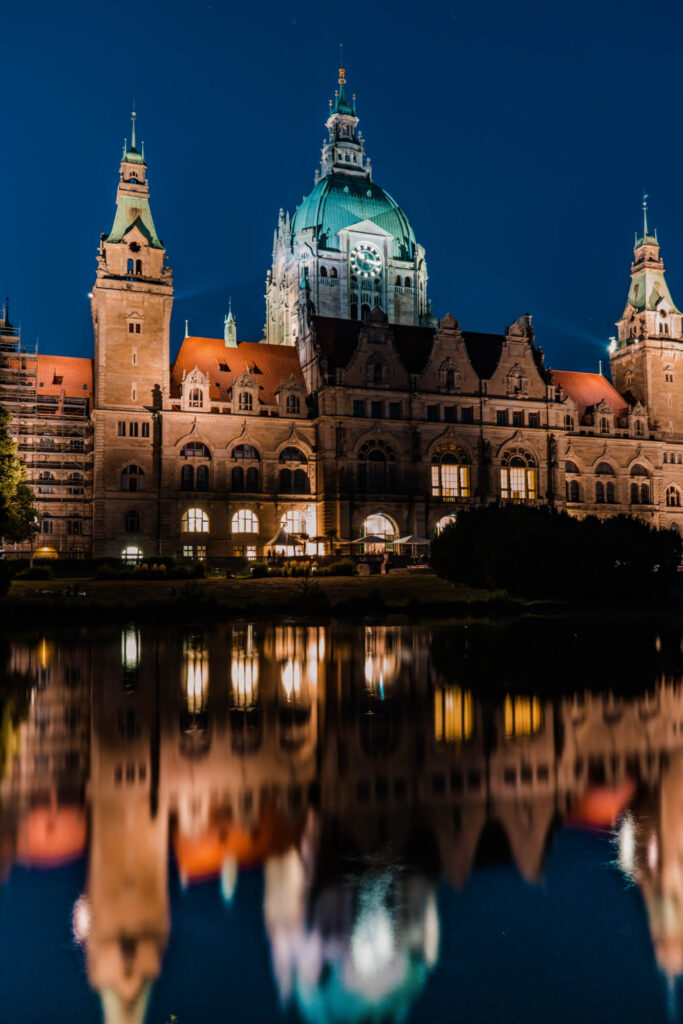
Bucket List Experiences in Germany
Germany is full of incredible bucket list experiences. Here are a few of my favourites:
Christmas Markets
German Christmas markets are the stuff of bucket list dreams.
If you adore Christmas, a German Xmas market trip needs to make it on your bucket list, because nobody captures Christmas coziness and joy quite like the Germans do.
The best part (besides the droolworthy assortment of German Christmas Market foods ) is that you’ll find Christmas markets in just about every city, town, and even the smallest of villages, each with their own unique take on traditions.
Trust me, you could never get bored of visiting these.
Here are some full guides to the Christmas markets I’ve visited in Germany:
- Munich’s Christmas Markets
- Berlin’s Christmas Markets
- Cologne’s Christmas Markets
- Esslingen Christmas Market
- Ludwigsburg Christmas Market
- Karlsruhe Christmas Market
- Düsseldorf Christmas Market
- Nuremberg Christmas Market
- Essen Christmas Market

Oktoberfest
Trust me – Oktoberfest , AKA the world’s largest beer festival, is reason enough to make a trip to Germany.
Typically celebrated annually in Munich, this is one of the most incredible events in the world, with millions of people attending, millions of beer served, and a guaranteed recipe for making memories to last a lifetime.
… If you can remember anything after 5L of beer that is.
Read my full Oktoberfest guide for more details.
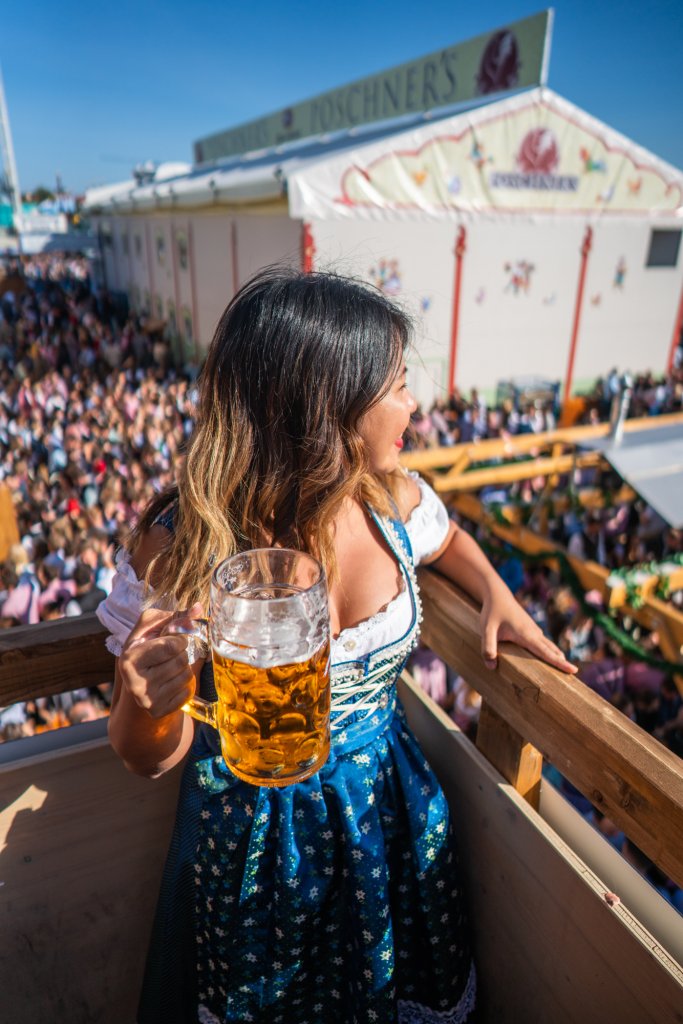
Visiting Fairytale Castles
If you love castles, I recommend avoiding Germany……. because you might just combust from sheer fangirl joy.
Seriously, Germany is every castle lover’s kryptonite, with elegant palaces and fairytale castles in the thousands. If you’re a Disney gal like me who grew up dreaming of happily ever afters, pack a ballgown and head to Germany ASAP.
I promise you won’t be disappointed.
Here are some castles that you must visit in Germany:
- Neuschwanstein Castle
- Nuremberg Castle
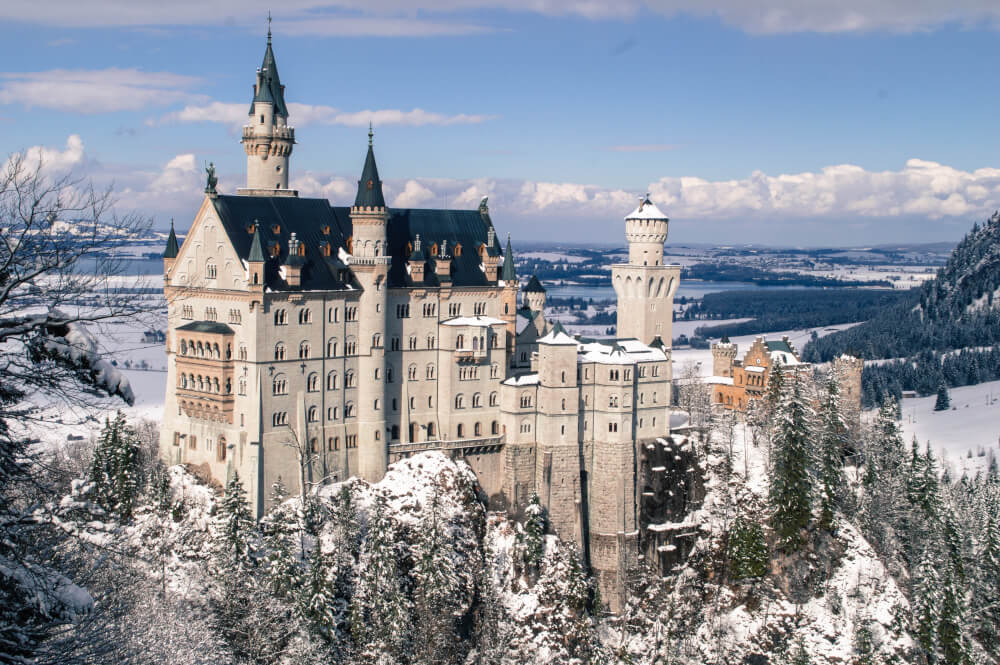
The Cherry Blossoms in Bonn
The cherry blossoms in Bonn (also the birthplace of Beethoven and gummy bear legend, Haribo) are absolutely spectacular, and 100% worth visiting in Spring time. In fact, I’d even say they’re one of the best things to see in Europe at Spring time.
Yes, you, too, can come frolic in these tunnels of pink! Here is my guide on where to find cherry blossoms in Bonn.
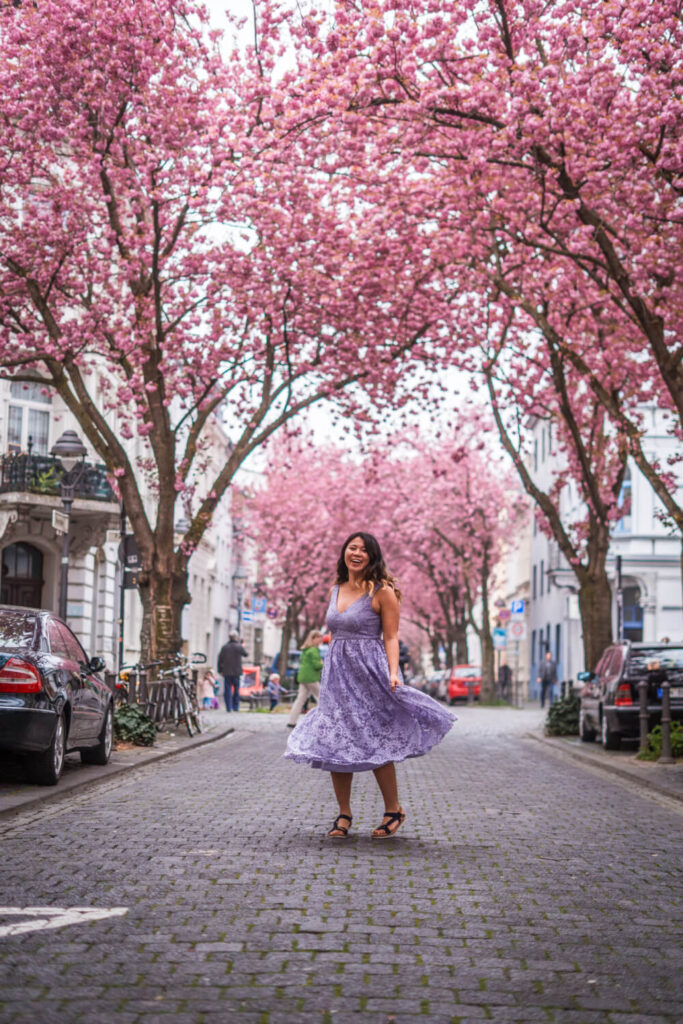
Karneval, Fasching, Etc.
Carnival Season is one of the best times to visit Germany if you’re looking for a party.
The grandest celebrations take place just before Lent, and are celebrated throughout the country, although the festivites in North-Rhine Westphalia are probably the best known.
My top recommendation? Go celebrate in Cologne, where the Kölner Karneval draws millions of visitors every year.
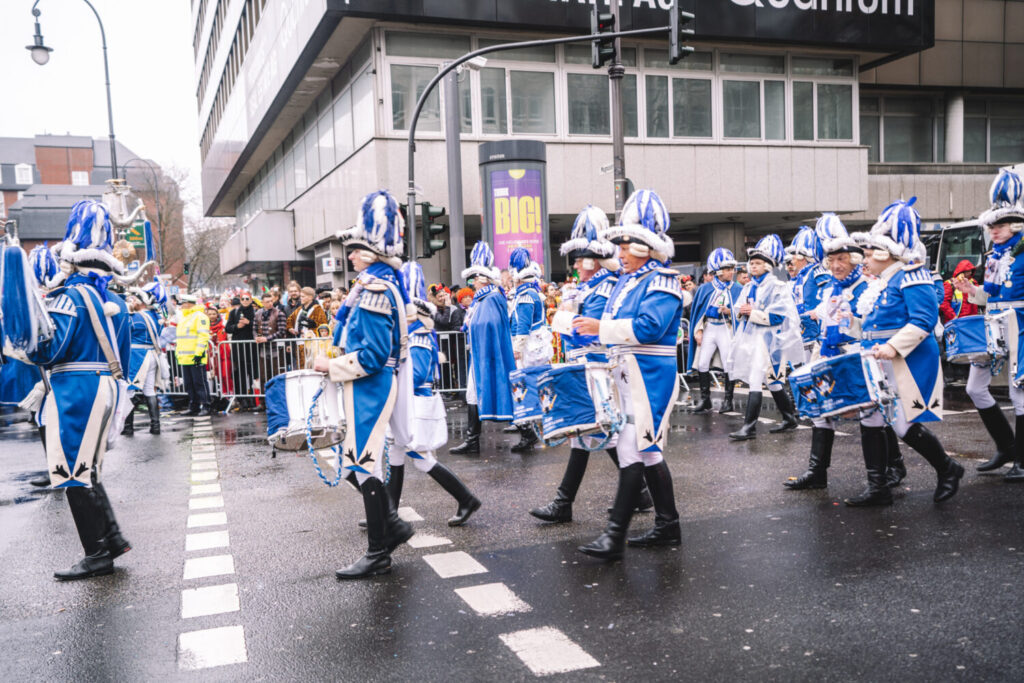
My Recommended Germany Itineraries
Germany is a huge country with a massive diversity in sights… so how can you organize your time efficiently and make the most of your trip? Here are some German trip itinerary ideas…
Germany itinerary ideas for a taste of everything:
- Southern Germany Classic: Munich, the Allgäu (for Castles!), Garmisch Partenkirchen, Berchtesgaden National Park, Stuttgart & Area, Black Forest
- Eastern Germany Classic: Berlin, Dresden, Saxon Switzerland
- Western Germany Classic: Aachen, Monschau, Eifel National Park
- Northern Germany Classic: Hamburg, Bremen , Lübeck, Kiel, Sylt
- The Rhine River Classic: Mainz, Koblenz, Burg Eltz, Cochem, Bonn, Cologne, Düsseldorf
- The Harz Mountains Experience: Harz Mountains, Goslar, Wernigerode, Quedlinburg
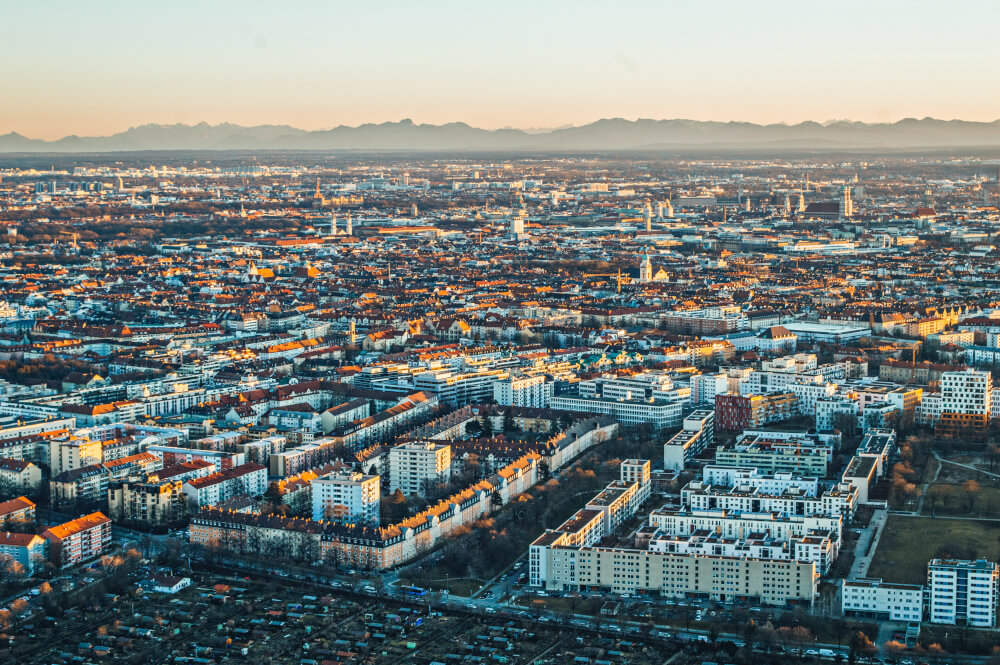
Germany itinerary ideas for city breakers and culture hunters:
- The Big City Tour: Berlin and Munich (a 4 hour express train connects them)
- The BaWu Special: Stuttgart, Ludwigsburg, Tübingen, Esslingen, Heidelberg
- The Bavaria Special: Munich, Nuremberg, Bamberg, Würzburg, Bayreuth
- The Saxony Special: Leipzig, Görlitz, Dresden
- The Rhine City Hop: Bonn, Cologne, Düsseldorf
- The Romantic Villages Hop: Würzburg, Dinkelsbühl, Nördlingen, Rothenburg ob der Tauber, Füssen

Germany itinerary ideas for nature lovers:
- Southern Germany Nature Itinerary: Berchtesgaden National Park, Garmisch-Partenkirchen, the Black Forest and Lake Constance (Bodensee)
- Bavaria’s Best Nature Itinerary: Berchtesgaden National Park, Garmisch-Partenkirchen, Munich’s Lake Region, Franconian Switzerland, Danube Gorge
- Eastern Germany Nature Itinerary: Dresden and Saxon Switzerland National Park

My Top Germany Travel Tips
- If you’re overwhelmed by transport options, Omio is a great resource for comparing trains, buses and flights in Germany at the same time.
- If travelling by train, look into group discount tickets like the Bayern Ticket which give you unlimited train travel for one day on regional trains. It can save you a TON of money.
- If you are traveling to multiple countries nearby (i.e. Switzerland), a Eurail pass might save you money.
Accommodation:
- Booking.com is a great place to search up hotels, and filtering by Free Cancellation allows you to book without paying upfront
- Airbnb can be a very affordable alternative for longer stays/bigger groups
Attractions and Tickets:
- GetYourGuide is a great site for finding tours and attraction tickets
- City passes like the Munich City Pass , Berlin Pass , and the Cologne Card can save you a LOT of money if you plan to visit many tourist attractions in a short time
- If you’re trying to find specific info about a place, try using Google Translate to search in German because German versions of sites always have more info
If you’re past the planning stage and heading to Germany soon, make sure you read this before you go:
- Hilarious must-knows before you visit Germany
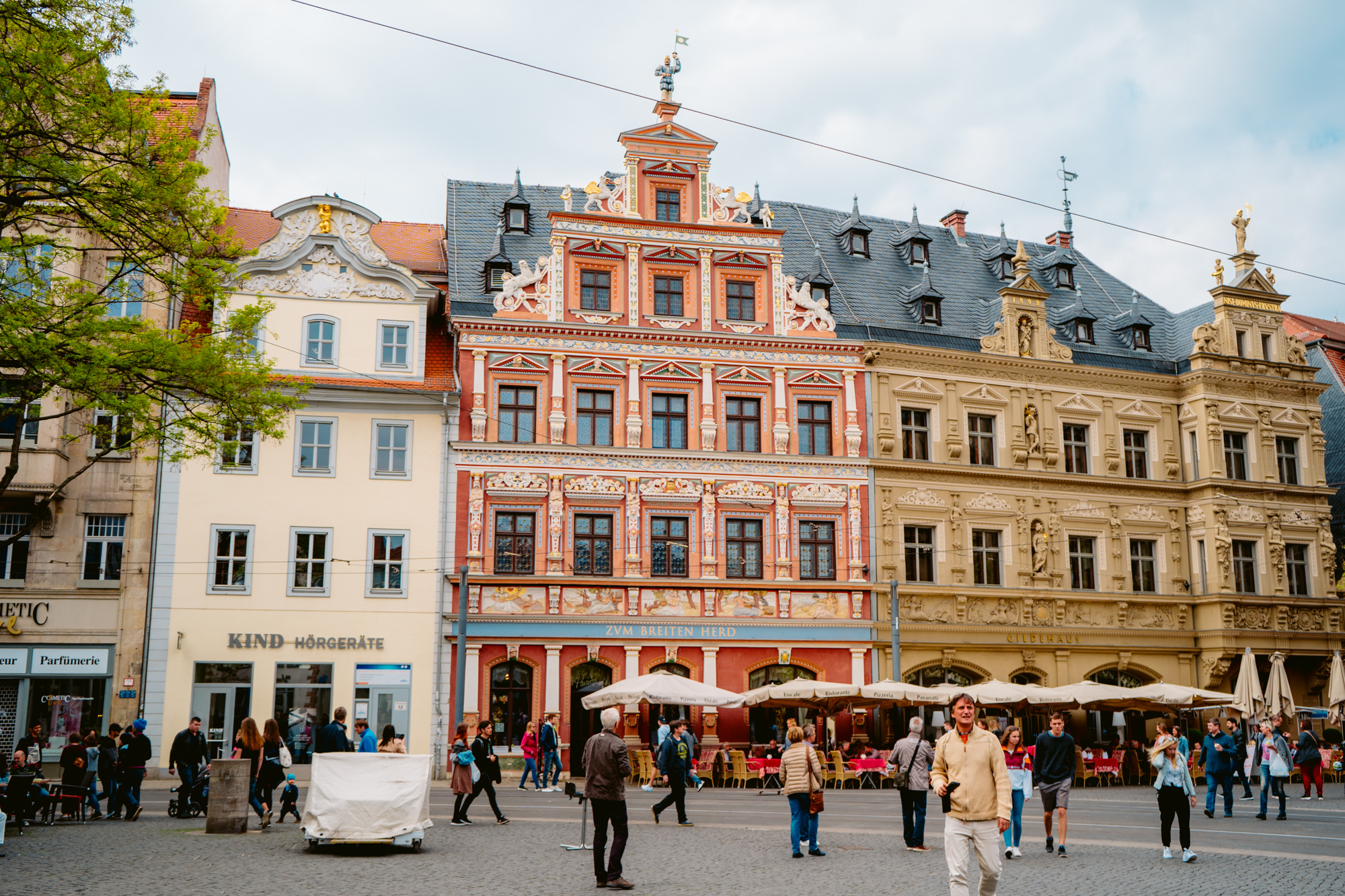
More Germany Travel Reads
Feeling inspired to visit Germany after reading all that?
As you can (probably) tell, I’ve written extensively about Germany.
So, here are some more articles that might pique your interest:
- Unique Things to do in Germany (That You Can’t Do Anywhere Else)
- The Best Christmas Markets in Germany
- Hilarious Must-Knows Before You Visit Germany
My Go-To Travel Favourites:
🧳 Eagle Creek: My favourite packing cubes
💳 Wise: For FREE travel friendly credit cards
🍯 Airalo: My go-to eSIM
🏨 Booking.com: For searching hotels
📷 Sony A7IV: My (amazing) camera
✈️ Google Flights : For finding flight deals
🌎 WorldNomads: For travel insurance
🎉 GetYourGuide: For booking activities
4 thoughts on “A 1st Timer’s Guide to Germany Travel: Where to Go, When to Go & More!”
i found myself reading almost every post in your website for days and days and i ABSOLUTELY LOVE IT and adore and thank you for spending so much time and effort to make it so helpful, informative and fun to read. you have helped me plan my trip to munich in december and i cant wait to visit just because of your enthusiasm 🙂
We would like to Thank you for sharing such a beautiful blog! Very informative.
This Germany Travel Guide truly captures the multifaceted beauty of Deutschland, a country that has something to offer to everyone, from culture enthusiasts to nature lovers. Your personal anecdotes from living in Munich make it come alive, making me yearn for a taste of that amazing beer you’ve mentioned, and a wander around the English Garden! The varied seasonal highlights emphasize how Germany is a year-round destination, offering uniquely charming experiences, from the festive winter Christmas markets to the lively summer festivals. It’s heartening to know that navigating around the country is convenient, making it possible to explore its picturesque small towns and vibrant cities. This guide is a treasure trove for anyone planning to travel to Germany – it gives a well-rounded view of the country, infused with personal insights, which makes it even more valuable. I’m particularly intrigued to visit Munich, the city you so passionately call home.
As a Berliner, I can’t agree more with this guide. Germany truly is a delightful mix of tradition and innovation, natural beauty and urban charm, hearty cuisine and diverse cultures. Moving around in Germany is indeed quite convenient thanks to the well-organized public transportation system, including trains, buses, and trams. And yes, English is widely spoken in major cities, so communication shouldn’t be a problem for travelers. As for the varied dialects across regions, it just adds to the unique charm of exploring this beautiful country. Safe travels, fellow adventurers!
Leave a Comment Cancel reply
By using this form you agree with the storage and handling of your data by this website. *
Germany: The perfect destination with beautiful nature and cultural attractions for every taste
Privacy settings.
Here you will find an overview of the types of cookies used on the website. You can set your consent for each category individually. Further information can be found in the privacy policy .
- Essential Cookies For the use of the website with all functions (e.g. user settings, watch lists, etc.)
- Statistics Statistics Cookies collect information anonymously. This information helps us to understand how our visitors use our website.
- Marketing In order to provide you with the best possible offer in cooperation with our partners, we use marketing tools. For example, in order to use our chatbot, you must activate this setting.
- External contents Required for viewing external media and third-party content. The provider may set cookies for its part. The respective data protection regulations of the provider apply.
- Inspiring Germany
- Cities & Culture
- Nature & Outdoor Activities
- Royal Palaces & Castles
- Experience & Enjoy
Current highlights
- Sustainable travel
- Barrier-free travel
- Easy language
- Federal states
Old Towns with UNESCO World Heritage status
Discover now
A 48-hour trip is full of possibilities
16 highlight natural landscapes, enjoy vegan and eco-sustainable city getaways, 54 unesco world heritage sites and so much more, castles and palaces: fairytale film settings, classical art museums: genuine masterpieces, the latest trend: travelling out into the countryside by train., must-see museums, read our latest articles here, bamberg: where history meets coziness, clean country living: farm holidays, get out of the city and into nature: 8 tour tips, 11 impressive castle hiking adventures, cycling with electric power: 7 discovery tours, enjoy car-free retreats: 10 holiday islands, cities with amazing zoos: wildly good attractions, excellent hiking experiences in quality regions, outstanding museums with the highest praise, university cities: youthful vibes and colorful atmosphere, capitals of culture: a grand entrance on the european stage, hotspots of automobile history, baroque cities: travel back in time to the 17th and 18th centuries, bauhaus: follow in the footsteps of this world-famous art school, football hotspots: cities with an extra kick, action and adrenalin: tours for adventurers.
Aerial view of the Dauner Maar in the Volcanic Eifel ©AdobeStock (RalfenByte) Geological time travel: land of volcanoes To the overview
Experience nature and national parks as completely accessible
Pilgrimage: slow down, meditate, reflect, along the magic of peaceful lakes and wild river landscapes, romantic or fairytale: german holiday routes, the world of german animals: more than fox and deer, top spots for astronomy fans: starry skies, 16 highlights in germany, from medieval banquets to the song of the nibelungs, a journey back in time to the baroque era, top tips for special holiday experiences, where world history was written, dine and sleep in regal style, this is the taste of germany, wine experiences from the ahr to württemberg, craft beer: hop heroes everywhere, germany has a (wine) queen, an a to z of health and wellness, health spas and health resorts - a little time out, wine hikes: 5 regions for connoisseurs, discover german originality, simply feel good, cultureland germany, 35 years since the fall of the wall, chemnitz: european capital of culture 2025, caspar david friedrich, germany’s top 100 survey, journey of discovery by train, travel from austria to germany with öbb, travel from switzerland to germany with sbb, from france to germany at high speed, barrier-free, experience germany barrier-free, all four seasons enchant in their own way.
The sun is warming the air, the days are getting longer, everywhere things are budding and blossoming: it's spring in Germany - time for getaways, blossom festivals, asparagus feasting and popular Easter traditions.
Summer At Last: Beer Gardens, Swimming Fun, Strawberry Ice Cream
Golden sunshine, colourful forests: the Indian summer can also be found in Germany. An ideal time for active holidaymakers and wellness fans. And for epicures, since this is harvest time.
Winter is the favourite season for any romantic. Outside, snowed-in forests and frozen lakes beckon. Inside, it feels cosy with baked goods, mulled wine and candlelight.
Follow us on Instagram
@germanytourism
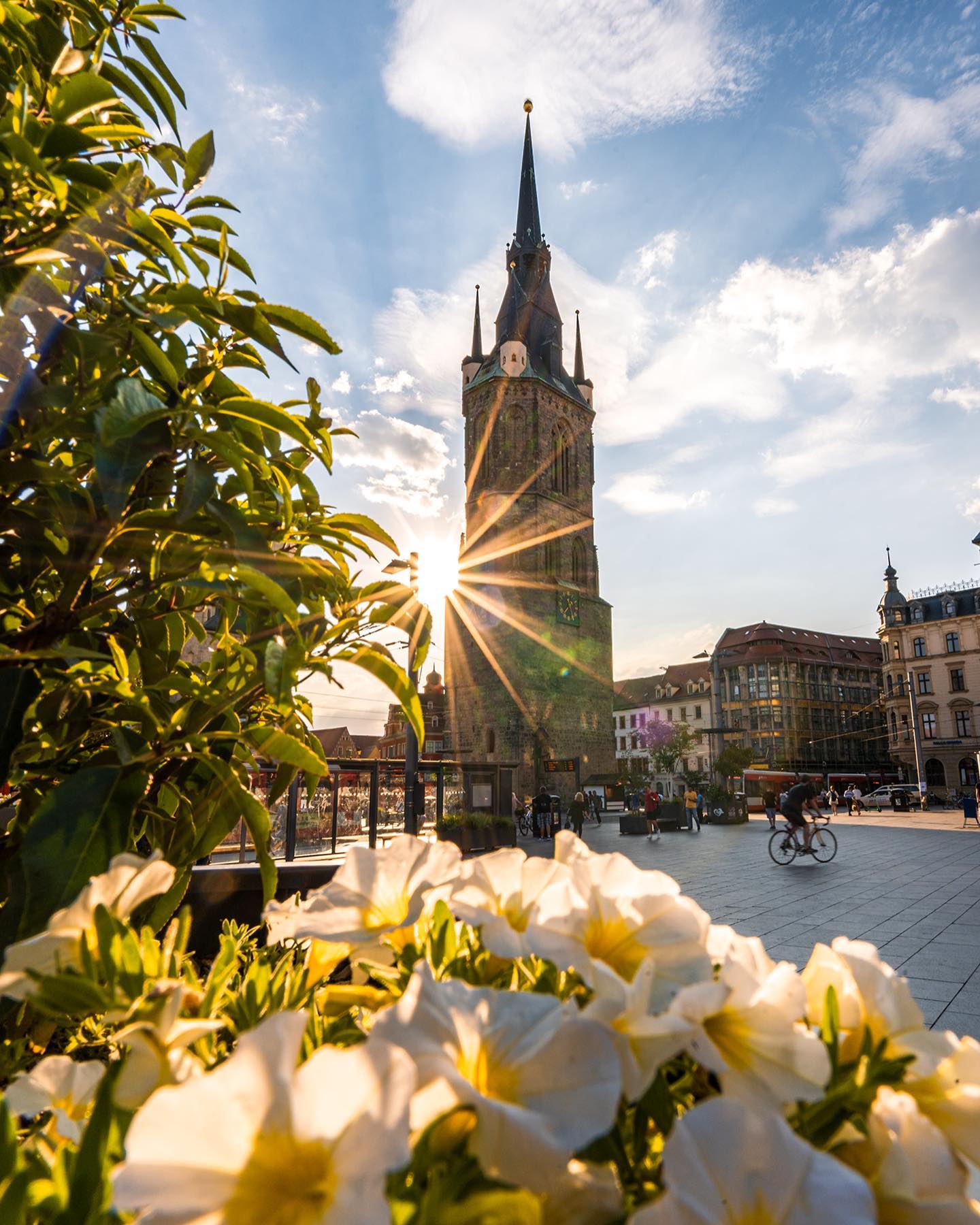
Discover Germany
You're almost there
You will shortly be receiving an email to confirm your subscription. Please remember to click on the verification link so we can authenticate your email address.
We look forward to sending you all the latest news and information about Germany.
You have clicked on the confirmation link. Your registration is now complete. You will now begin to receive our newsletter.
We're sorry to see you go...
You have been unsubscribed from the Destination Germany newsletter. Feel free to continue using our digital channels. We hope to see you again soon!
Your participation has been confirmed.

Germany Footsteps
Spectacular Germany 10 Day Itinerary For Your Perfect Vacation 🥰
Take a captivating ten-day journey through Germany, where each city tells its own unique story woven into the fabric of history, culture, and stunning architecture. From the lively beer gardens of Munich to the fairy-tale charm of Rothenburg, this itinerary will take you to vibrant cities and quaint towns that showcase the heart of Germany.
As I planned this 10-day Germany itinerary, I was drawn to the incredible variety of experiences each destination offers. You’ll wander through the medieval streets of Rothenburg, admire the impressive Nuremberg Castle, and take in the breathtaking views from the Berlin TV Tower. Every stop along the way is rich with history, waiting to be explored.
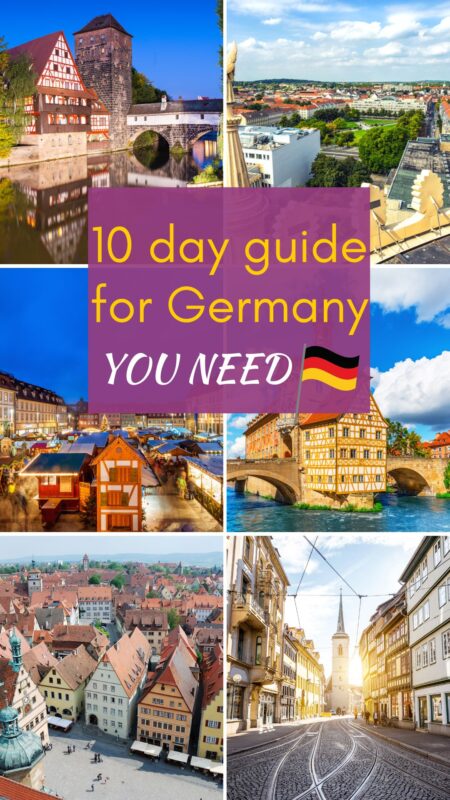
Along the route, you’ll visit iconic sites like the Berlin Wall and the beautiful Sanssouci Palace in Potsdam, while also discovering hidden gems in charming places like Bamberg and Erfurt.
This Germany itinerary 10 days combines renowned attractions with tranquil moments in picturesque settings, ensuring you experience the vibrant mix of tradition and modernity that defines Germany.
Join me on this unforgettable adventure, where each day holds the promise of new discoveries and unforgettable memories with this details Germany 10 day itinerary!
Traveling to Germany? Click here to download your free Germany Trip Planning checklist . We’ll help you get ready for your trip!
Don’t miss the best hotel savings in Germany here >>
Table of Contents
Incredible Germany 10 Day Itinerary
Now that you have a sense of the incredible journey ahead, let’s walk through the detailed 10 day Germany itinerary that will guide you through each day of your adventure in Germany. This carefully crafted plan outlines where to go and what to see, ensuring you make the most of your time in each city.
From must-visit attractions to local dining recommendations, I’ve included everything you need to navigate your 10 day trip to Germany with ease. Whether you’re a history buff, a foodie, or simply looking to soak in the beautiful scenery, this itinerary will help you uncover the best experiences that Germany has to offer, one day at a time.
Get ready to explore the highlights and hidden treasures of Munich, Rothenburg, Nuremberg, Bamberg, Erfurt, Berlin, and Potsdam!
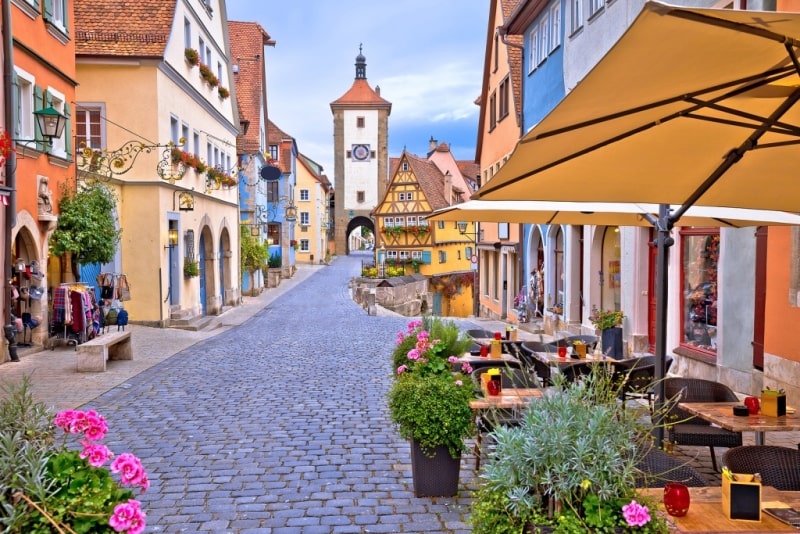
Note that this 10 days in Germany itinerary moves fairly fast! If you are someone who wants to see and experience the most of every day, you’ll LOVE this itinerary.
If you prefer to take things slower, cut back this itinerary. Removing Rothenburg would take away some of the travel time (and the hassle of multiple trains if you aren’t driving), but it is also a highlight. Otherwise, I recommend cutting Bamberg and Erfurt stops and giving yourself an extra night in Nuremberg to slow things down. You do have four nights in Berlin at the end where you can take it easier though.
This itinerary has been designed to be completed by car or train. The only thing that is complicated by train is Rothenburg. It takes 3-4 trains to get to Rothenburg and another 2-3 trains when you travel onwards. The train rides themselves are not long, but if you have much luggage, this may not be fun. This stretch would certainly be easier by car.
If you are traveling by train but wish to simplify this, you could add a night to Nuremberg and day trip from there to Rothenburg – so you still see Rothenburg but don’t need to transport your luggage.
Let’s start this 10 day tour of Germany.
Day 1: Arrival in Munich
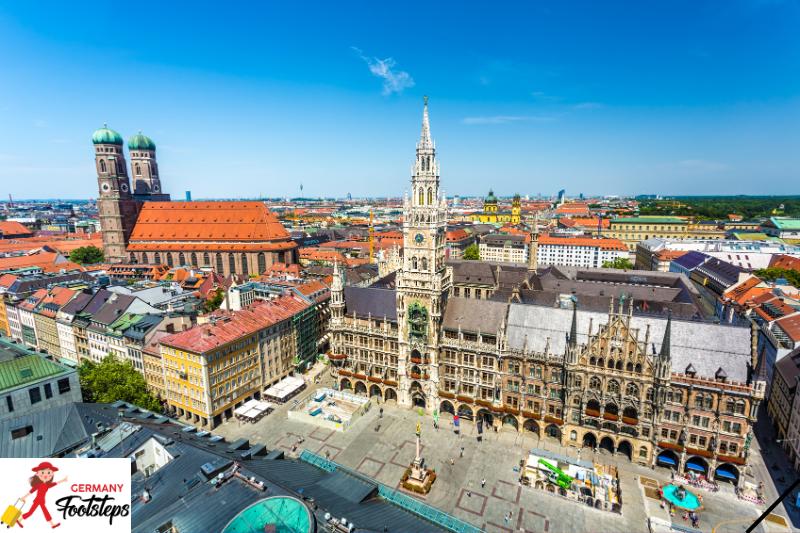
- Arrive in Munich and check into your hotel.
- If you arrive in time, visit Viktualienmarkt for local food and drinks for lunch.
- Explore Marienplatz; see the New Town Hall, Glockenspiel, and St. Peter’s Church.
- Enjoy dinner at Hofbräuhaus München for a traditional Bavarian experience.
Day 2: Munich
- Visit Nymphenburg Palace and gardens.
- Explore the Deutsches Museum or take a stroll in the English Garden.
- Have lunch at a café in the English Garden.
- Tour the BMW Museum or the Allianz Arena, if interested.
- Enjoy a traditional Bavarian dinner and consider catching a show at the National Theater or a beer hall.
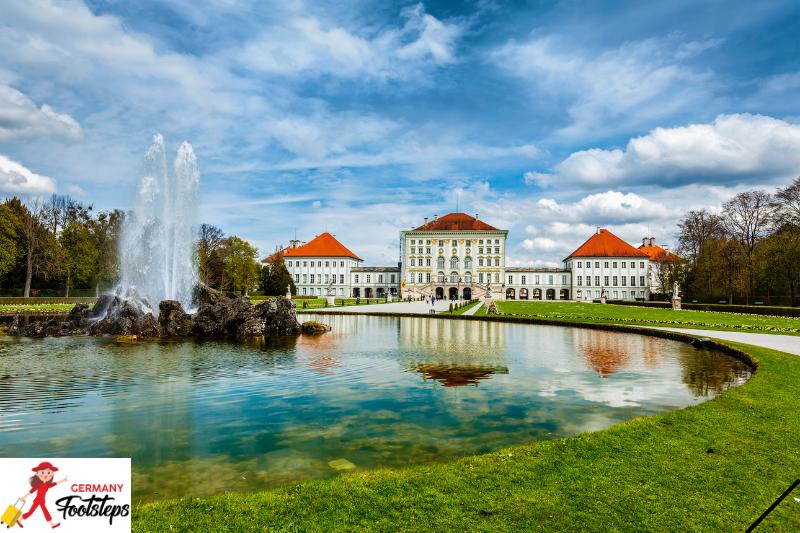
Munich, with a history dating back to 1158, is a vibrant blend of tradition and modernity. This historic city, known for its stunning architecture and rich culture, offers a variety of attractions for you to explore. It’s the perfect place to start your 10 days in Germany itinerary.
You can visit the Marienplatz, the heart of the city, where you’ll find the stunning New Town Hall and the famous Glockenspiel, which performs daily to the delight of visitors. Don’t forget to climb St. Peter’s Church for panoramic views of the city.
A visit to the Nymphenburg Palace allows you to step into royal history, with beautiful gardens that invite leisurely strolls. If you’re interested in science and technology, the Deutsches Museum is a must-see, showcasing fascinating exhibits from various fields. For a taste of local culture, the Viktualienmarkt is perfect for sampling traditional Bavarian foods, such as pretzels and sausages.
In addition to its historical sites, Munich offers modern attractions that showcase the city’s diverse appeal. The English Garden is one of the largest urban parks in the world, where you can relax by the serene water or even watch surfers ride the waves at the Eisbach. It’s the perfect place for a leisurely walk, a bike ride, or a picnic.
The BMW Museum is an exciting stop for automotive enthusiasts, featuring interactive exhibits on the history and future of this iconic brand. You can delve into the world of innovation, design, and engineering that defines BMW cars.
Alternatively, sports fans should check out the Allianz Arena, home to FC Bayern Munich. This stunning stadium is renowned for its unique illuminated façade and offers stadium tours that let you explore behind the scenes.
Culinary experiences should include a meal at Hofbräuhaus München, one of the most famous beer halls in the world. Here, you can enjoy hearty Bavarian fare along with a refreshing beer, immersing yourself in the lively atmosphere. Munich’s delightful mix of history, culture, and cuisine makes it a highlight of your German adventure.
Day 3: Munich to Rothenburg ob der Tauber
- Depart Munich for Rothenburg by train (approx. 3-4 hours and multiple trains).
- Check into your accommodation.
- Explore the medieval old town, including the Town Hall and Plönlein.
- Climb the town hall tower for spectacular views.
- Walk around the town walls for a unique perspective.
- Visit the Church of St. James.
- Experience the Night Watchman’s tour for a unique historical perspective.
Rothenburg ob der Tauber
Rothenburg ob der Tauber is a picturesque medieval town that feels like stepping into a fairytale. With roots dating back to the 12th century, it boasts well-preserved architecture and charming streets that transport you back in time.
It is without a doubt the town that is most mentioned by Germany Footsteps readers as their favorite so it’s worth making the extra effort to get here for a very different experience to the big cities.
You’ll want to explore the old town, where landmarks like the Town Hall offer breathtaking views from its tower. This impressive building showcases Gothic architecture and houses a historical museum that reveals the town’s rich heritage. Make sure you take a walk past Plönlein which must be one of the most photographed spots in Germany (pictured above).
Walking the town walls is a must-do; it provides a fascinating perspective of the town’s defenses and a unique vantage point for stunning views of the surrounding countryside.
Another highlight is the Church of St. James, known for its intricate altarpiece and beautiful stained glass windows, which reflect the town’s artistic heritage. It’s also home to Tilman Riemenschneider’s 16th century Heilig Blut Altar (Altar of the Holy Blood) which is said to house a few drops of Christ’s blood.
You’ll also want to visit the Medieval Crime Museum, which delves into the darker chapters of Rothenburg’s history. This intriguing museum showcases various aspects of medieval justice, including torture devices, legal documents, and punishment methods used during that time. Through its engaging exhibits, you’ll gain insight into the complexities of law and order in the Middle Ages.
For a taste of local cuisine, stop by a traditional restaurant to sample Rothenburg’s famous Schneeballen, a fried pastry dusted with powdered sugar. By visiting Rothenburg, you can immerse yourself in its historical beauty and unique culture, making it an unforgettable part of your German journey.
Day 4: Rothenburg ob der Tauber to Nuremberg
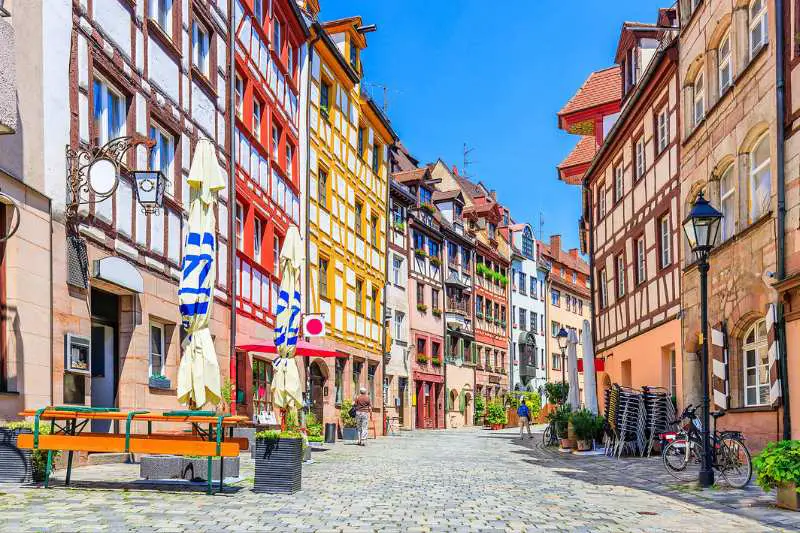
- Enjoy breakfast in Rothenburg.
- Visit the Medieval Crime Museum.
- Depart for Nuremberg by train (approx. 1.5-2 hours).
- Check into your hotel and explore Nuremberg Castle.
- Stroll through the Old Town making sure you head down picturesque Weißgerbergasse, lively Hauptmarkt and Henkersteg (Hangman’s Bridge).
- Dine at a local restaurant known for Nuremberg sausages.
Day 5: Nuremberg

- Visit the Documentation Center Nazi Party Rally Grounds and the Memorium Nuremberg Trials.
- Head back into the Old Town and explore the Albrecht Dürer House and the beautiful St. Lawrence Church.
- Do one of the underground tours. Pick whichever interests you most from the Historischer Kunstbunker (Historic Art Bunker), Felsengänge (Undergound Cellars) and Mittelalterliche Lochgefängnisse (Medieval Dungeons)
- Try more local specialties at a nearby restaurant for dinner.
Nuremberg is a city rich in history, dating back to the 11th century, making it a fascinating stop on your journey. As a former center of the Holy Roman Empire, it played a significant role in European history.
One key attraction is the Documentation Center Nazi Party Rally Grounds, where you can learn about the rise of the Nazi Party and the events that led to World War II. The museum offers a compelling and educational experience, providing context to a critical period in history.
You’ll also want to explore the Memorium Nuremberg Trials, located in the Palace of Justice. This site is significant as it hosted the trials that held Nazi leaders accountable for their war crimes after World War II. The permanent exhibition offers a comprehensive view of the trials and their impact on international law.
Another highlight is Nuremberg Castle, a well-preserved medieval fortress that offers breathtaking views of the city and a glimpse into its past. The castle’s museum showcases its history, featuring exhibits about the castle’s role in the Holy Roman Empire and its architectural significance.
While you’re in Nuremberg, take a leisurely stroll through the charming Old Town, where you’ll find picturesque streets lined with beautiful medieval buildings, quaint shops, and inviting cafés. It’s a very pretty, colorful Old Town with much to explore while you wander above and below ground.
You should also take time to explore the Albrecht Dürer House, where the famous painter lived and worked. The museum is dedicated to his life and art, allowing you to appreciate one of Nuremberg’s most important cultural figures.
When it comes to dining, be sure to try Nuremberg’s famous grilled sausages, known as Nürnberger Bratwürste, served with sauerkraut or potato salad.
Day 6: Nuremberg to Bamberg
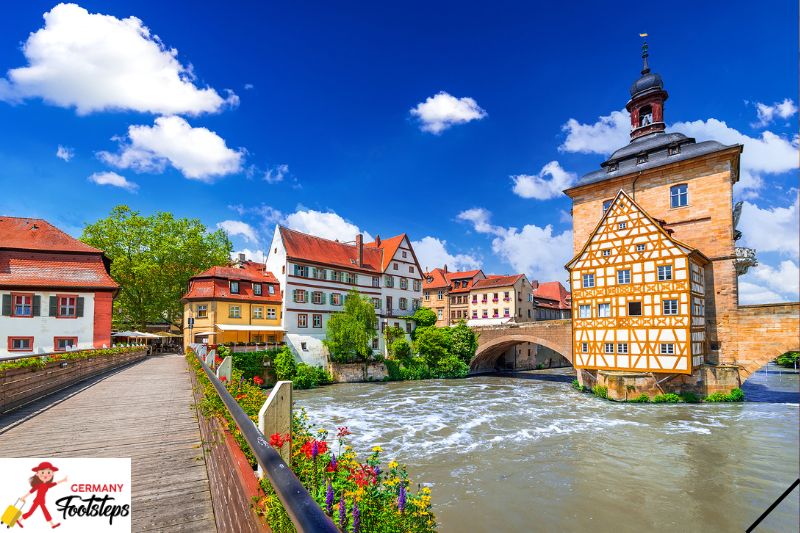
- Have breakfast and check out of your hotel.
- Head to Bamberg by train (approx. 40 minutes).
- Arrive in Bamberg and check into your hotel.
- Visit Bamberg Cathedral.
- Relax with a slice of Bamberg’s famous Lebkuchen.
- Explore Klein-Venedig (Little Venice).
- See the Altes Rathaus (Old Town Hall).
- Enjoy dinner at one of Bamberg’s historic breweries.
Bamberg is a historic gem that dates back to the 9th century, rich with medieval charm and stunning architecture. As a UNESCO World Heritage Site, its Old Town is a delight to explore, featuring narrow streets and beautifully preserved buildings.
A must-visit is Bamberg Cathedral, an impressive Romanesque structure known for its stunning four towers and remarkable interior art, reflecting the city’s religious significance.
Another highlight is Klein-Venedig, or “Little Venice,” where picturesque half-timbered houses line the riverside, creating postcard-perfect views. You can leisurely stroll along the canals while soaking in the enchanting ambiance.
The Altes Rathaus (Old Town Hall) is unique and iconic, built on an island in the river, showcasing beautiful frescoes outside and housing a small museum that offers insight into Bamberg’s rich history. It looks like it is floating over the river (pictured above).
For a local dining experience, be sure to try Bamberg’s famous Rauchbier, a smoked beer with a distinct flavor, paired with traditional Bavarian dishes like sausages or roast pork.
Don’t forget to indulge in a slice of Bamberg’s Lebkuchen (gingerbread), a local specialty that highlights the city’s culinary heritage.
Day 7: Bamberg to Berlin (via Erfurt)
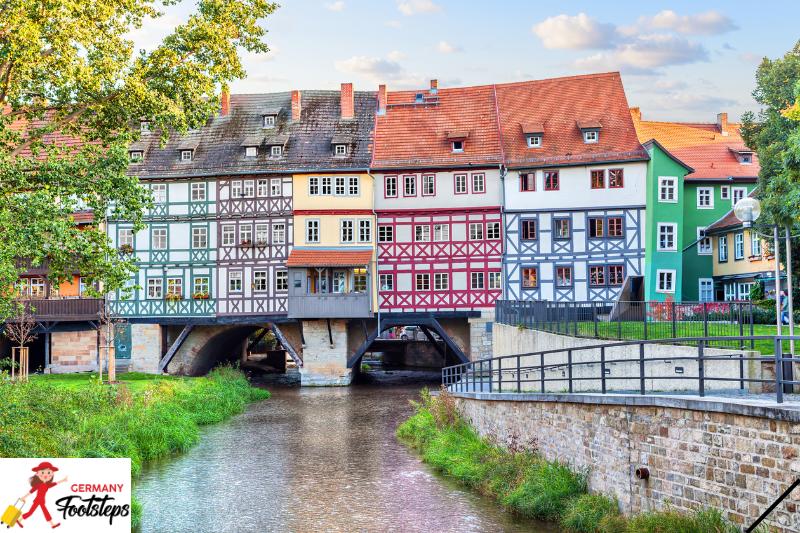
- Depart Bamberg for Berlin, stopping in Erfurt for a day trip (approx. 45 minutes).
- Leave your luggage at the train station storage.
- Visit Erfurt Cathedral and St. Severus Church.
- Stroll through Krämerbrücke (Merchant’s Bridge) and visit the Augustinian Monastery.
- Pick up your luggage and continue to Berlin (approx. 2 hours).
- Check into your Berlin accommodation and relax or enjoy dinner in the local area.
Erfurt is a city steeped in history, with origins tracing back over a thousand years. Once a center of trade and culture, it boasts a well-preserved medieval core that captivates visitors.
One of its most iconic landmarks is the Erfurt Cathedral, a stunning Gothic structure with twin towers that soar above the city. Inside, you’ll find beautiful stained glass and intricate woodwork, making it a must-see for anyone interested in architecture and history.
Another highlight is the Church of St. Severus, a remarkable Romanesque church known for its striking artworks and rich history. Wandering through the charming Krämerbrücke, or Merchant’s Bridge, you’ll discover a delightful mix of shops and cafés, all set against a picturesque backdrop of half-timbered buildings. This street is not only a marvel to see but offers unique local crafts and treats.
It’s absolutely gorgeous and you can see more here.
For a truly local dining experience, make sure to try Thüringer Rostbratwurst, a famous sausage that has been made in the region for centuries. Enjoy it with some sauerkraut at a traditional restaurant.
It’s easy to visit these attractions on a day trip from the train station. Simply leave your luggage in one of the lockers and either walk or take a tram into the center. When you are finished, you can simply return to the station and head on to Berlin.
Day 8: Berlin
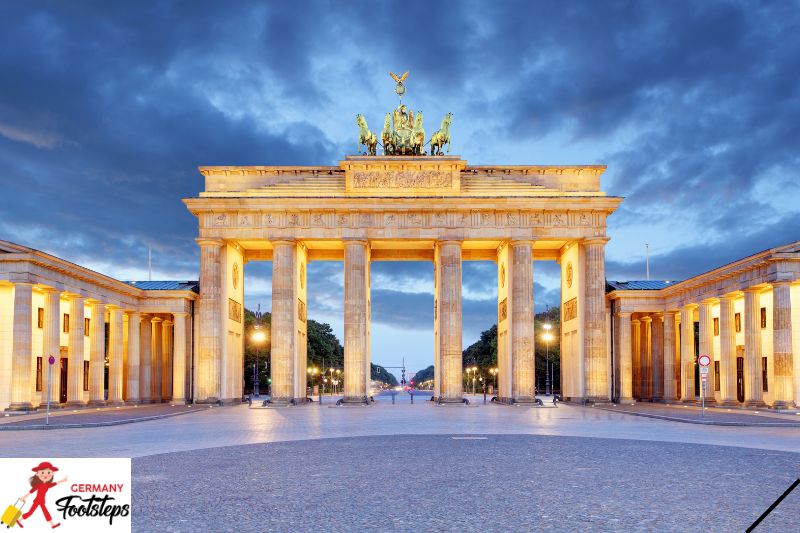
- Visit the iconic Brandenburg Gate.
- Explore the Memorial to the Murdered Jews of Europe (Holocaust Memorial) and the historic Reichstag Building. Ensure you’ve booked a tour to ascend its glass dome for unparalleled views over Berlin.
- Lunch at a café nearby.
- Head to Checkpoint Charlie.
- Stroll along the famous Unter den Linden boulevard.
- Conclude your day in the Mitte district, a culinary hub where traditional German dishes meet global cuisine, perfect for dinner.
Berlin is a city rich in history and cultural significance, making it an essential stop on your itinerary. With roots dating back to the 13th century, it has played a pivotal role in European history, especially during the tumultuous 20th century. You can’t explore Germany in 10 days without exploring Berlin.
One of the most iconic landmarks is the Brandenburg Gate, a neoclassical monument symbolizing unity and peace. Standing at the heart of the city, it’s a must-see, both for its architectural beauty and its historical importance.
The Reichstag Building is another highlight, serving as the home of the German Parliament. Its impressive glass dome offers fantastic views of the city and symbolizes transparency in governance. If you’re an art or history lover, stop by the Museum Island, a UNESCO World Heritage Site housing several world-class museums.
The Berlin Wall Memorial offers a poignant reminder of the city’s division during the Cold War. Here, you can learn about the wall’s history and its impact on not just Berlin, but the world. A visit to Checkpoint Charlie, the famous border crossing point, allows you to delve further into the era of separation.
You also shouldn’t miss the East Side Gallery, a long stretch of the Berlin Wall now transformed into an open-air gallery adorned with vibrant murals by artists from around the world. This site not only serves as a canvas for artistic expression but also as a powerful symbol of freedom and reconciliation.
The stunning Berlin Cathedral (Berliner Dom) is another highlight, with its impressive dome and intricate baroque architecture. You can climb to the top for panoramic views of the city’s skyline.
Lastly, don’t miss the Berlin TV Tower (Fernsehturm), one of the tallest structures in Europe. Its observation deck provides breathtaking vistas, and dining at the tower’s rotating restaurant adds a unique culinary experience while you take in views that stretch for miles.
For dining, Berlin’s street food scene is not to be missed; try a currywurst, a sausage topped with spicy ketchup and curry powder, at a local stand.
Day 9: Potsdam Day Trip
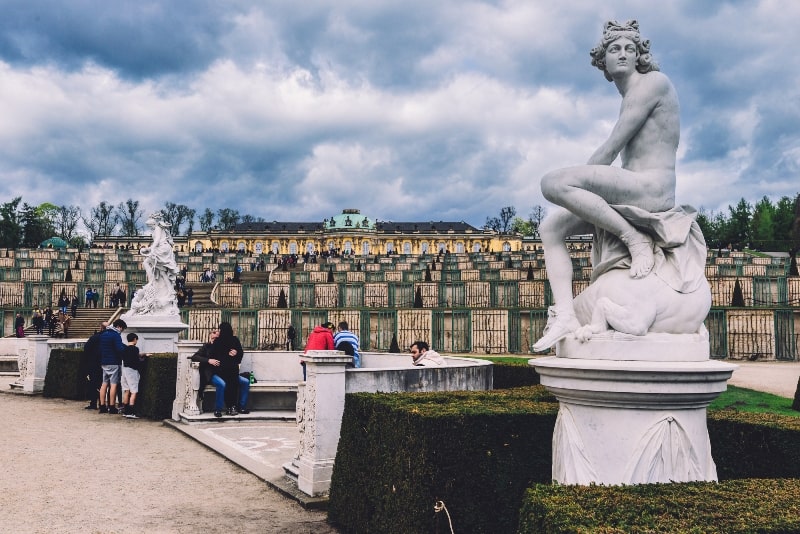
- Take a quick train trip to Potsdam and explore Sanssouci Palace
- See the Neues Palais and the captivating Dutch Quarter with its unique red brick buildings.
- In the evening, head to Alexanderplatz, where Berlin’s nightlife pulsates.
- See the city from above by visiting the Berlin TV Tower‘s observation deck.
Your final place on this 10 days Germany itinerary, Potsdam is a captivating day trip from Berlin that offers a unique glimpse into Germany’s royal history and stunning architecture.
At the heart of this charm is Sanssouci Palace, an exquisite summer residence of Frederick the Great, the King of Prussia. This Rococo masterpiece boasts beautifully landscaped gardens and ornate interiors, inviting you to wander through its opulent rooms and appreciate its artistic design.
Nearby, visit the Neues Palais, another impressive palace that showcases the grandeur of the Prussian monarchy. Known for its magnificent architecture and art collections, this palace is a perfect example of Baroque style. As you explore its halls, you can gain insight into the lavish lifestyle of the royal family.
Strolling through the Dutch Quarter, characterized by its red-brick buildings and quaint, cobbled streets, offers a charming contrast to the palaces. This delightful area is home to boutique shops, galleries, and cafés, making it an ideal spot to grab a bite or a refreshing drink.
Be sure to try local treats like Potsdam’s signature asparagus dishes if you’re visiting in season.
Day 10: Berlin
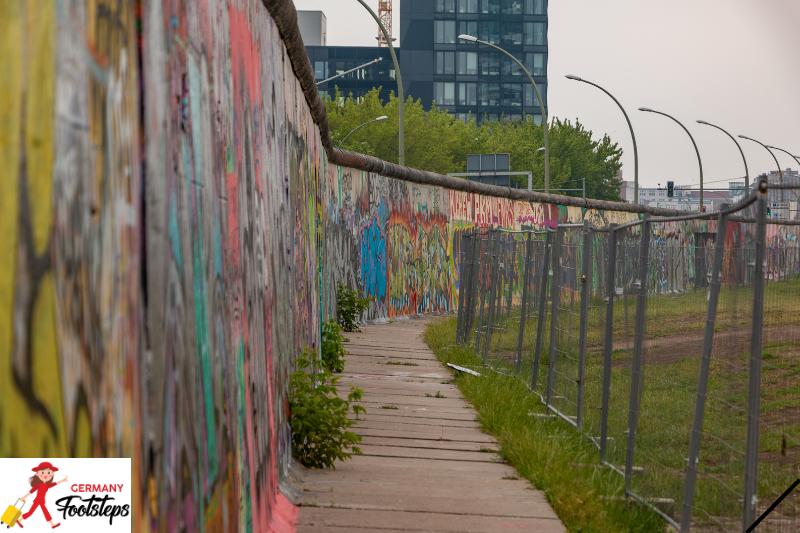
- Visit Museum Island, selecting from renowned institutions like the Pergamon Museum or the Altes Museum.
- After lunch, check out Berlin Cathedral‘s grandeur.
- Explore the Berlin Wall Memorial and visit the East Side Gallery.
- Take a farewell walk, savoring the city’s atmosphere.
- Have a farewell dinner at a rooftop restaurant with views over the city before your departure.
Map Of Your 10-Day Germany Itinerary
The following map shows you everywhere you will go in this amazing itinerary Germany 10 days.

As you wrap up your Germany 10 days itinerary, I hope you’ve been inspired to embrace the rich history, culture, and stunning landscapes that each city offers. From the lively streets of Munich to the serene gardens of Potsdam, each destination leaves its mark and adds to the tapestry of your journey.
Traveling through Germany is not just about visiting landmarks; it’s about immersing yourself in the local traditions and flavors that define each place. Now, armed with this itinerary, you can embark on your own unforgettable experience and create lasting memories in this beautiful country. Safe travels!
Want more itinerary options? We have multiple one week itinerary options you could combine to make a 10 day Germany itinerary as well:
- Frankfurt to Munich here
- Bavaria here
- Northern Germany here
- Central Germany here
- Western Germany here
- Eastern Germany here
Or you can check out our two week itinerary for Germany here . Find all our guides to planning travel to Germany here .
Related Articles:

By Sharon Gourlay
Sharon first fell in love with Germany back in 2000 on her first visit. She loves the long history, the picturesque Old Towns, the castles, the food, everything really! Since then, she has visited many times and loves writing about Germany here so you can enjoy it too. In fact, Sharon loves German culture so much that she sent her kids to a German primary school in Australia. She especially loves Berlin and towns with charming Old Towns like Celle and Quedlinburg. Sharon also has a Certificate III in International Travel Sales and understands the nitty gritty of travel planning. Through this site, she'll help you have the perfect trip to Germany whether it's your first or tenth time!
Leave a comment Cancel reply
Your email address will not be published. Required fields are marked *
Save my name, email, and website in this browser for the next time I comment.
This site uses Akismet to reduce spam. Learn how your comment data is processed .
Travel Guide Germany
Book your individual trip , stress-free with local travel experts
Select Month
- roughguides.com
- Travel guide
- Itineraries
- Local Experts
- Travel Advice
- Accommodation
Plan your tailor-made trip with a local expert
Book securely with money-back guarantee
Travel stress-free with local assistance and 24/7 support
Though it remains far less well known or understood by outsiders than some of its neighbours, since reunification Germany has at last gained a higher profile as a place to visit, thanks partly to the remarkable resurgence of Berlin, one of the most fascinating and exciting cities in Europe. But the appeal of the reunified Germany is not limited to the capital. Use our travel guide to Germany to get inspired and plan your travel to Germany. If you prefer to be more hands-on, get a copy of the Rough Guide to Germany .
Travel facts about Germany
Where to go in germany, unesco world heritage sites in germany, food and drink in germany, outdoor activities and sports in germany, german wines: a wine-making renaissance, history and heritage in germany, art, architecture and culture in germany, travel ideas for germany, created by local experts.
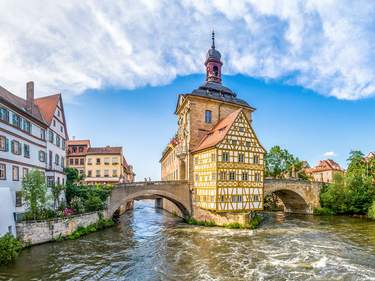
A self drive exploration of UNESCO Sites in Southern Germany
Explore UNESCO World Heritage Sites across different German states. This self drive trip allows you to design your own days with recommendations stated for each day.
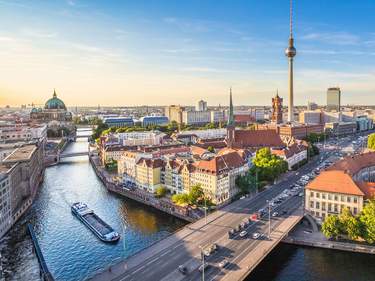
Explore Berlin and Potsdam in depth
The German capital Berlin has plenty to offer: from historical sites to world-class museums and a vibrant nightlife. Enjoy this private tour to explore a wide range of activities in Berlin and Potsdam, including several UNESCO World Heritage Sites.
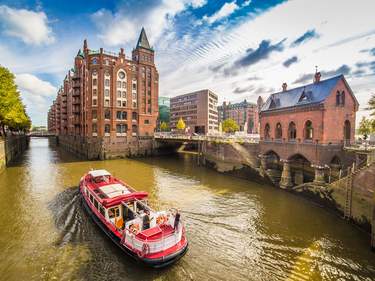
Explore Northern Germany on Your Own
From Bremen to Stralsund - Northern Germany offers plenty of gems to explore. With well-developed public transportation links, this itinerary is suited for everyone wanting to explore on their own - getting lost on the cobble-stoned streets of many UNESCO World Heritage Highlights.
_listing_1640546826392.jpeg)
Capitals of Europe - Berlin, Prague, Vienna and more
This trip is ideal for all city & culture lovers: the Reichstag in Berlin, the castle in Prague, historical Cesky Krumlov, St Stephen's Cathedral in Vienna, the fortress above Salzburg and Schloss Neuschwanstein near Munich - these are just some of the highlights of this incredible roundup trip.
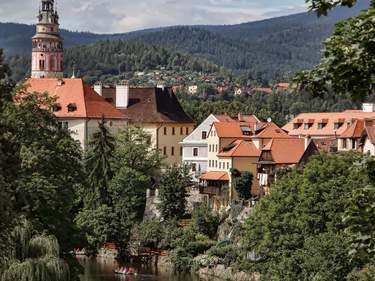
Castles across Austria and Czechia
Austria and Czechia are home to some of the world's most beautiful architecture and culture gems, such as Schloss Schönbrunn in Vienna, Prague castle, the fortress above Salzburg and many more. Finish your tour with a visit to Schloss Neuschwanstein before flying out of Munich.
_listing_1640551981693.jpeg)
Best of Germany
Germany has a lot to offer to visitors: history buffs will enjoy guided tours in Berlin and Dresden, children (and those at heart) will marvel at Schloss Neuschwanstein, scenery lovers will appreciate Rothenburg and the Black Forest. This trip truly has something for everybody!
- Germany occupies 357,112 square kilometres territory in Central Europe. It has land borders with nine countries and a coastline of 2389km on the North and Baltic seas.
- Politically, Germany is a parliamentary democracy, with an upper house – the Bundesrat – and a lower chamber, the Bundestag , both in Berlin. The administrative structure is federal, with the sixteen Länder (states) having a high degree of autonomy.
- Germany is the largest economy in the European Union , and it is the world’s largest exporter . As the economic heart of the euro zone it is also home to the headquarters of the European Central Bank .
- With a population of around 82 million, Germany is the most populous nation in the European Union, and it is also among its most densely populated and highly urbanized . The four largest cities are Berlin (3.46 million inhabitants), Hamburg (1.8 million), Munich (1.35 million) and Cologne (1 million).
- Germans DO have a sense of humour and they DO love to sunbathe naked . DON’T feel you can’t mention the war though. Today Germans are avid consumers of their own history, and the Nazi era is picked over exhaustively in TV documentaries, in books, and at the cinema.

Berlin is at the top of the list for places to visit in Germany / © canadastock/shutterstock
Best cities and towns in Germany
For many visitors, one of Germany’s cities will be where to go first. Berlin is genuinely exciting – a metropolis on fast-forward, growing into its rediscovered role as the nation’s capital yet preserving evidence of its sometimes unhappy role in European history.
Many other cities have proud histories as independent city-states or as capitals in their own right: thus, there’s nothing remotely “provincial” about ancient, liberal Cologne , Dresden’s restored Baroque splendour or the proud Bavarian metropolis of Munich . The financial capital, Frankfurt , impresses with its dynamism and international spirit, while Bonn , the former West German capital, charms with its scenic setting and excellent museums.
Elsewhere, chic Düsseldorf and laidback Stuttgart embody aspects of the German economic miracle, while the eastern city of Leipzig fizzes with fresh energy. Mercantile Hamburg looks askance at the rest of the country, maintaining the worldliness of a great port, while Nuremberg evokes the triumphs and tragedies of Germany’s past.
Cultural attractions of capital city-quality are not limited to the bigger cities, and many of the most rewarding places are quite small : the cathedral cities of Bamberg and Regensburg ; the Hanseatic ports of Lübeck , Stralsund and Wismar ; the “Prussian Versailles” of Potsdam ; and micro-capitals like Weimar , Schwerin and Eichstätt .
Germany has university towns as evocative as any: Heidelberg is the most famous, but Freiburg , Marburg and Tübingen are just as charming. As for the spa towns , at their best – in Baden-Baden, Bad Homburg or Wiesbaden – they combine health benefits with turn-of-the-century elegance and lovely natural settings.
Landscape, nature and road-trips in Germany
For a potted digest of Germany’s cultural riches the Romantic Road is deservedly popular, a road journey linking Rococo churches with medieval cities and eccentric royal castles. Other themed “roads” are devoted to fairy tales, half-timbering or wine. Often, the most magical places – a fortress on a crag, a placid village rising above vineyards, an ancient market square of improbable quaintness – await discovery on such routes.
Nor should Germany’s undeniable natural beauty be overlooked. The Bavarian Alps , the Black Forest and the valleys of the Rhine and Mosel have long been celebrated. Still, the talcum-powder softness of Rügen’s beaches , the smart resorts of Sylt and the lonely splendour of Mecklenburg’s lakes have yet to make it onto the international travel agenda. A shame, but great for travellers who like to explore great outdoor places away from the crowd.
One unsung pleasure of a visit to Germany is the opportunity to meet its people . The officious neighbour who complains if you don’t hang your socks out to dry in alphabetical order may not be entirely fictional, but you’re far more likely to be struck by the warmth and open-mindedness of Germany’s people – and particularly its young people. You can have fun testing how liberal a place is by observing how the locals react to the red Ampelmann when crossing the street: the bigger and more laidback the city, the more likely they are to ignore the no-jaywalking rule. In contrast, the sight of upright citizens waiting patiently for the green light despite an absence of traffic as far as the eye can see is still one of the more comic pleasures of small-town Germany.
Discover more places in Germany

- Hesse Travel Guide
- Mecklenburg-Western Pomerania Travel Guide
- Munich and central Bavaria Travel Guide
- Northern Bavaria: Franconia Travel Guide
- North Rhine-Westphalia Travel Guide
- Rhineland-Palatinate and Saarland Travel Guide
- Saxony Travel Guide
- Saxony-Anhalt and the Harz Travel Guide
- The Alps and eastern Bavaria Travel Guide
- The Black Forest Travel Guide
- Thuringia Travel Guide
- World Heritage sites in Germany
- Bremen and Lower Saxony
Germany sport a whopping 46 UNESCO world heritage sites worth your visit. There is a bit for everyone: from places of historical significance and cultural achievements to industrial heritage sites , palaces and castles , the natural beauty of parks and landscapes , whole medieval towns , modern architecture , and even some really obscure listings . If you intend to include some of these sites in your trip to Germany, download a free copy of the Rough Guide to the World Heritage sites in Germany .
The pleasures of travelling to Germany are not only intellectual. The excellence of its beer derives from the sixteenth-century Reinheitsgebot, the world’s oldest food purity law.
Germany’s food culture is traditionally characterized by wholesome but hearty dishes, a vast array of sausages and excellent but calorific cakes. Yet the impact of immigration, travel and increasing culinary ambition has been powerful, and most towns nowadays offer a wide selection of international options, usually including Balkan, Greek, Italian and Turkish. Learn more about food and drink in Germany .
Though the dangers of over-indulgence are ever present, so too is the antidote. The tradition of the Kur or spa visit has endured to a far greater extent in Germany than elsewhere. If you want to unwind in saline or hot springs while travelling in Germany, there are innumerable spa towns up and down the country.
In summer, the nation’s endless forests and mountains play host to hikers and cyclists while the Alps tempt international visitors with an excellent array of downhill ski runs in winter. Find out more about outdoor activities and sports in Germany .

The Black Forest in Germany is popular for hiking, cycling and motorcycle road trips © Funny Solution Studio/Shutterstock
Germany’s wine growers did themselves no favours when, in the 1970s, they responded to growing demand from abroad by exporting the cheapest and worst of what they produced. German wine was saddled for decades with a reputation for poor quality.
All that is now changing. A new generation of wine makers is eschewing high technology, chemicals and the mass market in favour of organic production that reflects the terroir , or soil and climate conditions of the region. It helps that Riesling – Germany’s most popular grape – strongly reflects the conditions in which it has been grown. The result is a resurgence of light, drinkable, dry white wines that range from elegant crispness to the subtly mineral. German wines are increasingly common on wine lists in North America and in parts of Asia, where they match the cuisines well.
Germany’s major wine regions are mostly in an arc that follows the course of the Rhine from the Mosel in the west to Baden in the south. To the east, wine is grown in more challenging climatic conditions in Franconia , Saale-Unstrut and along the Elbe near Dresden.
The 2006 football World Cup was something of a turning point, both with regards to Germany’s image abroad and to its own self-image, rehabilitating the idea of German patriotism for the first time since the war. When football fans descended on cities all over the country, they discovered a friendly, multiethnic and multicultural nation that was, for the most part, at ease with itself, finally happy to fly its own flag in a harmless display of national pride.
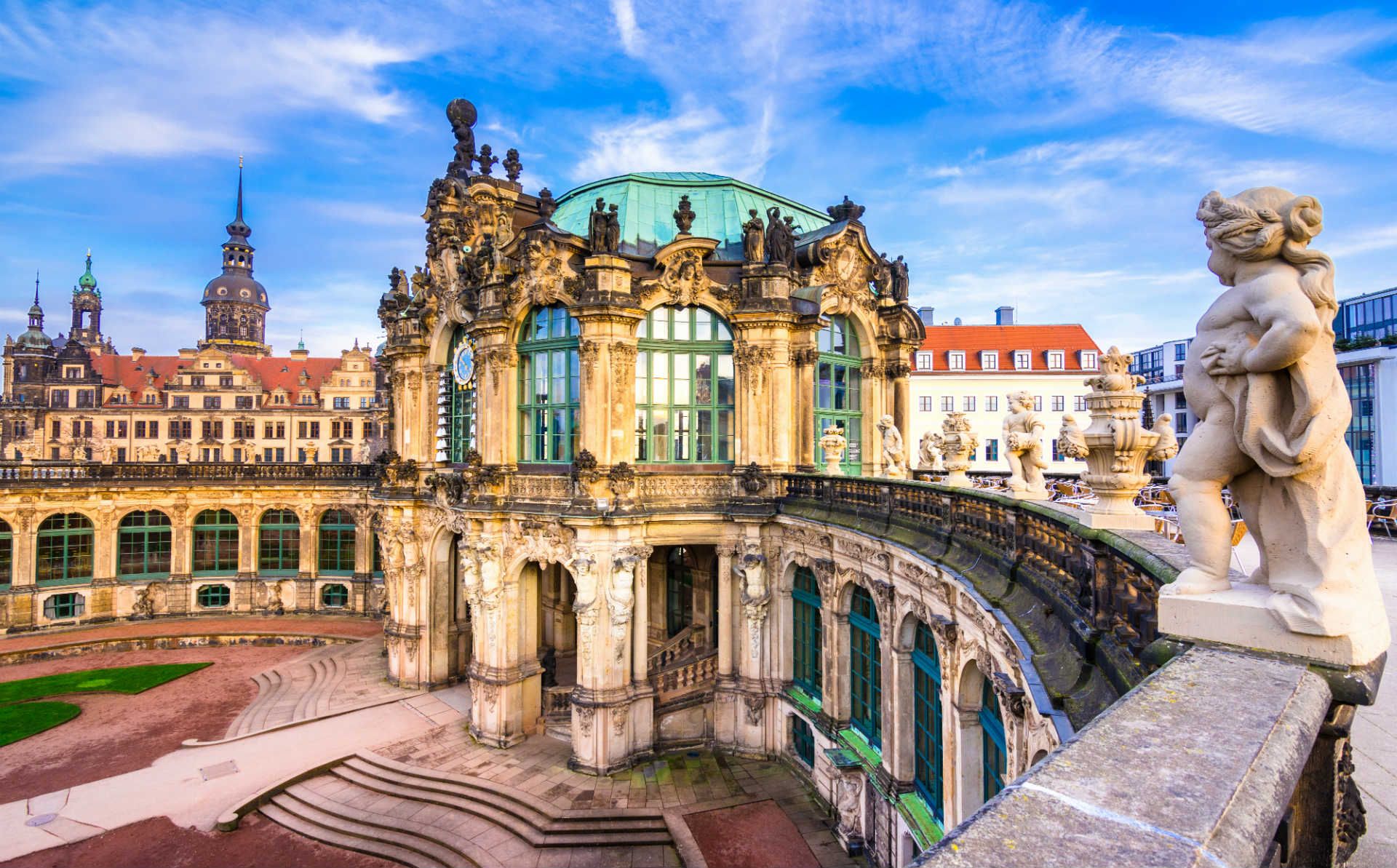
Throughout Germany you will find landmarks of its rich history, like the Zwinger in Dresden - © shutterstock
It’s now three decades since the events of 1989 swept away the Berlin Wall and brought to an uplifting end a turbulent and agonizing century for Germany, ill-served at crucial points in its brief history as a united nation-state by erratic and adventurous rulers who twice led it into disaster. In 1918, as Kaiser Wilhelm II’s vainglorious dream of empire ended in defeat, starvation and revolution; and at the end of World War II, as Hitler’s vile race-war rebounded in terrible fashion on the German people who had chosen him as their leader. There followed a period of forty-five years in which not one Germany but two faced each other across a tense international divide – the so-called Iron Curtain – throughout the years of the Cold War.
Political fragmentation is nothing new in Germany. From the tenth century until the early nineteenth, the Holy Roman Empire provided only a loose semblance of sovereignty over a vast collection of states, and it’s this jumbled history, as much as the country’s varied geography, that explains Germany’s sheer diversity. According to an old German expression, city air makes you free, and for centuries many of Germany’s cities governed themselves without feudal overlords.
In stark contrast was the absolutist yoke of the feudal states , which ranged from substantial kingdoms like Prussia, Saxony or Bavaria to tiny landgraviates and prince-bishoprics. Yet each made its contribution to Germany’s heritage, in the architectural and cultural splendour of many a former Residenzstadt. The Lutheran Reformation and its aftermath left their mark too: northern Germany is predominantly Protestant, the south more Catholic, yet the division is not clear cut. Staunchly Protestant towns alternate with devoutly Catholic ones, while in some places the two traditions share a single church.
Germany’s contribution to the world of classical music is undeniable, and provides a powerful pretext for a visit, whether to experience the glories of the Berlin Philharmonic or of Wagner’s Ring at Bayreuth, or to follow in the footsteps of great composers: Bach in Leipzig, Beethoven in Bonn.

Television tower in Berlin - © shutterstock
Germany’s reputation as the cradle of modernism is also well deserved, and a pilgrimage to the Bauhaus in Dessau or the Weissenhofsiedlung in Stuttgart is sure to please design fans. German modernism was preceded by the older traditions of the Romanesque, Gothic, Renaissance, Baroque and Rococo , each of which left a rich legacy of artistic and architectural treasures.
Germany’s prowess in fine art is less well known, yet from the pioneering realism of Albrecht Dürer to the ethereal Romanticism of Caspar David Friedrich , it’s a powerful tradition that is well worth discovering. Most German cities of any size have excellent art galleries , with Berlin and Cologne hubs of the European contemporary art scene.
Modern architecture in Germany - Reinventing the urban scene
Since reunification, Germany has experienced a rush of high-profile building projects, adding style and excitement to the urban landscape.
Berlin led the way, at times seeming like a perpetual building site. Daniel Libeskind’s Jewish Museum , the government quarter including the Reichstag, and David Chipperfield’s resurrection of the long-ruined Neues Museum all grabbed headlines, while Peter Eisenman’s monument for the murdered Jews of Europe ensures the Holocaust is remembered right at the heart of the capital.
But the action isn’t limited to Berlin. In Düsseldorf , star architects including Frank Gehry transformed a redundant dock into the Medienhafen , a funky setting for some of the city’s best restaurants and bars. In Munich , Herzog & de Meuron’s Allianz-Arena created a new symbol for the city, while a handsome new synagogue and museum reinstated a highly visible Jewish presence. In the Ruhr area , redundant industrial sites have been recycled to create some of Europe’s most original cultural spaces.
The stream of projects shows little sign of abating. Herzog & de Meuron’s extension of Duisburg’s Küppersmühle art gallery perches a translucent cube atop dockside silos, while their audacious design for the Elbphilharmonie in Hamburg places a concert hall above a portside warehouse.
Top image: Neuschwanstein castle © VOJTa Herout/Shutterstock
Travel advice for Germany
From travel safety to visa requirements, discover the best tips for visiting Germany
- Eating and drinking in Germany
- Travel Tips Germany for planning and on the go
- Culture and Etiquette in Germany
- Getting around Germany: Transportation Tips
- How to get to Germany
- Shopping tips for Germany
- Sports and Outdoor activities in Germany
- Travelling with children in Germany
- Best time to visit Germany
The Rough Guides to Germany and related travel guides
In-depth, easy-to-use travel guides filled with expert advice.

Find even more inspiration for Germany here

Planning your own trip? Prepare for your trip
Use Rough Guides' trusted partners for great rates
written by Rough Guides Editors
updated 22.07.2021
Ready to travel and discover Germany?
Get support from our local experts for stress-free planning & worry-free travels.
- Travel advice
- Where to stay

Germany Travel Guide: Everything you need to plan your trip
Planning a trip to Germany? Great! This Germany Travel Guide will help you with just that.
Germany is situated in Central Europe, is the 7th largest country on the continent and is a member state of the EU and NATO. It’s the most populous nation wholly in mainland Europe, with a population of over 80 million people.
It attracts a similar number of tourists annually, making it one of the most popular destinations in the world. It shares borders with Denmark, Poland, Czech Republic, Switzerland, Austria, France, Belgium, The Netherlands, and Luxembourg. Russia is the only country in Europe that shares borders with more countries.
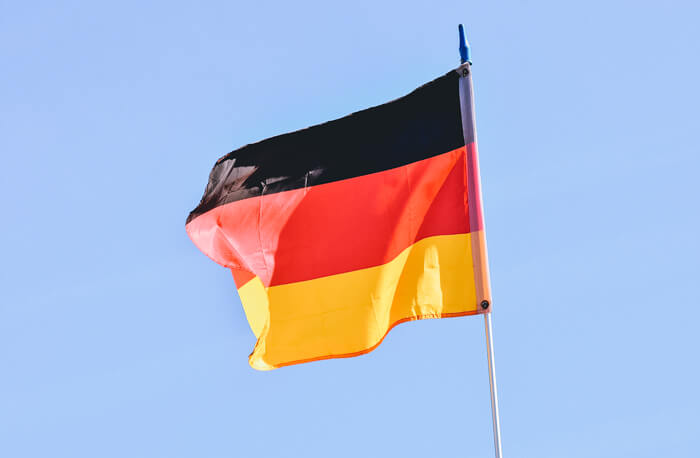
Why visit Germany? The country is especially known for its world-class museums, fairytale castles, forests and festivals, which include Christmas markets and beer festivals just to name a few. The capital city Berlin attracts thousands of tourists year-round, while Neuschwanstein Castle was the inspiration for the famous Disneyland Castle.
I found you on Pinterest when I decided to travel outside of the United States for the first time (I’m 54). My husband and I decided to go to Germany, so I read pretty much everything you wrote on that as well as what to pack and how to make it on the long plane ride. I’m still reading your posts and planning on another trip. Thank you for all the good advice!” – Reader Colleen.
Germany travel guide: Quick facts
2. bayern (bavaria), 3. niedersachsen (lower saxony), 4. baden – württemberg, 5. rheinland – pfalz (rhineland – palatinate), 6. sachsen (saxony), 7. thüringen (thuringia), 9. nordrhein-westfalen (north rhine – westphalia), 10. sachsen – anhalt (saxony – anhalt), 11. brandenburg, 12. mecklenburg – vorpommern, 13. hamburg, 14. schleswig – holstein, 15. saarland, entry requirements, travel to germany by train, fly to germany, independent travel around germany, what to pack for germany in summer, what to pack for germany in winter, what to pack for germany in fall and spring, the best time to visit germany, what to eat in germany, famous events in germany, public holidays in germany, things to know when traveling to germany, where to stay in germany, don't forget travel insurance, basic phrases and their pronunciation, is germany safe, the use of cash and cards in germany, calling abroad, wifi and data use in germany, tipping in germany, a brief history of germany, more travel tips for germany germany.
Size: 357,168 km² or 137,847 sq mi
People living there: more than 80,716,000
Capital: Berlin
Governmental structure: Democratic, federal parliamentary republic.
National day: October 3
Time zone: Central European Time (CET) / UTC+1 / GMT+1
Currency: euro (EUR)
Power voltage and socket type(s): 230V, plug types F and C. If these plug types don't match your devices, make sure to pack a universal adapter .
Official religion(s)/Freedom of religion: Freedom of religion. 60% of the population is Christian with the two largest denominations being Roman Catholic and Protestant Evangelical Luthern, followed by non-religious citizens, Muslims, Buddhists, and Hindus.
Official language(s) and general knowledge of English: German is the official language. English is semi-widely spoken.
Drives on this side: right
International driver's licence accepted? yes
Phone code: +49
Vaccinations needed? None mandatory.
Can you drink the tap water? yes.
More interested in quirky and fun facts? Check out this post with interesting facts about Germany .
States of Germany
Germany is a huge country to explore with different sites and places of interest across the country. Here's a breakdown of the main places to consider when planning your German vacation.
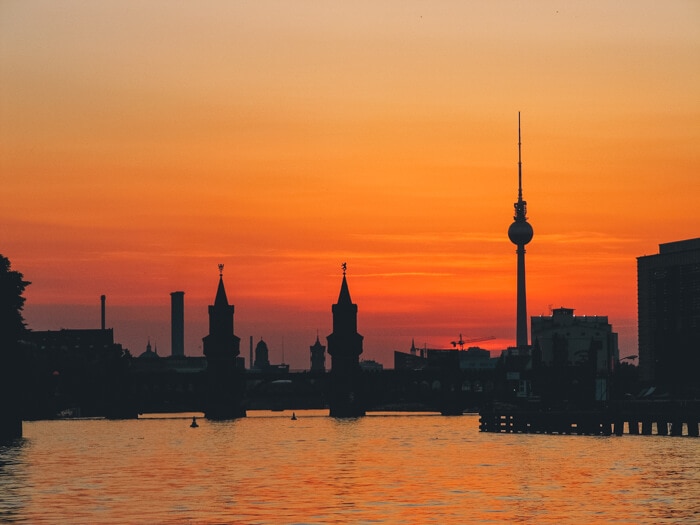
There is a plethora of exciting things to see in Berlin, including the Brandenburg Gate, the East Side Gallery, and the Reichstag building. On top of that, there are fantastic museums, restaurants, and parks meaning that the city offers something for everyone.
- Spotting street art at Hackescher Markt in Berlin
- Is the Berlin Welcome Card worth it?
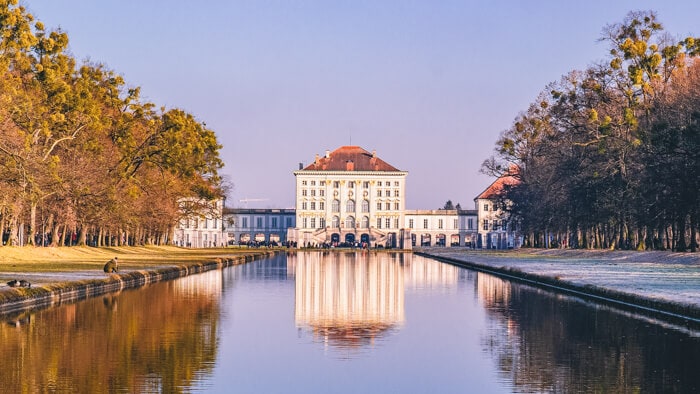
It’s known for lederhosen (leather trousers), sausages, and beer, but there’s a lot more to the region than that, with beautiful old towns, a stunning countryside, and the Berchtesgaden National Park. Neuschwanstein Castle, located in the state, is one of Germany’s most magical experiences.
It’s the most popular travel destination in the country, attracting over 8 million tourists every year. The capital of the region is Munich, where the famous Oktoberfest is held and it’s also the home of Germany’s most successful football team, Bayern Munich.
If you're looking for a lesser-known city, there are plenty of things to do in Nuremberg as well.
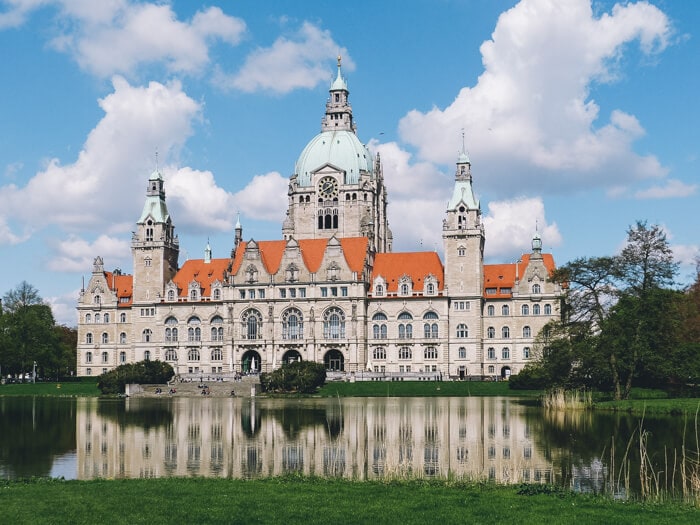
The state capital, Hanover, is where you’ll find the Herrenhausen Gardens, home to an English landscape garden and the Baroque Great Garden. Other important cities are Goslar, home to the Rammelsberg mines, Bremerhaven and its Maritime Museum, and Lüneburg, which boasts the German salt museum. Braunschweig should also be mentioned, due to its huge collection of European art in the Herzog Anton Ulrich Museum.
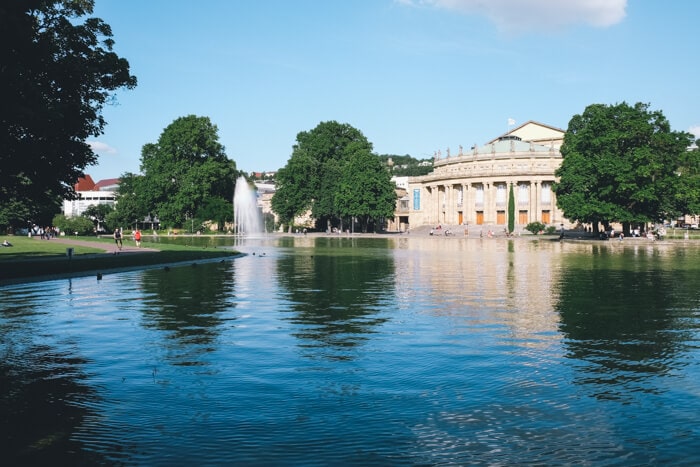
The capital of this state is Stuttgart, home to the headquarters of both Mercedes-Benz and Porsche, two of Germany’s most famous car manufacturers. Travelers in the region should expect to find hilltop castles, diverse scenery, and tasty cuisine. After Stuttgart, Baden-Baden and Heidelberg are two of the most important towns here.
- Learning about traditional German crafts in the Black Forest
- 4 cities in Baden-Württemberg you need to visit
- Visiting Burg Hohenzollern, the castle that was never a royal residence
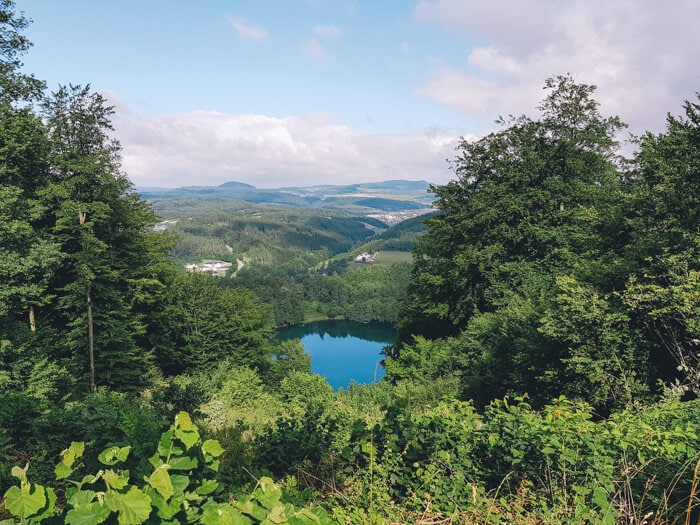
The capital of the state is Mainz, where you’ll find Jewish synagogues and cemeteries, as well as a beautiful Romanesque cathedral. The Moselle Valley is another popular spot for tourists, with its quaint riverside towns of Bernkastel-Kues and Piesport. The Rhine also flows through this state, which borders Belgium, France, and Luxembourg.
- How to spend 3 days in the Volcanic Eifel
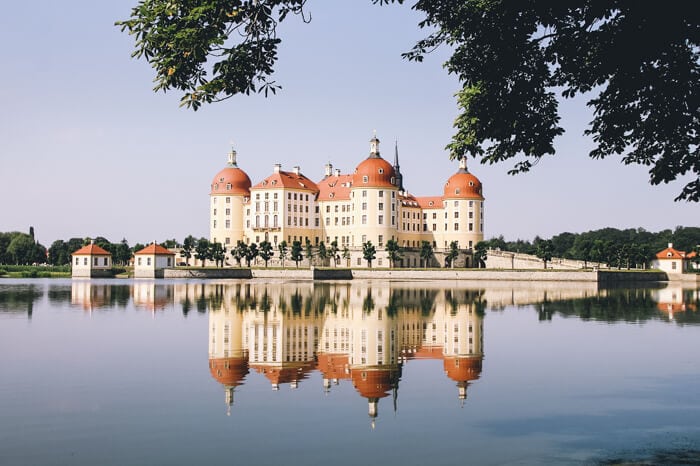
Away from the capital, there’s Leipzig, home to one of the greatest musical composers, JS Bach. There are tributes to him in the city’s world-famous classical music and fine art museums. There are some smaller historical towns in the state, like Meissen and Görlitz, while the highest fortress in Europe gives spectacular panoramic views across the green countryside.
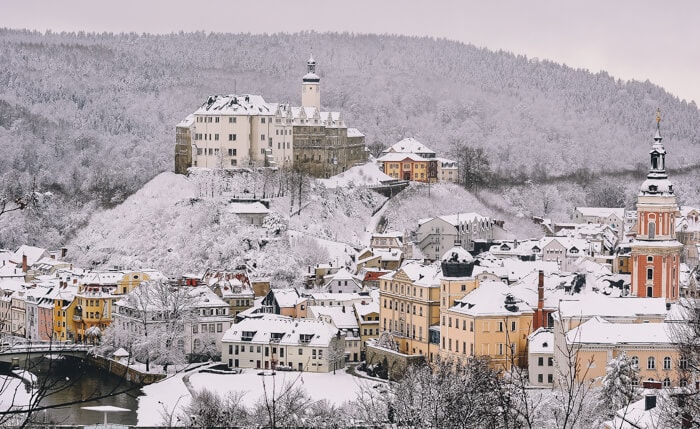
The capital of Thuringia is Erfurt, which escaped any major damage in World War II and is one of the best-preserved medieval cities in the country. Other places worth a visit are Weimar, the home of the writer Goethe, Jena, where you’ll find the world’s oldest planetarium in operation, and the UNESCO listed Canopy Walk in Hainich National Park.
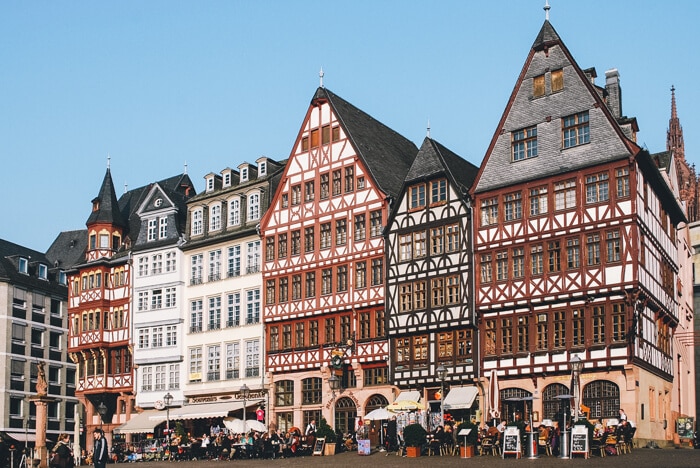
However, the best-known city in Hessen is undoubtedly Frankfurt am Main, which is the country’s financial center and the largest city in the federal state. It’s home to one of the largest airports in Europe, offering intercontinental flights, so it’s a great destination to fly in or out of. There’s some interesting stuff in the city too, such as the Städel Art Museum and Goethe House.
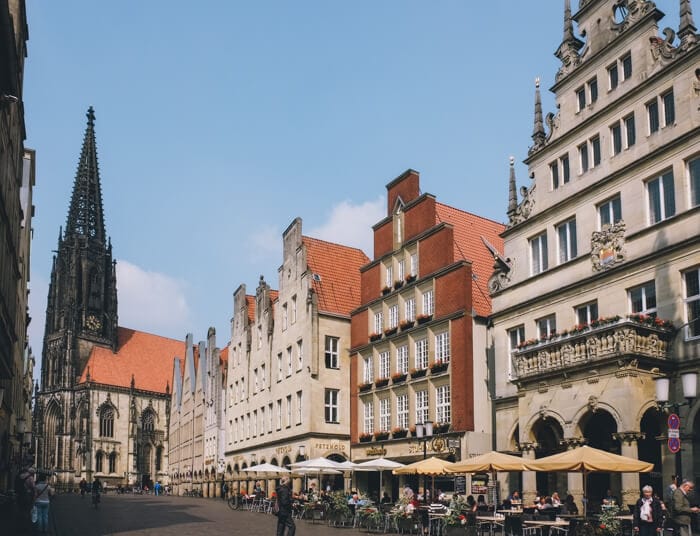
Outside of the cities, one of the top tourist attractions in the area is the 18th century Schloss Benrath, a palace with a museum and a garden. Other important cities in the state are Germany’s former capital, Bonn, and Aachen.
- Things to do in Münster in 3 days
- Restaurants in Münster that will make you crave more
- Celebrating the Peace of Westphalia in 5 Münster museums
- Having a jolly good time at the Münster Christmas market
- 10 things to do in Osnabrück
- 15 fun and free open places to visit in Cologne
- 16 of the best restaurants in Cologne and other foodie hotspots
- 10 fun things to do in Cologne, Germany
- A walk along the Rhine River in Düsseldorf
- 5 things to do in Düsseldorf when the weather's terrible
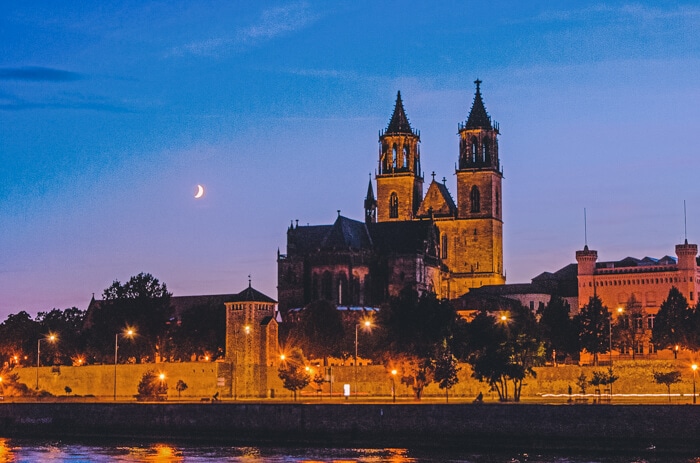
The capital of the region is Magdeburg, where Otto I, Holy Roman Emperor is buried in the Gothic cathedral. You’ll also find Martin Luther’s home in the town of Wittenburg, the home of the German reformation.
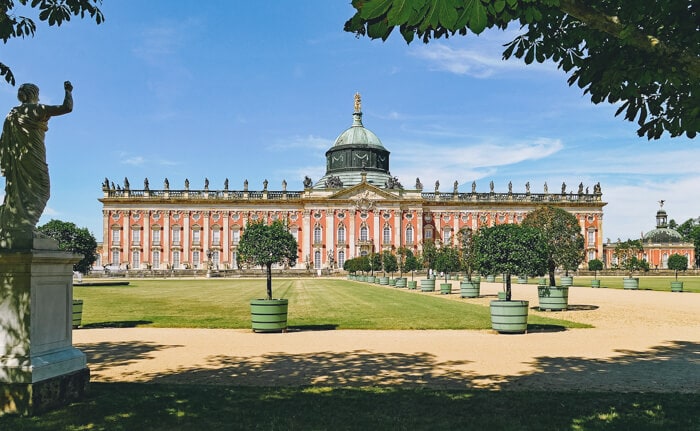
The capital of the state is Potsdam, known for its picturesque Dutch Quarter, a smaller reconstruction of Berlin’s Brandenburg Gate, and the Sanssouci Palace. Away from the urban centers, the Spreewald forest is a romantic getaway opportunity, and the Babelsberg Park offers a slice of England on the Havel River.
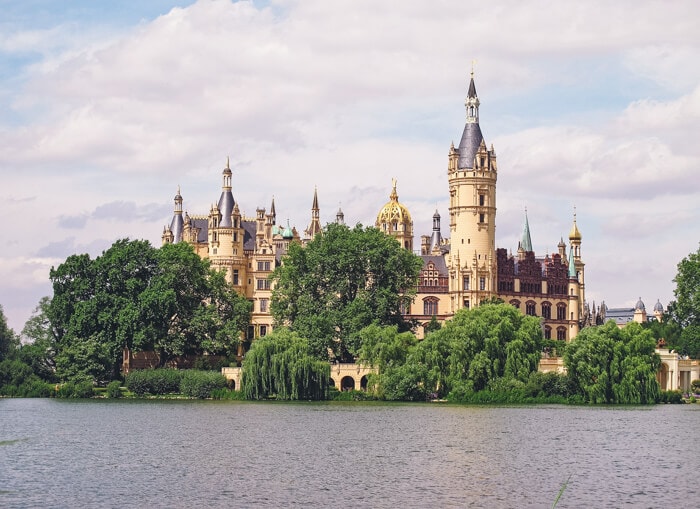
Although not well known outside of the country, Schwerin is one of Germany’s most jaw-dropping cities and is home to a castle perched on its own island in the middle of a lake. Other major cities in the region are the port of Rostock, the medieval spa town of Waren, historic Stralsund, and several ancient towns dotted around the federal state.
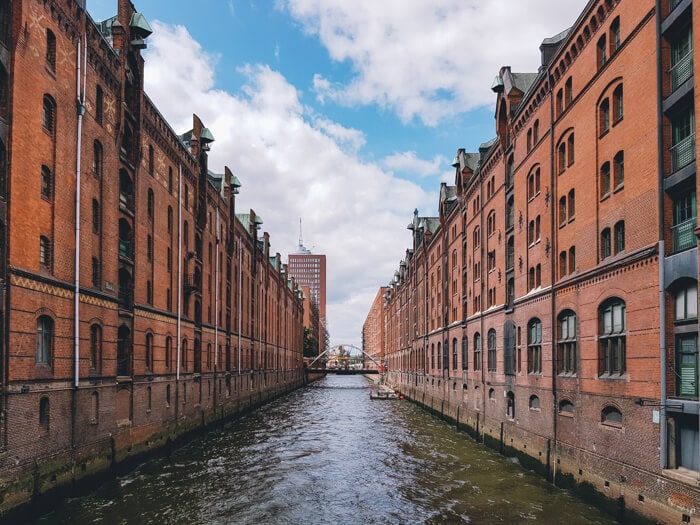
However, it’s also an exciting tourist destination thanks to colorful markets, boat cruises, and unique museums. Architecture buffs will love it too – there are several converted warehouses here, with Spiecherstadt being a highlight – where warehouses rub shoulders with neogothic buildings. It’s one of 3 UNESCO World Heritage sites in the city.
Many people visit Hamburg for the nightlife – Reeperbahn, located in the St. Pauli district, is one of the city’s two nightlife centers. It’s actually a red-light district, and it also holds one of the world’s largest techno and nightclub festivals.
- Attending the sparkling Vögelball festival
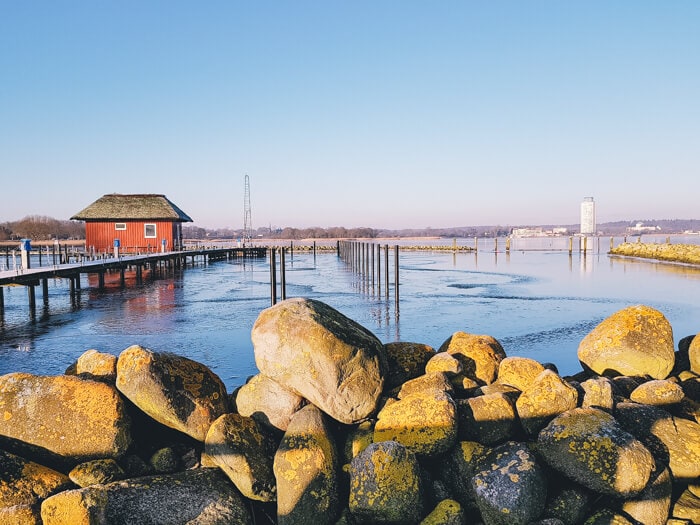
The capital of this region, situated on the north coast, is the port of Kiel, where you can enter or travel onwards to Scandinavia and Lithuania. One of the most popular attractions in the city is the opportunity to dive into a former German submarine. Another city worth visiting is the pretty Lübeck.
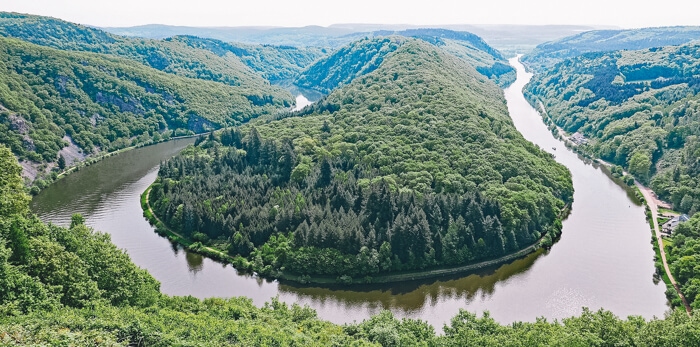
Some of the region’s must see attractions include the UNESCO World Heritage listed Völklingen Ironworks, especially when lit up with neon lights at night, the treetop walk near Mettlach which gives outstanding views of the Saarschleife, and the red sandstone Schlossberg Caves.
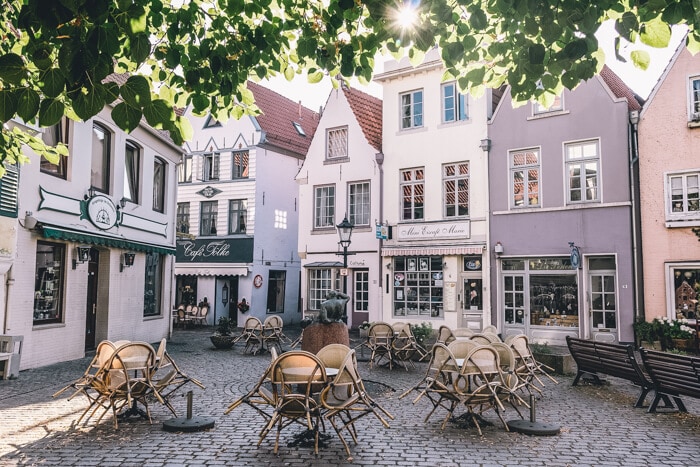
A city steeped in history with a wide variety of architectural styles, Bremen is a beautiful and interesting place to stay. With Hanseatic buildings in the market square, a Gothic town hall with a Renaissance façade, and medieval crypts and twin spires in the city’s cathedral. Bremen is said to have one of the best Christmas Markets in the whole of Germany.
How to travel to Germany
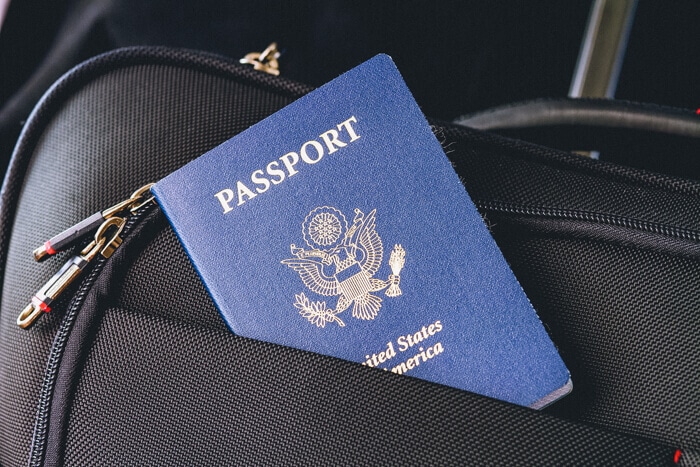
Travelers from North America and the rest of the world can enter Germany for up to 90 days without a visa. Passports must be valid for at least 6 months after their stay.
How to get to Germany
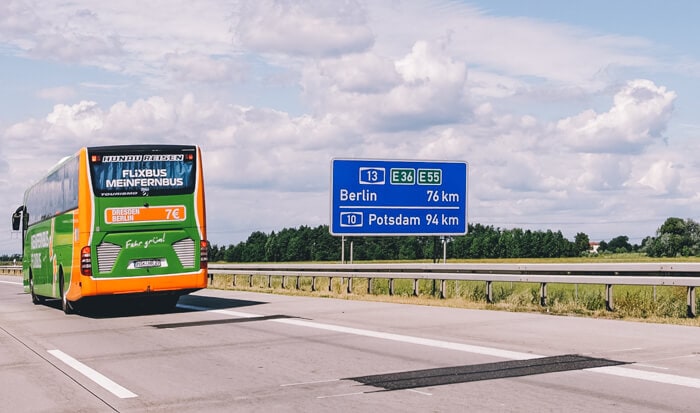
Deutsche Bahn and ÖBB (from Austria) also offer a number of overnight trains to major European cities. You can even take the Eurostar between Germany and the UK if you change to a high-speed train in Paris or Brussels.
Look here for train routes and prices from within Europe.
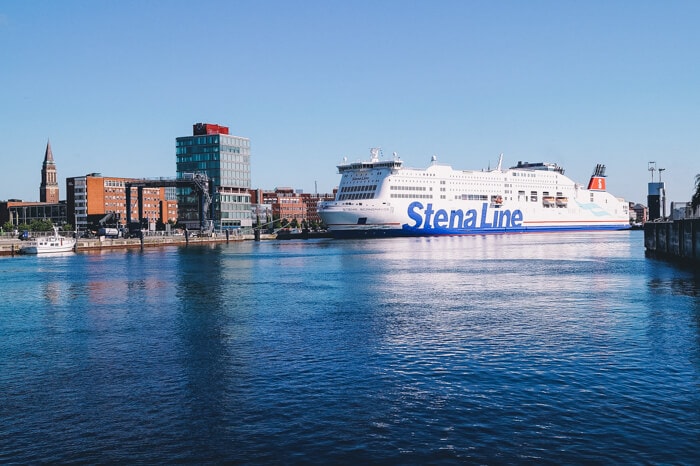
Return tickets are often cheaper than one way, and it’s a good idea to book well in advance if you’re traveling with your own car.
Check here for ferry routes and prices to Germany.
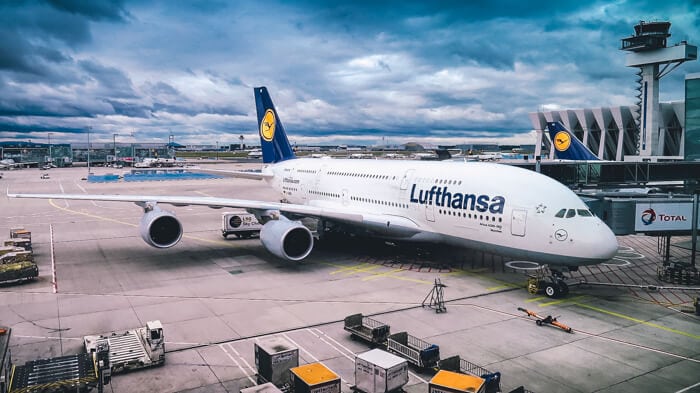
Frankfurt is one of the biggest airports in Europe and offers several transcontinental flights. Munich and Düsseldorf also have large airports. Berlin’s Brandenburg airport is due to open in 2020, but for now, flights to the capital arrive to the smaller airports of Schönefeld and Tegel.
Check here for the best flight options to Germany.
How to travel around Germany
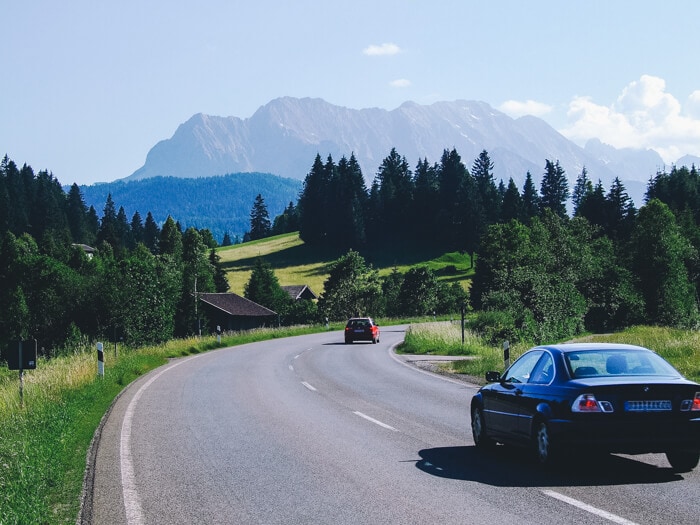
Germany has an excellent road, rail, and bus system so it’s extremely easy to travel around independently with public transport. Trains are the fastest way to get from city to city if you don’t have your own private transport, but buses are often cheaper. The national rail system is run by Deutsche Bahn – you can buy national and international train tickets via their website.
Germany is also great for those who want to rent a car and explore at their own pace. You’ll just need to carry your driving license and have proof of at least third-party insurance with you.
What to pack for Germany
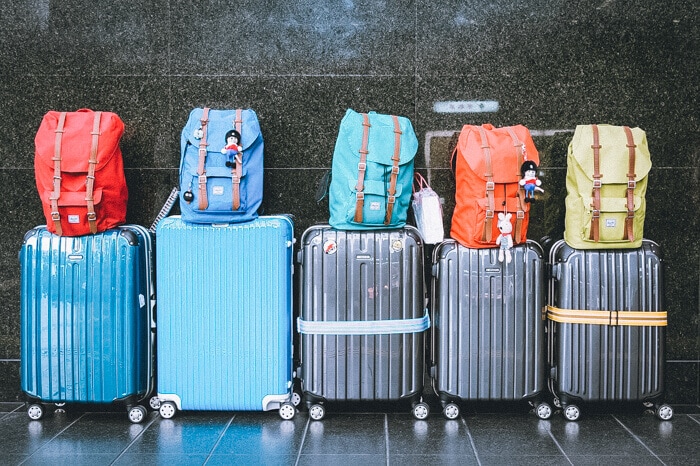
- light hiking trousers
- a reusable water bottle
- good walking sandals
- light clothing
- a rain jacket
- a warm wind and waterproof coat
- comfortable and warm shoes
- a merino woolen baselayer
- merino woolen socks
- a warm scarf
If you're going to Germany in fall or spring, it's mostly important to pack layers. Early fall can still feel like summer while early spring can still be winter cold. You probably won't need a thick winter coat in these seasons but a warm lightweight jacket is recommended.
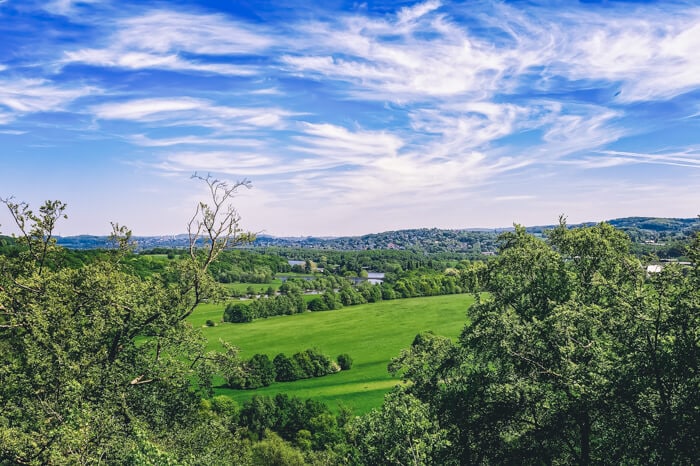
Summer is a great time to travel Germany, especially if you are outdoorsy, but beware this time of year sees price hikes in accommodation and transport.
Most German towns have magical Christmas markets, and the best time to visit these is in November and December. The famous Oktoberfest is another major tourist draw, so if getting on your lederhösen and enjoying a few steins is your idea of fun, head to Germany in October.
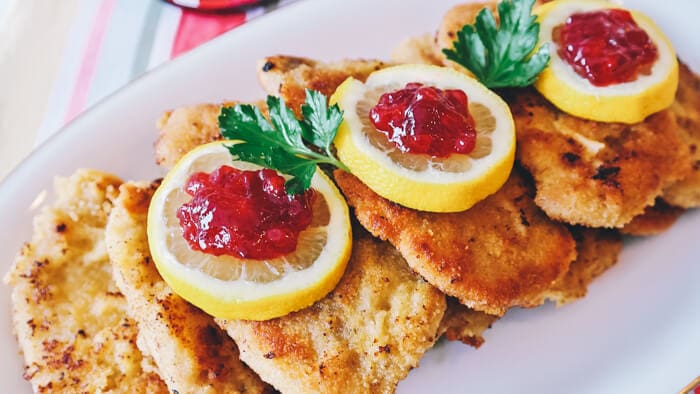
If you truly want to explore Germany, you need to explore its cuisine as well. Get started with the dishes below.
- Bratwurst – A traditional sausage usually served in a bun that you’ll find at every German BBQ.
- Currywurst – Germany’s most loved street food consists of pork sausage, curry powder, and ketchup.
- Spätzle – Handmade noodles that are fried and served with several traditional dishes.
- Sauerkraut – A side dish which consists of fermented sour cabbage. Often served with meat.
- Kartoffelkloesse – Traditional potato dumplings served as a side with meat or as a dish on their own.
- Hasenpfeffer – A rabbit stew braised with onion and wine, with the marinade and sauce thickened with rabbit’s blood.
- Rinderroulade (Beef roll) – Dish from Saxony that consists of beef rolled with onions, pickles, bacon, and mustard before being roasted in red wine.
- Pretzels – A thick, doughy snack often covered in salt or sesame seeds. Eat them on their own or dipped in mustard.
- Lebküchen – Gingerbread cookies sometimes coated in nuts, chocolate, or icing sugar. Popular at Christmas markets.
- Beer – Pilsner, a pale lager is Germany’s most popular beer, but there are many other varieties, including wheat beer and altbier.
Want to know more about German cuisine? Check out this list of German foods .
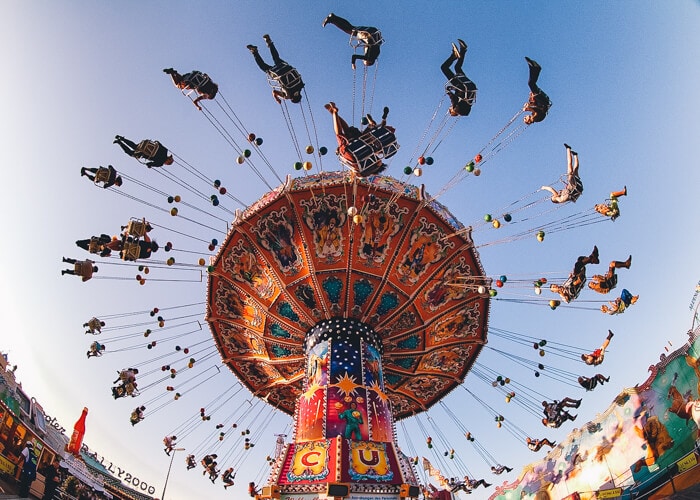
- Berlin International Film Festival (February) – the 2nd biggest international film festival in the world, after Cannes.
- Leipzig Book Fair (March) – the largest literary festival in Europe where you can meet your favorite authors and learn about all that’s going on in the world of books.
- Karneval (40 days before Easter) – A German take on the famous Venetian celebration. Cologne’s karneval is the best known in Germany.
- Walpurgisnacht (April) – This festival in Heidelberg takes place in one of the only remaining relics of Nazi architecture, a huge amphitheatre. Thousands of torchbearers climb the mountain and pile inside.
- Hafengeburtstag (May) – Over one million people turn up to this festival in Hamburg which celebrates the city’s birthday with boat shows, concerts, fireworks, and an open-air fair.
- Wurstmarkt (September) – In Bad Dürkheim you’ll find the world’s largest wine festival, with over 600,000 people attending every year.
- Unity Day (October) – The largest national holiday which celebrates the fall of the Berlin Wall and the reunification of East and West Germany.
- Oktoberfest (October) – Traditional Bavarian foods, lederhösen, and of course beer at this huge festival held every October in Munich.
- Onionfest (October) – In the market town of Weimar, all things onion are celebrated and “Queen of the Onion” is crowned. Over 300,000 people attend annually.
- Christmas markets/Weihnachtsmarkts (November/December) – Held across Germany, quaint stalls that sell Christmas gifts, food, and gluhwein. The best are in Nuremberg, Cologne, and Hamburg.

- New Year’s Day
- January 6th – Three King’s Day
- March 4th – Fasching
- Good Friday
- Easter Monday
- May 1st – Labour Day
- Ascension Day
- Whit Monday
- June 20th – Corpus Christi Day
- October 3rd – German Unity Day
- October 31st – Day of reformation
- November 1st – All Saints Day
- December 25th – Christmas Day
- December 26th – St Stephen’s Day
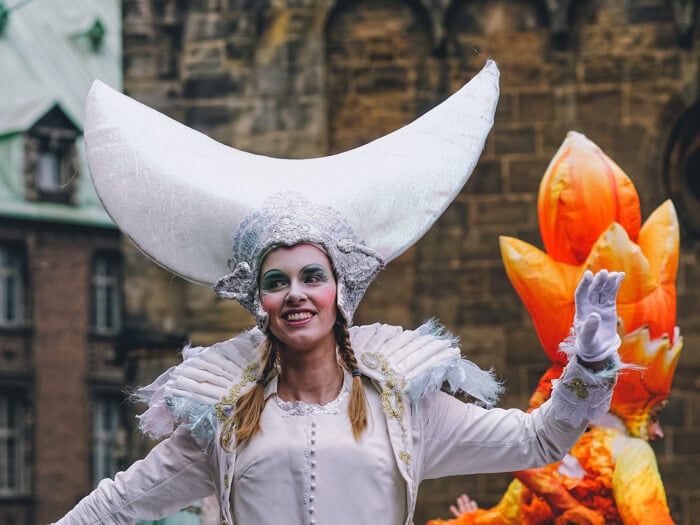
Use sie (the formal version of you) when speaking to strangers, and only use the informal du and first names if you are invited to do so. The greetings that involve you in the basic phrases section below are all the formal version.
When eating, sat ‘guten appetit’ before starting a meal.
I always look on Booking.com for hotels and guesthouses. This has a bunch of filtering options so I can easily get a list of only the hotels that meet my criteria. If you're looking for accommodation in Germany, I highly recommend you check there .
When I want to book an apartment rather than a hotel, I use Airbnb .
No matter how well you plan and research a trip, there are always things that happen beyond your control. Something might get canceled, you can get ill or hurt while traveling or one of your electronics might break or get stolen. When misfortune strikes, travel insurance has got you covered. I've had ongoing travel insurance ever since I started traveling to make sure I'm covered for every trip I go on. Don't have insurance yet? You can get a free quote here:
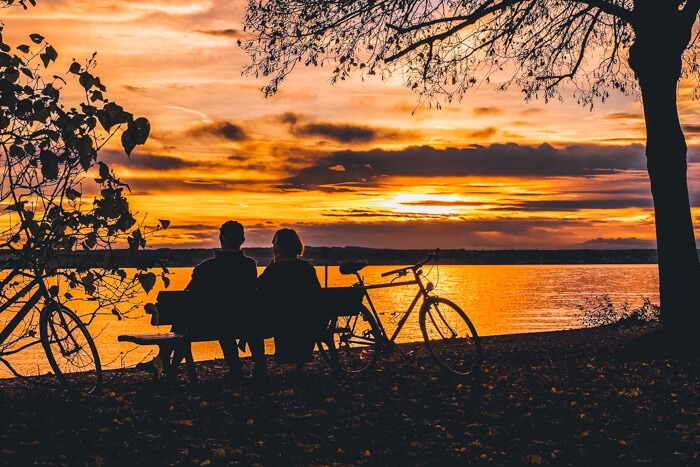
If you’re renting or bringing a bike, make sure you have a good, sturdy lock. Bike theft is also a common occurrence in big cities.

You will, however, often need cash at small, independent retailers, cafés, restaurants, and markets.
Those with a SIM card from an EU country don't have to pay roaming charges when calling, texting, or using data in Germany. The same goes for some global phone plans.
If you don't have a EU SIM but still want to have unlimited WiFi, check out Solis Wifi .
Skyroam offers both day passes and monthly subscriptions providing you with 4G throughout your trips. I've been using their daily passes not just when I travel outside the EU (no roaming charges for me in the EU) but also as a backup for when I think I'll go over my phone's data plan.
In Germany, service charges are usually included in the bill and tipping is more of a “thank you” gesture than an obligation. Still, people tend to tip waiters in restaurants and especially other tourism-related workers such as taxi drivers and porters. More on who to tip what in Germany here .
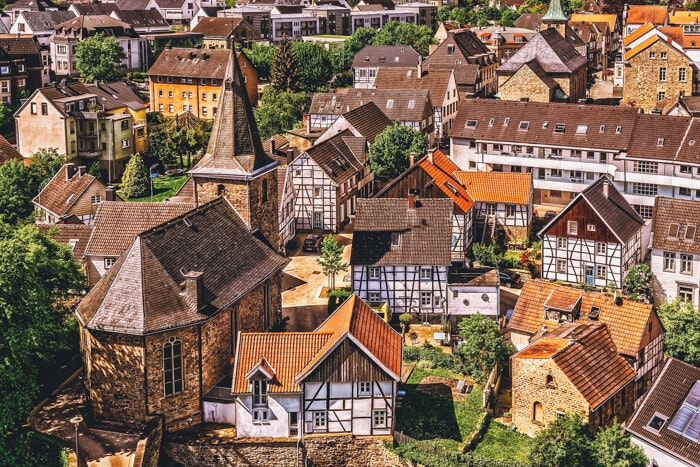
In the 10th century, the German state was known as the Holy Roman Empire. This lasted a long time, and the Catholic and Protestant parts of the empire clashed in the 30 years’ war from 1618 – 48. More than quarter of the population, and half of Germany’s men were killed in this war.
Until 1871, Germany was made up of several small states ruled by Kings and Dukes. A politician called Otto Von Bismarck unified the country using alliances and force.
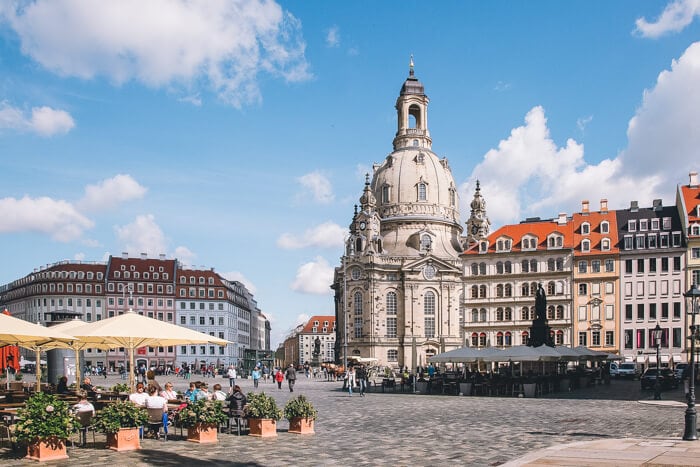
Germany attempted to compete with other European countries by establishing an empire in Africa and Asia. However, tension from this led to World War 1, at the time the worst war the world had ever seen. The UK, France, and the USA defeated Germany and its allies.
In 1933 Adolf Hitler and the Nazi party came to power. The Nazi party invaded Poland in 1939 leading to World War II. Concentration camps were established across country where many Jews were sent to be murdered. The war ended in 1945, Germany lost, and Hitler committed suicide.
Germany was divided after the 2nd world war into West and East. West and East Germany were an important part of the Cold War and were at the centre of a standoff between the Soviet Union and the West.
Germany opened its borders in 1989 when the Berlin Wall fell.
Nowadays, Germany has one of the most powerful economies in the world and is an important member state of the EU. Angela Merkel is the Chancellor.
And that's it! I hope this Germany travel guide will help you decide where to go in Germany and plan your own trip there. Safe travels!
Planning to travel to Germany? Then check out all my Germany posts
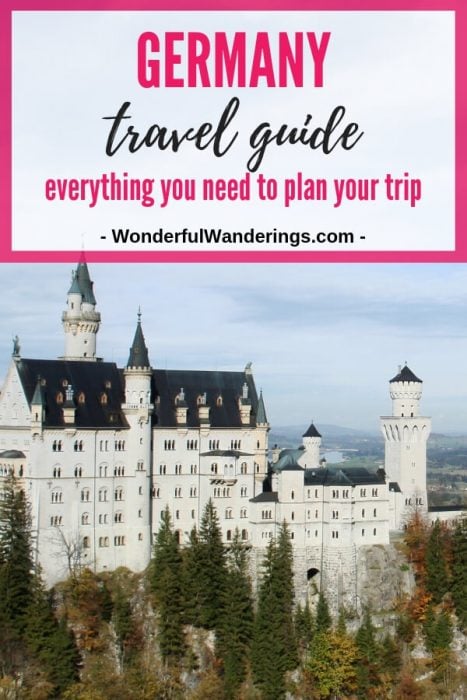
Join 58,000+ other Wonderful Wanderers!
As an Amazon Associate I earn from qualifying purchases.

The ultimate Germany Travel Guide: the best things to do, see, and eat
Germany has a little something for everyone, from hikes along Alpine paths worn by years of exploration to ancient cobblestone streets lined with shops and restaurants to charming Christmas markets. We love visiting Germany no matter the time of year, so we put together this ultimate Germany Travel Guide to answer all your questions about this unique Central European country.

by Thea Engst
December 20, 2023
If you want your next trip to be to a country that teaches you history, feeds you heartily, and shares its rich cultural roots with you, choose Germany. This nation has a little something for everyone, from hikes along alpine paths worn by years of exploration to ancient cobblestone streets lined with shops and restaurants. We love visiting Germany no matter the time of year, so we put together this ultimate Travel Guide to answer all your questions about this unique Central European country.
The best time to go What to see What to eat and drink What to do Souvenirs to buy What to pack
Germany Travel Guide Basics
Currency: Euro
Language: While German is the national language, the country has several dialects that originated in different regions with influences from surrounding countries. Most people also speak English, especially in larger cities.
UNESCO-listed sites: Germany is home to an astounding 52 UNESCO World Heritage Sites, but some of the most well-known are Cologne Cathedral, the Rhine Gorge, and the city of Berlin.
Best way to get around: There’s nothing more reliable than the German train system, or the Deutsche Bahn. Some of their trains travel at a regular pace and others are high-speed, getting you to your destination even faster. Either way, the Deutsche Bahn darts commuters and tourists alike to over 300 stations daily, both within Germany and to other countries like France and the Netherlands. So, whether you’re exploring a city or heading to a different part of Germany entirely, you won’t be disappointed (or late).
Phrases to know:
- “Danke” means “thank you.” “Bitte” means “please.”
- “Wo ist die toilette?” means “Where is the bathroom?”
- “Sprechen sie Englisch?” means “Do you speak English?”
Fun fact: A very common response when being asked if someone would like to do one thing or another is “Ist mir wurst,” which translates to “This is sausage to me.” It’s a colloquial way of saying that you don’t have a preference.

When to travel to Germany
The ideal time to go on tour to Germany depends on why you like to travel and what you’re visiting Germany for. “My number one thing about Germany is there is no bad time to travel there. There’s something amazing to see in every season,” said staffer Shannon. Germany has four distinct seasons, each offering ample reasons to visit. If you’re trying to decide when to go, here’s just a glimpse into what you can expect for things to do in Germany depending on the time of year.
Visit in the fall for festivals and pleasant temperatures. If you’re wondering what to do in Germany between October and December, this time of year offers cooler temperatures, fewer crowds (we love a short line!), and, of course, Oktoberfest, which begins in September and ends after the first Sunday of October. Already heading to Germany on our Oktoberfest: Germany, Switzerland & Austria tour ? Here’s everything you need to know .
Visit in the winter for the Christmas markets. You don’t need to be in a big city to stumble upon a Christmas market in Germany. Like most of Europe , the country explodes with these illuminated, joyous marketplaces come late November, and we consider visiting them one of the best things to do in Germany. “Rothenburg ob der Tauber is a quaint town in Germany that is straight out of a storybook,” said staffer Sarah. “While it’s beautiful any time of year, it’s particularly special around the holiday season.” Interested in going to a holiday market? Good news: We offer two tours that highlight Christmas markets in Germany. Check out our Christmas Markets of Historic Germany and Christmas Markets of Germany, Switzerland & Austria tours .
Visit in the spring for the blossoms and crisp weather. The country’s flora and fauna flourish in the spring, and hiking through the Bavarian Alps is brisk, scenic, and one of our favorite things to do in Germany this time of year. You won’t have to worry about overheating easily, so you can focus on spotting alpine snowbells, spring crocuses, and maybe even the rare edelweiss! If you’re looking to go hiking, one travel tip for Germany is to pack layers, as temperatures can fluctuate throughout the day.
Visit in the summer for long days of exploration. The longer, warmer summer days mean having more time to enjoy the best things to do in Germany. From swimming in pristine green lakes to tasting wine at vineyards along the Rhine, there are countless reasons why Germany bustles with travelers in the summer months. Visit Germany on tour during this season and see for yourself.

Things to see in Germany
In a country of 52 UNESCO World Heritage Sites, you’ll have plenty of options for well-preserved history to admire and cultural experiences to enjoy, as staffer Shannon discovered when she visited. “There’s something for everyone,” she said. “You have the mountains down south with amazing skiing and hiking, castles and walled cities everywhere, and Berlin is especially great if you like museums.” That being said, here are some of our favorite things to see and do in Germany.
Neuschwanstein Castle. There’s no shortage of fairy tale castles to visit in Germany, but Neuschwanstein is one of the most famous. Built by opera enthusiast King Ludwig II of Bavaria in the 19th century, we consider it one of the most iconic things to see in Germany. Ludwig never got to see his Robert Wagner-inspired masterpiece completed, but you can view the ornate palace that inspired Walt Disney himself on nine of our tours to Germany . Thinking about traveling to Bavaria to visit this castle? Discover everything you need to know about Neuschwanstein Castle before you go .
The Black Forest. While this region’s name might sound a little intimidating, it’s quite the opposite. Full of year-round festivals, the craft of woodworking, and even luxury spas—Germany’s Black Forest is a must-see for anyone looking to visit an area that’s full of rich cultural traditions and warm hospitality. “Southern Germany is absolutely beautiful,” said staffer Aaron. “The Black Forest—where the Brothers Grimm’s fairy-tales are based, the namesake of culinary classics like Black Forest Cake and Black Forest Ham, and the native home of the cuckoo clock—and Freiburg, the sunniest city in all of Germany, are of particular note.” Read more about why we love to visit the Black Forest , and plan your trip with us on our Switzerland, Alsace & the Black Forest tour .
The Berlin Wall. Large pieces of the Berlin Wall—once a symbol of division, now one of reunification—still stand in the city. Berlin also commemorates its years spent divided with a brick line running through the city noting where the wall once stood. You can visit Checkpoint Charlie, a recreation of a border crossing between West and East Berlin. But beyond the wall, Berlin itself is worth a visit. The city today is akin to Paris in the ’20s—full of young artists, vibrant restaurants, and no shortage of activities from day to night. Check out more tips for traveling in Germany with our list of things to do in Berlin and don’t miss a thing in the iconic city when you go on our Historic Germany: Berlin to Bavaria tour .
Cologne Cathedral. Another UNESCO World Heritage Site in Germany, this Gothic cathedral took more than seven centuries to complete. Despite evolving styles and technology, the multiple builders stayed true to the medieval plans (written on parchment paper!), creating a cohesive, astounding triumph of architecture and faith. What’s even more notable? The cathedral still hosts active services, making it one of our favorite things to see in Germany.
Rhine Tower. Located in Düsseldorf, the Rhine Tower offers a remarkable view of the city and the Rhine River. Perhaps surprisingly, it also houses a Japanese restaurant. In the 1970s, several Japanese companies headquartered their European branches in Düsseldorf. The employees who immigrated to Germany for work laid roots there and created a unique cultural fusion with their German neighbors. Today, Düsseldorf has some of the best Japanese food you can get outside of Japan.

What to eat and drink in Germany
No German travel guide is complete without mentioning of food. German cuisine is typically hearty, savory, and protein-packed, and enjoying it is one of the best things to do in Germany. The country’s heritage of craftsmanship and precision extends from its hand-carved cuckoo clocks to its handcrafted signature dishes. Here are just some of our favorite things to treat ourselves to when we’re on tour in Germany .
Spätzle. Most akin to pasta, this German dish is simple, and generally made of flour, eggs, water, and salt. It’s cooked and seared to achieve a slight crispness on each side, like a tiny, salty, pancake. Spätzle is typically served as a side to a meat dish with a buttery, herbal sauce or tangy sauerkraut. Sometimes, cheese is added to make the spätzle less of a side dish and more of a main event. One of our Germany travel tips? Try multiple renditions of spätzle. (Thank us later.)
Bratwurst. Bratwurst is a fried sausage, which means it can be made with a variety of meats and different herbs. There are more than 40 different styles of bratwurst, so we won’t name them all. We will, however, recommend that, no matter where you are in Germany, you try a few different types.
Blaukraut. This classic German side of braised red cabbage is sweet and sour, making it an ideal complement to many entrees. The bright taste cleanses your palate between bites and breaks up the rich meat it often accompanies. Duck and blaukraut, for example, are a common pairing for German holiday dinners.
Schnitzel. While schnitzel roots lead to Italy, Germany lays claim to some of the best in the world. Here, schnitzel is made with tenderized meat—usually turkey or pork—then breaded and fried. The main event for German schnitzel is the variety of sauces that you choose to top it with. And, if you’re thinking ahead, you can get a side of spätzle to soak up your remaining sauce.
A Pfannkuchen, Pfalz, Kreppel, Krampfen, or Berliner pastry. One pastry of many names, the Berliner is made of sweet fried dough filled with either jam or vanilla cream, dusted in powdered sugar or coated in a sweet glaze. One thing is certain: No matter how you refer to it, you’ll be calling it delicious.
Schnapps. We all know that Germany makes one-of-a-kind, regulated, delicious, beer. But not everyone knows that Germany excels in making other distilled delights like wine and schnapps. We love trying different schnapps when traveling the country because they’re made with natural, local produce and cover a range of sweet and savory flavors. This author found that a lot of Bavarians like to make (and share) their schnapps.
Check out our Germany tours

What to do in Germany
There are plenty of indoor and outdoor activities to enjoy when you’re on tour in Deutschland . Here are just a few of our travel tips for Germany.
Pay your respects at the Berlin Holocaust Memorial. We couldn’t create a Germany Travel Guide without mentioning the country’s commitment to remembrance and respect. “The Berlin Memorial to the Murdered Jews of Europe (a.k.a. Berlin Holocaust Memorial) is an abstract labyrinth of concrete, rectangular blocks of varying heights over multiple city blocks—the view from outside and within the memorial inspires and nearly requires reflection of the lives lost,” said staffer Jordan.
Go off the beaten path to the Moselle Valley. “One of the best trips I ever did in Germany was a visit to the Moselle Valley,” said staffer Michael. “It’s not a big expanse, but a narrow and winding river valley where some of the best and oldest riesling vines grow up on very steep slopes. It’s a part of Germany I suspect many people simply don’t know about, but it’s got a great service culture, beautiful little taverns, and grand country estates. The town of Koblenz is a great starting point for a trip down the Moselle: It’s where the Rhine and Moselle meet, and provides stunning vistas of both rivers. Further down the winding valley, many of its towns are like something out of a storybook. Towns such as Bernkastel-Kues and others are dotted along the river valley and are overlooked by expansive vineyards that date back centuries.”
Snack your way through Berlin. Berlin itself is a UNESCO World Heritage Site, but the city also has a lot of modern attractions to offer. Known for creative cocktail bars and five-star restaurants, the metropolitan, historic German capital has a little something for everyone (much like Germany itself). “The Berlin Wall is a must, but beyond that, there are many treasures to explore,” said staffer Libby. “I would suggest the waterfront bars and pools along the river that are popular in summer.”

Best souvenirs to buy in Germany
Germany is known for well-crafted items, from beer to cars and everything in between. That brings us to our next travel tip for Germany: Save room for souvenirs. Here are some of our favorite things to shop for.
A cuckoo clock. Invented in the Black Forest of Germany, these quirky clocks elicit feelings of fairy tales and days past. Conveniently, for travelers who want to take one home, they’re made in a multitude of sizes.
Christmas ornaments. A Germany travel tip from us: Commemorate your time spent at the various Christmas markets with dressings for your tree.
Dirndl or lederhosen. The dirndl dress and lederhosen are traditional clothes that have been worn in Germany for centuries. These outfits are still donned for festivals, special celebrations, and, most notably, Oktoberfest.
Riesling wine. We could write a Germany Travel Guide solely about what wine to drink there. Instead, we recommend that you bring home one of the tastiest souvenirs possible—a bottle of German wine. The country may be known for its rieslings, but it produces plenty more delicious varietals, too. Try a blaufränkisch if you like a dark, peppery red wine, or go for a pinot noir from the Moselle Valley—which was once famous for white wines like rieslings and elblings but is now producing excellent full-bodied reds due to climate change.

What to pack for Germany
Are you all booked and ready for your trip to Germany ? Let’s talk about the most essential travel tip for Germany: what you need to pack.
Seasonal (and layerable) clothing. We recommend making sure you have a sweater or sweatshirt with you, no matter what time of year you’re there, for when temperatures cool in the evening. If you’re in Germany in the winter, temperatures will range between 30–40 F, so bring a hat, gloves, and winter coat.
Shorts, dresses, or skirts that cover your knees. Want a travel tip for Germany and beyond? Throughout Europe, you may be denied entrance into some churches or cathedrals if your knees are showing. If you’re visiting in the summer and want to explore these religious buildings, make sure your knees are covered.
Comfortable shoes. Whether you’re looking to hike or stroll city streets, one of our top travel tips for Germany is to make sure you pack shoes that are comfortable enough for all-day wear.
A European power adapter. You will need either a type C or type F adapter for use in Germany. We recommend the former; it works in many other European countries, too.
Reusable products. Germany has instituted strict single-use plastic bans, which means you won’t be able to find items like plastic straws, cutlery, or plates. One of the best Germany Travel Guide suggestions we have is to bring anything you normally reuse. This means you should bring your own reusable straw and shopping bag (you will be charged for any bags at stores—even though they aren’t plastic). We always suggest that you bring a refillable water bottle on your travels to help do your part in reducing single-use plastics as well. Want to do more? Get tips on how to travel more eco-friendly here.
Ready to plan your German adventure? Book your trip to Germany today.
About the author
Thea fell in love with travel as soon as she arrived in Venice, Italy on a family trip as a child. Since then, she has made having adventures around the world a priority, with trips like retracing her grandfather’s steps through WWII, climbing glaciers in Alaska, and horseback riding in Iceland. Thea is a nomad at heart, always planning the next trip. In her off-time she is working on a novel inspired by the woman she was named after, mixing cocktails, and watching any procedural crime show she can find.
Related tours
More travel inspiration, stay on vacation don’t mind if we do..
Save up to $350 on tours, plus save an extra $50 with code EXT50 on tour extensions for 2025 bookings.†

Looking for the perfect summer trip? Here are the best places to travel in June

Neuschwanstein Castle: Everything you didn’t know about this famous, fairy-tale castle

7 destinations that’ll whisk you to the world of “A Court of Thorns and Roses”

14 solo trips you can book to visit the world’s top solo travel destinations

Guide to German beer: What to know about Oktoberfest & the best beer to try in Germany

Spending Christmas solo? Here’s why you should visit Europe’s Christmas markets on tour

Ready to spend a week in Europe? You don’t want to miss these 10 trips in the off-season

The top-10 traveler-reviewed Europe trips to book this Black Friday

Why Central Europe is the perfect destination for solo travelers

Our favorite LGBTQIA+ friendly cities around the world

8 places to visit in the winter that will make it your favorite travel season

Do you love nature and adventure travel? Visit these 20 cities in the mountains to see the world from new heights

6 best travel experiences to invest in this year

5 Bucket list events not to miss in 2022
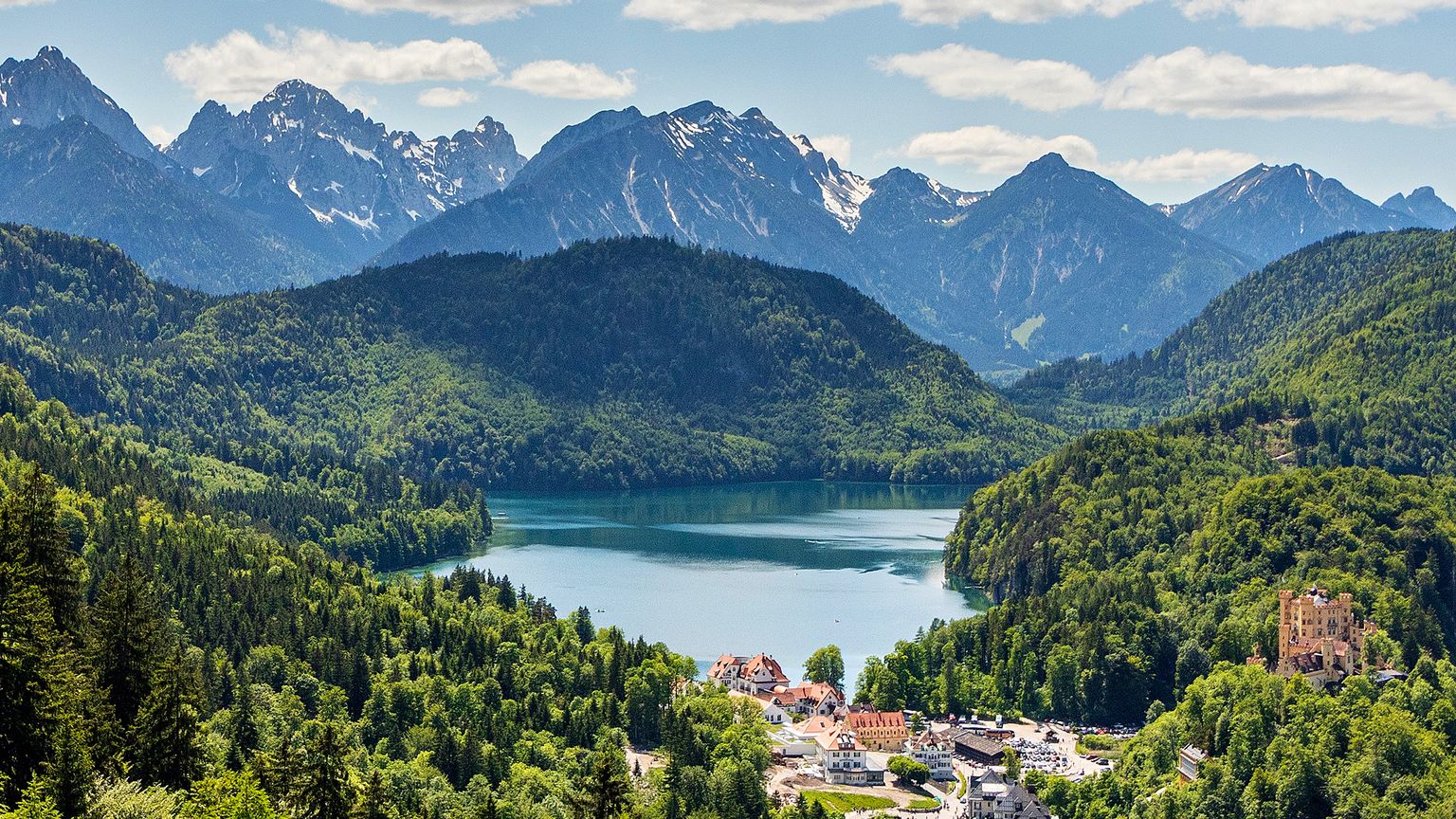
Multi-country trips in Europe to book now

Iconic beers to try around the world

6 fairy-tale castles to visit in Germany

14 incredible places to see in Germany

6 travel predictions for 2022: where to travel next year
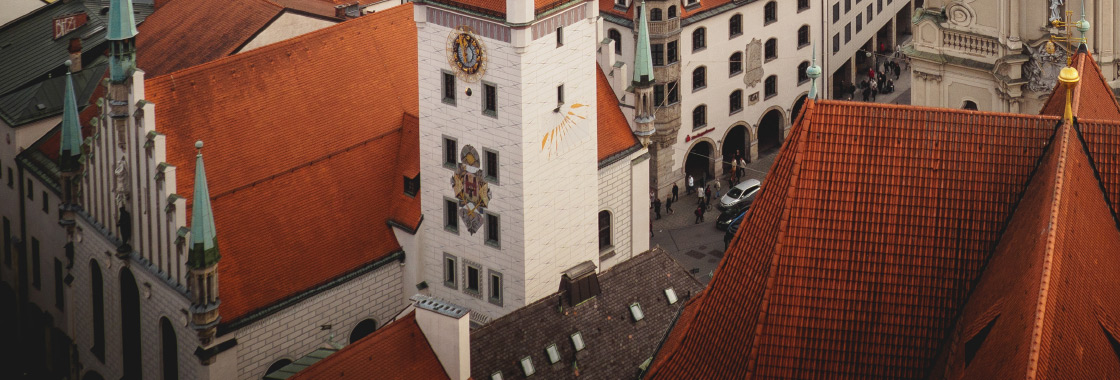
Your ultimate guide to Germany
- Getting there
Germany contrasts gritty, industrial cities such as Munich and Dusseldorf with fabulous forested landscapes and fairytale castles. Echoes of its storied past are everywhere from the Nazi camps that still scar the landscape to the colourful remains of the Berlin Wall, now a gallery for Europe’s coolest street artists. Welcome to our Germany travel guide.
Meaty bratwurst and rowdy beer halls, magnificent, windswept beaches lapped by the Baltic Sea and the endlessly evolving creative scene – there are so many incredible things to do in Germany, it is guaranteed to capture your heart.
So where to start when planning your German adventure?
Here are our picks of the best things to see and do in Germany.
Best Time to Visit Germany
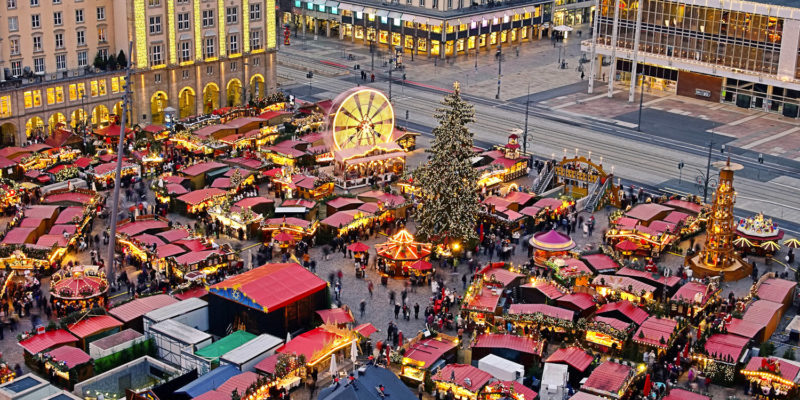
featured post
How to enjoy the best of Germany in winter
The land of beer will melt your heart in Germany's winter wonderland. If you're dreaming of a white Christmas then you ...
With so many things to see and do in Germany, there’s never a bad season to visit. For pleasant weather and fewer crowds, it’s best to visit Germany in the shoulder seasons of May to June and September to October.
If you’re timing your visit to fall during the spring months of March and April, the black forest will be looking particularly beautiful as the leaves come out. The best places to visit in Germany in May are the Mecklenburg Lake District, a romantic landscape of lush hills and glassy lakes, and Stuttgart, which hosts Europe’s biggest spring carnival every year.
The weather in Germany in summer is generally sunny with a few showers, and the climate is fairly consistent wherever you go, although the south of the country tends to be slightly warmer. Cologne is one of the warmest cities in the country, while Berlin tends to be warm and rainy in the summer. Music fans are in luck as there are hundreds of electronic music festivals in Germany at this time of year.
If you’re after snow sports, head to the mountains in winter. Or get into the festive spirit with a steaming cup of gluhwein (mulled wine) at Nuremberg’s famous Christmas market.
How to get there
You can fly to Germany from Sydney, Melbourne, Brisbane and Perth although there are no direct flights. Stopovers are typically in Dubai or Singapore and the major international airports in Germany are Berlin, Munich, Frankfurt and Hamburg. Once you’ve arrived, the rail network is a famously efficient way to explore the country.
Exploring Germany in the winter
There is no doubt that Germany takes on a particular charm in winter, when the gingerbread cottages in The Alps are dusted with snow and icicles glitter on the historic castles’ roofs. Cochem is a picturesque medieval town that is chock-a-block with snug taverns, perfect for whiling away chilly afternoons, while ski resort Garmisch-Partenkirchen clears 110 km of hiking trails through snowy forests. Discover the best of Germany in winter with our practical guide.
Best spots to Visit in Germany
Its beguiling combination of ancient traditions and cutting-edge modernity make Germany an incredibly rich destination. Where you go entirely depends on what sort of trip you are looking for, although with so much variety it’s easy to combine several different holidays into a single visit. Known for its boundary-pushing creative scene, Berlin is a natural place to start – check out our insiders’ guide for the best places to see, stay and eat.
Munich has a slower, more sedate atmosphere and some fascinating cultural sights, while the North Sea Islands boast nostalgic fishing villages and fabulous hiking.
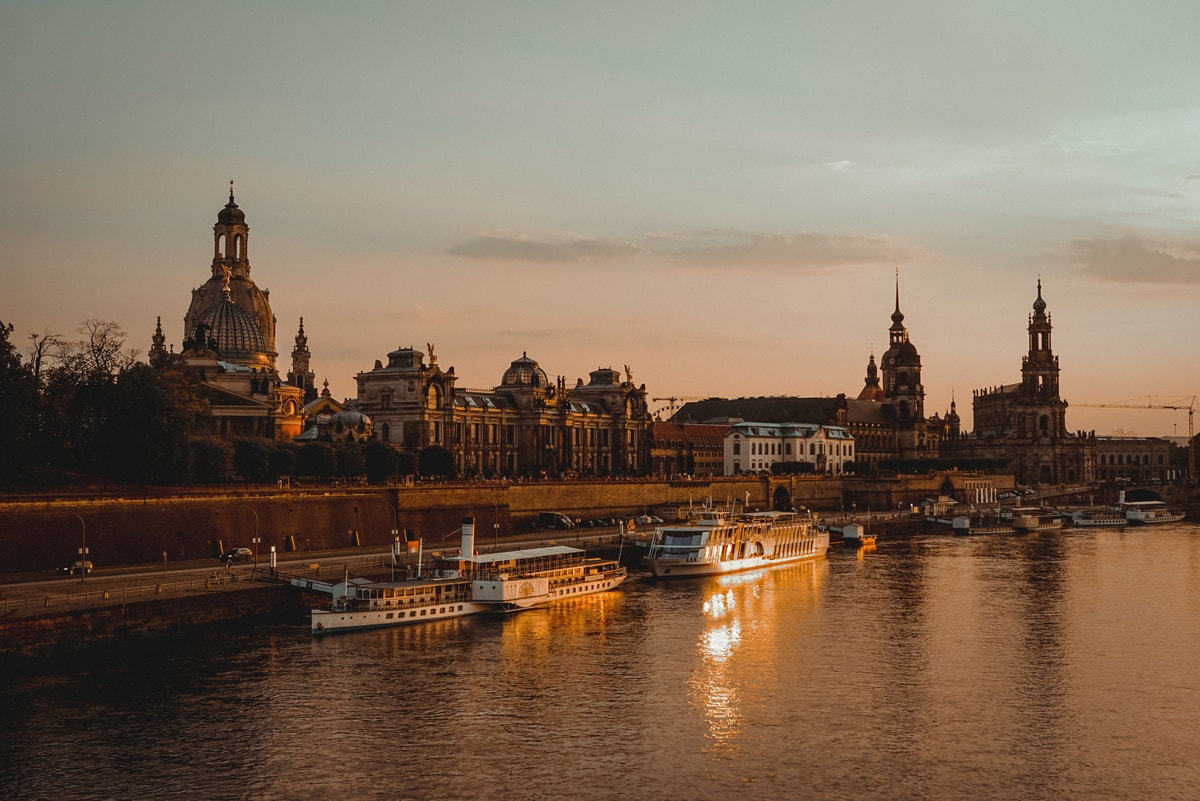
7 captivating day trips from Berlin
If you want to see more of Germany without checking out from your Berlin hotel, we’ve got the list for you. You’ve ...
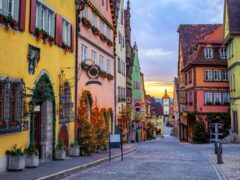
Unravelling history in Nuremberg: A city of trials and tribulations
From medieval emperors to untouchable hangmen, there is more to the history of Nuremberg than meets the eye. As I look out rounde...
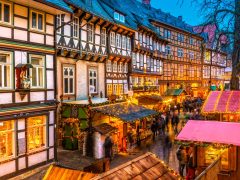
The 7 cutest German Christmas towns to feel merry in
If you're looking for a magical winter getaway in Europe, it's hard to find a better option than these festive German towns. Whil...
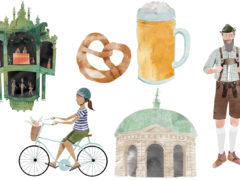
Five-minute guide to Munich
This vivacious German town is festive all year round. Words Megan Arkinstall, illustrations Lauren Merrick (more…)...
Top Things To See & Do in Germany
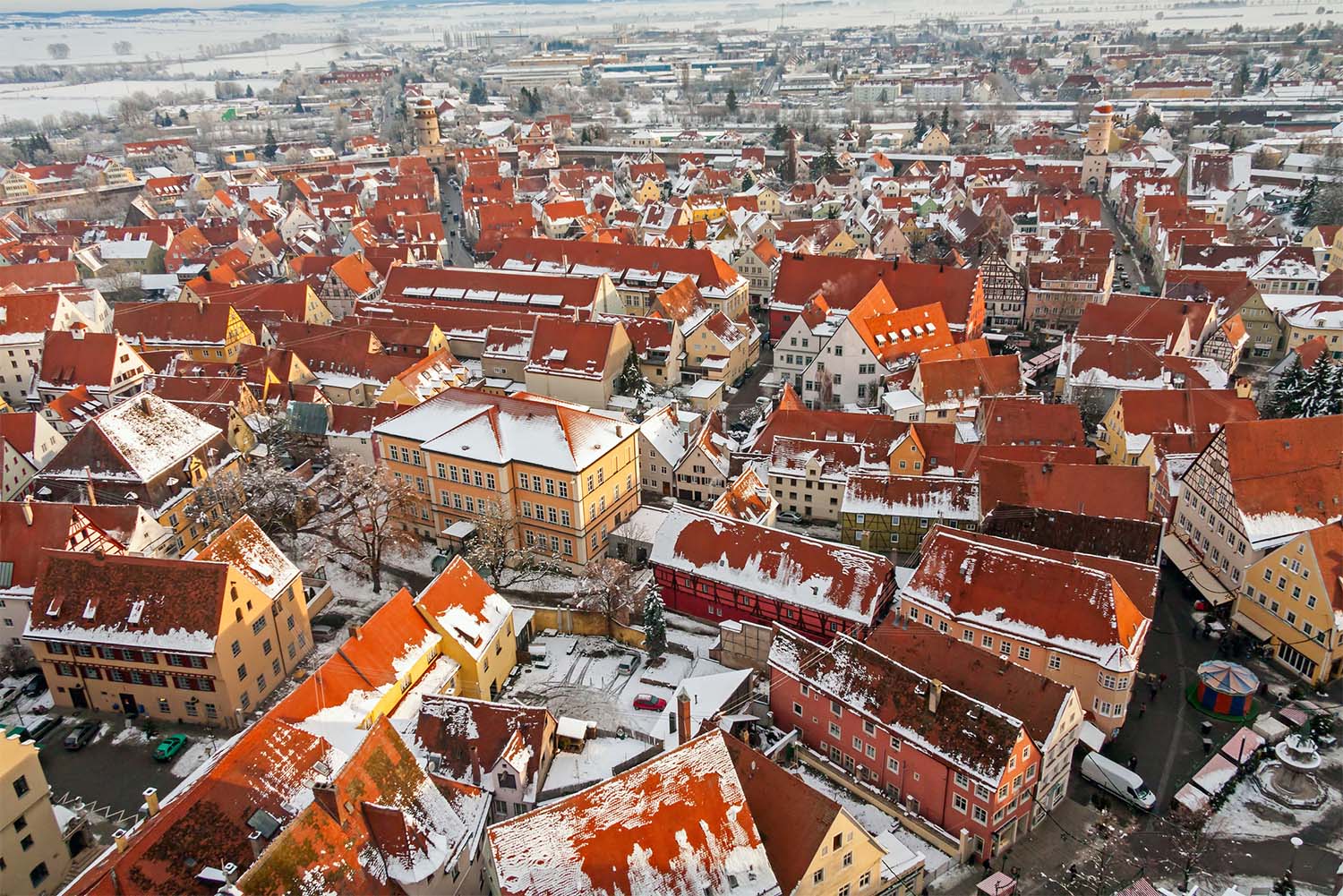
Discover Germany’s most romantic road trip route
Germany may not be considered one of Europe’s most romantic escapes, but that’s a glaring oversight, because the idy...
With so many must see things in Germany, you may find yourself struggling to pick.
Wine-lovers will enjoy discovering some of Europe’s lesser-known wine regions in Franconia and Baden, while foodies will adore comforting dishes such as apple strudel. History buffs, culture vultures and architecture addicts will be entranced by cities like Berlin, Cologne and Potsdam, while those who love the feel of the wind in their hair and fresh air in their lungs can’t miss out on a hike through the black forest.
Here are some of the best things to see and do in Germany, no matter what kind of holiday you’re looking for.
Cultural Events & Popular Festivals
Germany’s traditional festivals are as ancient as they are eccentric. Kaltenberg is a medieval festival, Asparagusfest in Schwetzingen celebrates the harvest, while Munich’s Oktoberfest is the biggest beer event in the world.
You may associate carnivals more with Venice than Germany, but Cologne has embraced the idea with a huge parade on Rose Monday, as well as plenty of other street parties over a two-week period.
Berlin’s Berinale is the biggest film festival in the world, while Wurstmarkt is the world’s biggest wine festival.
Christmas markets
The fragrant smell of gingerbread and steaming glühwein (mulled wine), the sound of Silent Night and twinkling trees… the majority of traditions we associate with Christmas actually started in Germany and you can find them all at the many Christmas markets up and down the country.
Nuremberg is one of the most famous, while Stuttgart is ideal for families with its skating rink and Grimm’s fairy tale figures. To really embrace the Christmas spirit head to the Konstanz Market which is framed by vistas of the snow-capped Alps.
Visit castles
Germany was divided into hundreds of fiefdoms until it was united and it has the castles and palaces to prove it. Think curvaceous turrets and soaring spires, austere battlements and precisely manicured gardens.
Schloss Neuschwanstein is a wedding cake castle perched on a hilltop in Bavaria, Berlin’s Charlottenburg Palace is a trove of artistic booty including huge hordes of precious porcelain while Schwetzingen has enchanting gardens where peacocks roam freely.
A driving holiday along Germany’s Beer and Castle route does is every bit as great as it sounds! Plan your own trip with our handy guide.
Popular beaches in Germany
The south of Germany is peppered with idyllic lakes but if you’re looking for sunbathing and swathes of white sand, the north coast is the place to be as it’s home to the most popular beaches in Germany.
Pack a picnic and explore Sylt Island’s 40 km of coast by bicycle. Characterised by thatched cottages, historic lighthouses and winding lanes, this is one of the most traditional and genteel resorts in the country.
Ahlbeck Beach on Usedom Island is scattered with strandkörbe (traditional wooden benches with stripy sun covers) giving it a charming, nostalgic air, while the only way to reach Langeoog Beach is by horse-drawn carriage as there are no cars on Langeoog Island.
Germany tours
In a country as large and diverse as Germany, a tour can be a great way to get under the skin of the culture and provide a focus for your trip.
A must visit is the Black Forest, a deep, dark landscape that occasionally reveals waterfalls and sturdy timbered farmhouses. Try exploring it by van or hike the Westweg trail, which runs the length of the forest from Pforzheim to Basel.
The Danube River is the mighty artery that flows through the whole country. Explore the Danube Cultural Route, which mostly passes through Bavaria, to see beautiful wetlands and sights such as Regensburg Old Town, which has Unesco status for its medieval bridges and gothic spires.
Petrol heads will love the Mercedes Benz factory tour, while an eagle’s nest tour will take you to a beautiful mountain tea house originally built for Adolph Hitler.
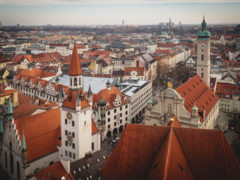
Inside Munich’s most thought-provoking museum
Munich’s striking Documentation Centre for the History of National Socialism confronts the city’s dark past through its illumi...
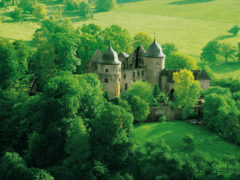
Iconic German places that inspired these famous fairytales
Have you explored the fairytale route yet? Explore the place where Cinderella and Rapunzel were born... One of Germany’s most ...
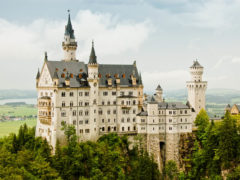
The Black Forest and Bavaria by van
In part one of International Traveller's Europe by campervan odyssey, Freya Herring goes in search of legendary cake and fairy-tal...

These are the world’s best cities for street art
The artistic antidote to urban greyness, street art has become increasingly popular across the globe. But for the best cities to ...
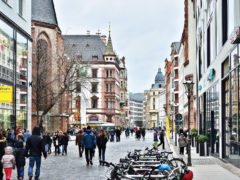
Bach, battles and bratwurst: Germany’s cultural icons
From Berlin to Leipzig, IT reader Michael Azize explores Germany’s historical depths and cultural icons. (more…)...
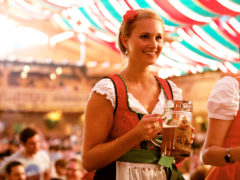
Germany’s best beer festivals, beyond Oktoberfest
In a country where beer is king – some 5 billion litres of it is produced annually – it’s not surprising that Germany is hom...

Review: Real Berlin Experience Tour
We lace up our walking shoes and go undercover to review the Real Berlin Experience Tour, to get a local's insight into the city's...
Choosing Where To Stay
There are sixteen states in germany and they all have a very different personality, with an equally different hotel scene.
Take your pick from industrial chic warehouses in Berlin, a cosy mountain crash pad or a gracious renaissance villa set in manicured gardens.
Whatever your hotel penchant is, your guaranteed to find it in Germany. Take a closer look at your accommodation options here.
Where to stay in Frankfurt
A contemporary financial powerhouse, Frankfurt’s skyline is a gleaming jungle of steel, glass and concrete. Yet turn down a side street and you’ll suddenly stumble on a half-timbered tavern warmed by a roaring fire, where old timers gather to drink apple-wine. There are 46 neighbourhoods to choose from. Creative hub Lindenberg is always a good choice – try the Libertine Lindenberg, a quirky haven with just five rooms. Hotel und Restaurant Schmärrnche is in a picturesque historic building in Bornheim, a charming mass of cobbled alleys lined by the city’s best shops. After a long night of bar hopping in happening Bahnhofsviertel, rest your head at hipster Hotel und Restaurant Schmärrnche
Where to stay in Berlin
Glamorous, gritty and oozing historic interest, Berlin has a creative pulse that is hard to resist. But in a city this sprawling, choosing the right neighbourhood is crucial. Mitte is at the very centre, within walking distance of key hubs such as Alexanderplatz and Potsdamer Platz and has plenty of high-end options such as Hotel de Rome and Das Stue Berlin. Home of the city’s punk scene in the 70s, Kreuzburg is still a cultural melting pot with funky, good-value hotels like Hotel the Dude. Known for its high-end boutiques, leafy Charlottenburg is the place to go for classic luxury. Hotel em Steinplatz was once a favourite with Brigitte Bardot and Vladimir Nabokov.
Accommodation in Hamburg
A laid-back harbour city, Hamburg is finally putting its best foot forward after years of construction and development. New waterfront districts such as HafenCity and Überseequartier are ready to welcome visitors and they have the new hotels to prove it. 25Hours Hotel Altes Hafenamt combines style and value, as well as an excellent cocktail bar. Louis C Jacob is a classically elegant option that looks over the Elbe River. Looking for something a little special? The Atlantic Kempinski is fantastically luxurious. In fact, legendary German singer Udo Lindenberg loved it so much when he stayed there he has made it his full time residence ever since.

Book a room at Das Stue in Berlin, Germany
Ranked #91 in our countdown of the 100 Best Hotels and Resorts in the World. (more…)...

The best luxury hostels in the world
Forget backpacker horror stories, Michelle Tchea discovers how hostels are stepping up their game and catering to the luxury trave...

Where to Eat in Germany
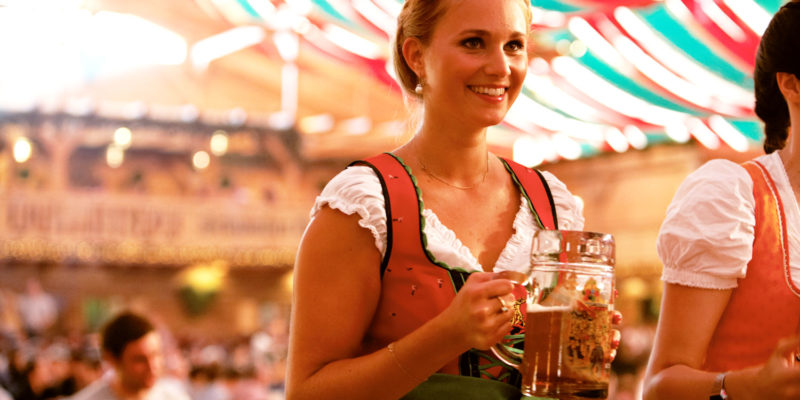
In a country where beer is king – some 5 billion litres of it is produced annually – it’s not surprising that Germ...
So what food do they eat in Germany? Think comforting regional recipes that have been passed down through generations.
Fluffy dumplings from Central Germany and fried fish in the North, green sauce, sausages and pasta pockets are just some of the mouth-watering things on offer.
Discover where to eat in Germany here.
Where to get Bratwurst
Bite into a salty, flavoursome bratwurst and you’re eating a bit of German history, harking back to freezing winters when food was scarce and people needed a way of using up every bit of the animal. There are more than 40 sausage recipes to choose from. The most famous come from Thuringia (where many people think they were invented), including the Coburg Bratwurst, which is grilled over pinecones. Weisswurst in Munich are steamed and served in a bowl of boiling water while Frankonia sausages are cooked in a broth of vinegar, wine and onions.
The best German beer festivals
Beer is Germany’s national drink and Oktoberfest is high on any beer-loving traveller’s list. But what cities host Oktoberfest? Munich’s Oktoberfest is the biggest celebration, but you can also celebrate in Frankfurt and Stuttgart. To get a little further off the beaten track, check out our list of Germany’s best beer festivals beyond Oktoberfest.
Bremen Freimarkt is Germany’s oldest fair and very traditional while Frankfurt Apple Wine Festival is a good alternative for people who want all the fun of the festival but aren’t big beer drinkers.
Popular European & UK Destinations
- United Kingdom
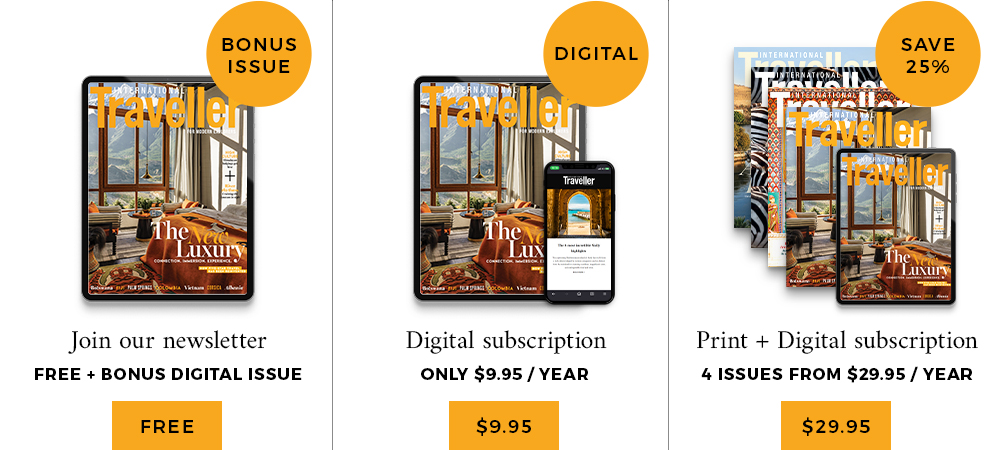

Germany Travel Tips
Your ultimate germany travel guide, with tips, and things to see and things to do in germany. great for first-time and returning travelers..
Found in Central Europe, Germany is a country comprised of 16 states.
It has the largest national economy in Europe and the third-largest car production in the world (famous companies from Germany include BMW, Volkswagen, and Mercedes-Benz).
More than that, Germany is renowned for its stunning architecture, historic cathedrals and castles , forests and mountains, and great beer and food. There is plenty to see and explore here.
Popular City Guides
- Garmisch-PartenKirken
- Places to Visit in Berlin
Our Highlight
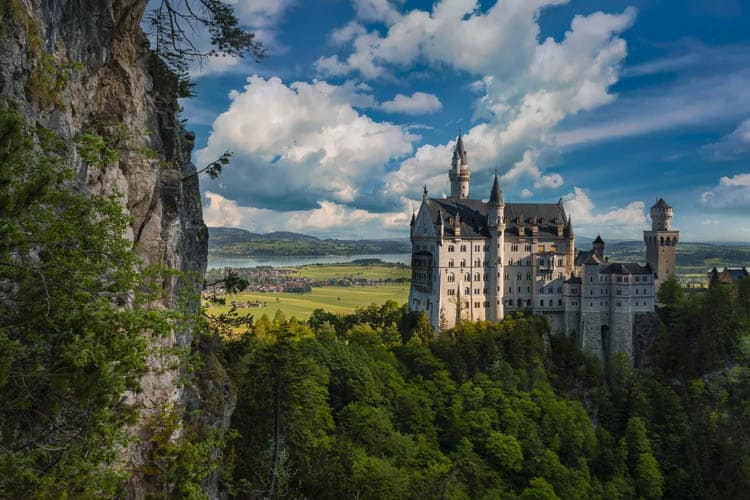
Table of contents
Table of Contents
Fast Facts about Germany
- Power voltage is 230 V at 50 Hz. Type F.
- Germany currency is the euro and 1 euro is equal to 1.12 USD. You can check up to date currency exchange at XE Currency Converter .
- Germany has a renowned transportation system. Buses and trains are considered the best ways to get around the city.
- You do not need a visa when visiting Germany as long as your visit does not exceed 90 days. You will need a passport that has been valid for at least 3 months.
- The most popular cellular networks in Germany are Deutsche Telekom, Vodafone, and O2. Prepaid Sim cards can be purchased through these networks. Photo ID (such as Passport) and a German address are required.
- We use KnowRoaming $3.99 per day Unlimited data. PlanetD readers receive an extra 50% off using promo code DDSave50
- Value-added tax (VAT) comes at 19%. Tax reductions may be issued for certain purchases, like food, hotels, and public transportation. To learn more, click here: https://www.germany.info/us-en/service/09-Taxes/vat-refund/906296
- To say hello in German, it’s “hallo.” To say goodbye, say “tschüss” (pronounced like “juice” but with “tch” replacing the “j”).
Things to See and Do in Germany
- Hike the Mountains of Bavaria and visit the Alpspix lookout and Germany’s highest peak, Zugspitz.
- Neuschwanstein Castle : The most photographed building in Germany, and the castle that inspired Disney’s Sleeping Beauty, it is considered the ultimate fairy tale.
- Don’t miss visiting Berlin . Germany’s most artistic and exciting city.
- Take a drive along Germany’s Romantic Road
Germany Travel Guides
- 20 of The Best Things to do in Bavaria
- The Best Places to Visit in Berlin, Germany
- Things to do in Garmisch Partenkirchen, Germany
Accommodation
Budget – Germany offers many budget hotels ranging from 22 to 45 euros a night.
Mid Rang e – For mid-range hotels, expect to pay roughly 65 euros a night.
High End – To say hello in German, it’s “hallo.” To say goodbye, say “tschüss” (pronounced like “juice” but with “tch” replacing the “j”).
Check out our favorite booking platforms Booking.com , Tripadvisor and Air B&B for the best deals on accommodation
Food : There are a variety of bars and restaurants located in Germany. You can find things like wraps and doner kebabs for 4-6 euros each.
A cappuccino will cost around 3 euros while pastries can start at 2 euros. The restaurants in Europe have many great dishes, such as their national dish Sauerbraten (pot roast dish, usually made with beef).
Less expensive restaurants offer meals for 8-15 euros, while more mid-range restaurants tend to charge 30-60 euros.
The Best Ways to Get Around Germany
Getting to germany:.
The Frankfurt and Munich airport are the two most popular airports to fly to.
Flights: You can check for the best flights to Germany on Skyscanner .
Transportation:
Train: Trains are a good way to travel for a long distance. Tickets cost 30 to 50 euros for a one-way trip. If you plan to use the train a lot, consider getting a multi-day pass to save some money
Bus: The public transportation system in Germany is highly efficient and can get you most places you need to go. Tickets for one-way bus fare start at 2.8 euros.
Taxis / Uber : Uber is available in Germany in Berlin, Frankfurt, Munich and Düsseldorf.
Taxi prices vary from city to city, but average €3.50 to start and then €2 per km.
Car Rental: Renting a car: To rent a car in Germany, a U.S. driver’s license is needed, with some places also requiring an International Driver’s License purchased before your trip. You need to be over 21 to rent. 60 euros per day is the starting price.
You can also compare prices here
When to go To Germany
- May and October are two of the best months to visit Germany.
- In May, the cherry blossoms are out, temperatures warm up to 65 degrees Fahrenheit, and it is not yet too crowded with tourists, which means you can get better deals.
- October is another popular month to visit, as the annual Oktoberfest beer festival is held in Munich , as well as the Festival of Lights in Berlin.
Where to Stay in Germany
Platzl Hotel – This is a great hotel to stay at when you’re visiting Munich. It’s located right in the city center so you’ll have access to restaurants and shops whenever you want to go out. They offer free breakfast and Wi-Fi.
Hotel Indigo Berlin – You’ll love this hotel when you’re staying in Berlin. It’s close to Alexanderplatz so you’ll find be close to the bustling area. They have an outdoor terrace to enjoy during the warm weather and a highly-rated restaurant.
Le Meridien Hamburg – When staying in Hamburg, check out this chic hotel. They offer breakfast at the top of the 9th floor with a view of the city. There’s also a fitness center and bicycles to rent.
Check out our favorite booking platforms Booking.com , Tripadvisor and Air B&B for the best deals on accommodation in Germany.
What to Pack for Germany
Germany has a varied landscape and depending on where and when you are going, you will need to pack accordingly
The summers are hot, but in the Bavarian Alps, expect cool mornings and evenings.
Nights can be chilly any time of the year. Germany has a proper winter and if you are visiting Christmas markets or ski resorts, you will need winter clothes.
See our post How to pack for the winter deep freeze.
- Sunglasses: Great for the many sunny days that Germany has, especially for those venturing outdoors.
- Waterproof clothes/shoes: With so many hiking destinations, these are a must to keep your feet and clothes dry.
- Power adapter: As Germany uses the UK power voltage, an adapter will help keep all your electronics charged appropriately.
See our packing tips: packing tips
Germany Travel Guide: Best Booking Resources
Whenever we travel to we make sure to start with these companies. We have tried a lot of different ones over the years and all of these have consistently proven to be the best when it comes to offering great prices.
We have used every one of these personally and continue to do so.
- Booking.com : This is our go site to when comparing prices for accommodation. It usually has the cheapest prices, especially in Europe and we love their interface. Not to mention you get free cancellation and you are guaranteed the best price.
- Trip Advisor : What we like about Trip Advisor is that we can look at all the reviews and then book our accommodation. TripAdvisor is where we go when we want to compare prices with multiple accommodation providers.
- VRBO : is the main search engine we use when we are looking for a home or apartment rental. It can sometimes be cheaper than hotels and it is the best way to stay in areas that offer a more local feel.
- Hostelworld : With one of the largest databases of hostels in the world, Hostelworld is the go-to site when you are looking for budget accommodation.
- Skyscanner : This is the first place we check for flights. It consistently comes back with the cheapest and best options. It allows us to compare a lot of airlines to get the best price.
- Rome 2 Rio : If you want to see how to get somewhere by plane, train, bus, ferry or car Rome2Rio lays it all out for you as well as related costs.I love how they show it all to you on a Google Map and it works offline.
- Get Your Guide: For all your day trip and city guide needs, we use Get Your Guide. It has the world’s largest collection of things to do with more than 30,000 activities in 7500 destinations.
- World Nomads Insurance: When traveling to Italy you should always have travel insurance. We have found the best bang for your buck is by far World Nomads.
Germany Travel Guide: Related Articles
To browse all our articles and guides about Germany click here
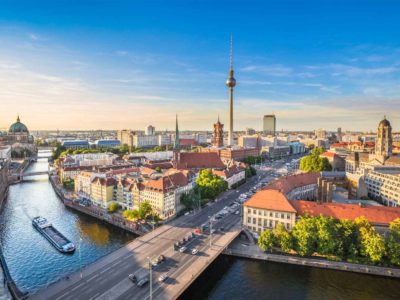
Where To Stay in Berlin In 2024: Best Areas And Places
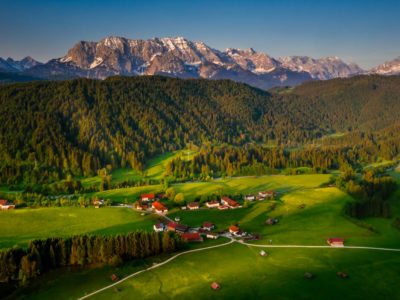
17 Best Day Trips from Munich in 2024
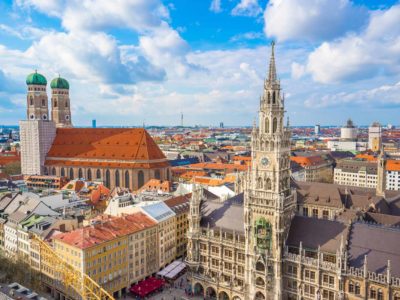
37 Of The Best Things to Do in Munich, Germany
- Cochem Castle
- Federal States
- Natural Wonders
- Plants and Animals in Germany
- UNESCO Sites
- Architecture
- Art Museums
- Famous People
- Holidays & Customs
- Oktoberfest
- Extreme Sports
- Family Trips
- The Romantic Road
- Top Ski Resorts
- Do's & Don'ts
- German Phrases
- Travel Tips Guide
- Privacy Policy
- About Lydia
Welcome to My Germany
Discover the adventures that await.
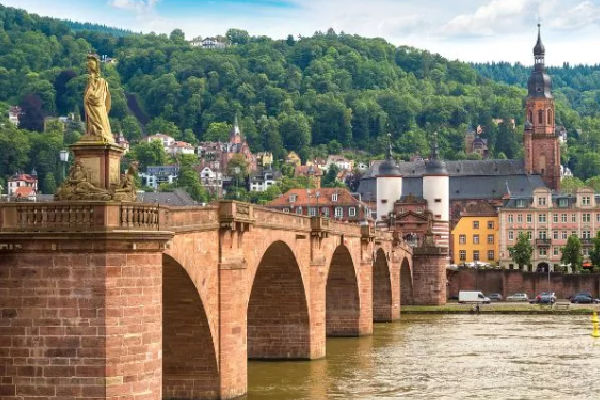
Discover Cities
A rundown of the best cities in Germany to visit. Where to go for historical, cultural, and culinary experiences set in stunning landscapes and beautiful architecture.
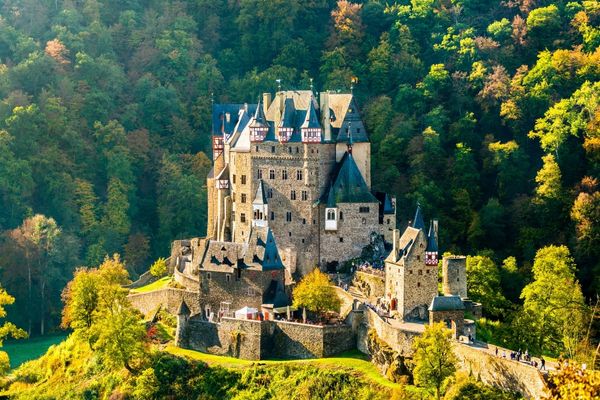
Discover Castles
Discover some of Germany's famous castles, from the iconic Neuschwanstein to the tiniest of country lodges. Uncover interesting facts and helpful tips as you explore!
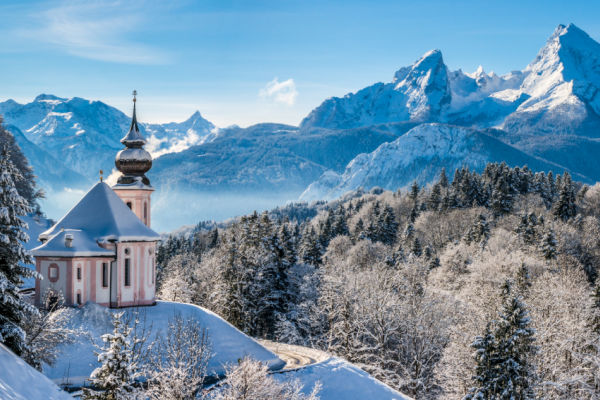
Discover Natural Wonders
Embark on a journey through the natural wonders of Germany with our guide to breathtaking alpine landscapes, turquoise waters, and stunning rock formations.
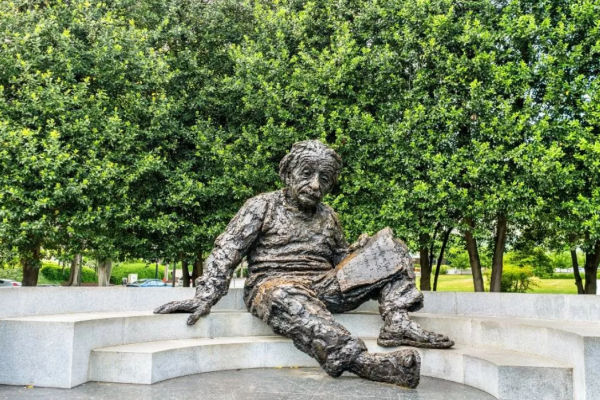
Discover Famous Germans
From famous musicians and poets to kings and queens, Germany was the home to so many inspirational and entertaining folk. Let's learn about the famous Germans in history!
Tour My Germany Travel Guide: Discover the Best of Germany
Do you know where the best place to eat bratwurst in Germany is? Why are there shelves inside German toilets? What is the most famous fairy tale castle to visit?
For answers to all these questions and more , read on!
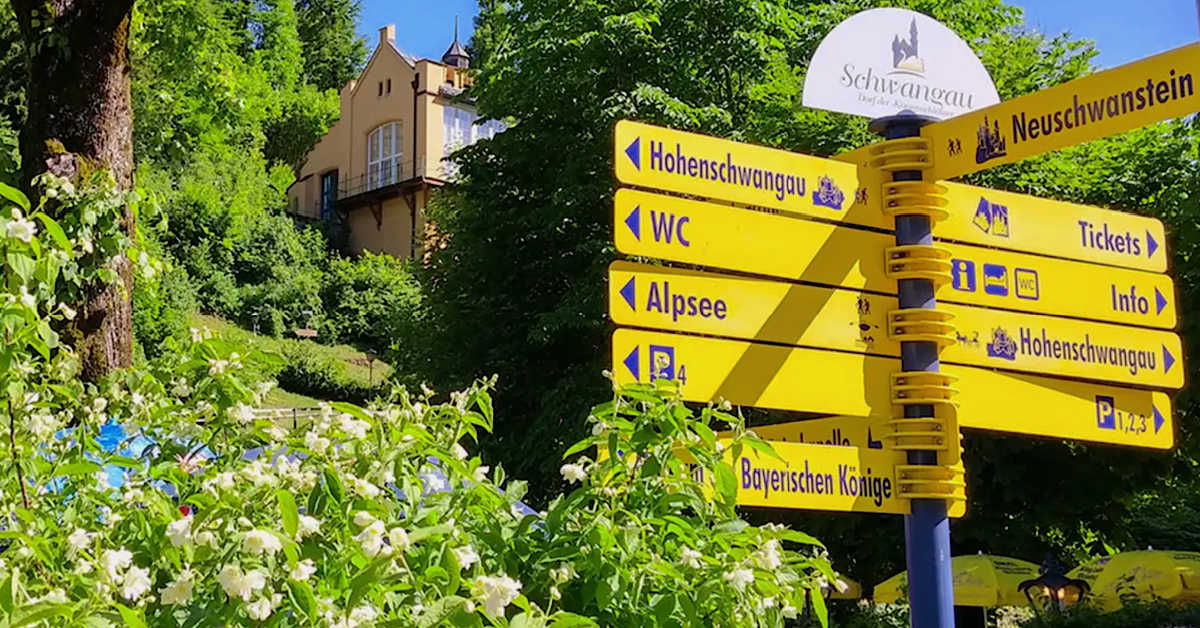
Herzlich willkommen!

I'm Gerhild and for over 15 years, I've been sharing my German cuisine on Just Like Oma . Join me now as we tour my Germany to see where these delicious foods originate.
As we travel, we'll marvel at the spectacular scenery, delve into the local culture, uncover hidden historical treasures, and find the best destinations off the beaten track that are worth exploring.
Joining us on this tour is my son Eran and my granddaughter Lydia each writing as they travel throughout Germany, discovering more about their heritage. Experience the country through their eyes as we:
- Gaze upon fairytale castles and baroque palaces
- Embark on a river cruise along the Rhine River
- Camp in interesting locations throughout Germany
- Drive down the scenic drive down picturesque Romantic Road
- Stroll through the charming Christmas markets in places like Rothenburg ob der Tauber
- Explore historic cities , towns, and the natural wonders of Germany
- Visit more than one UNESCO World Heritage Site
Be inspired to join us! Discover this popular destination in Central Europe, Germany, but not just as a tourist following the typical Germany travel guides.
- The Black Forest and the Rhine valley
- The picturesque shores of Lake Constance
- The iconic Brandenburg Gate
- The majestic peaks of the Bavarian Alps and other natural wonders
- The grand palaces and iconic landmarks and buildings
- The famous Oktoberfest celebration in Munich
Experience all of this in the best way possible, with the help of the travel tips you'll find throughout our Tour My Germany guide.
Gain insights into German culture, including customs, etiquette, and popular activities, whether you're taking a road trip, using train stations, public transportation or some of the busiest airports. Be prepared, making travel plans with the best time to go, whether during peak season or not, and the best things to do and things to avoid .
Explore today's Germany by touring the heart of Europe and visiting the major cities or fairytale towns in southern Germany, or the big cities and smaller towns in northern Germany. Meet the welcoming German people, who will inspire you to continue your quest to learn about all things German, including interestingly strange and fun facts . And of course, savor the delicious German cuisine throughout your journey!
Recent Articles and Newest Posts
Common German Phrases for Travel: Your Essential Guide

The Best Oktoberfest in Germany
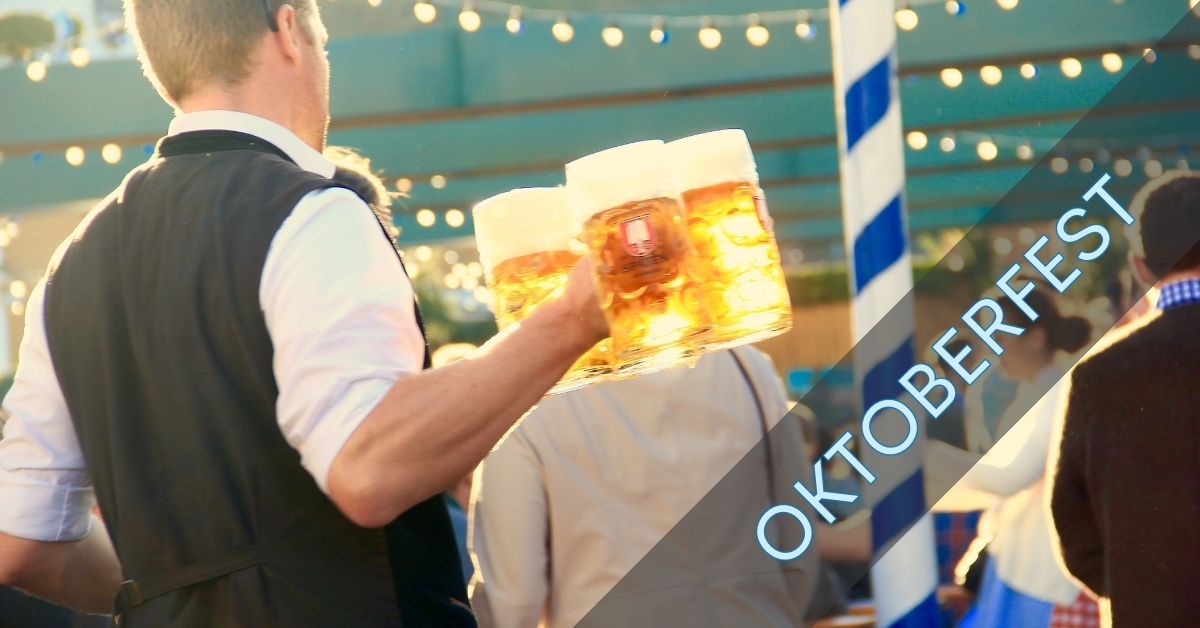
Famous Churches in Germany
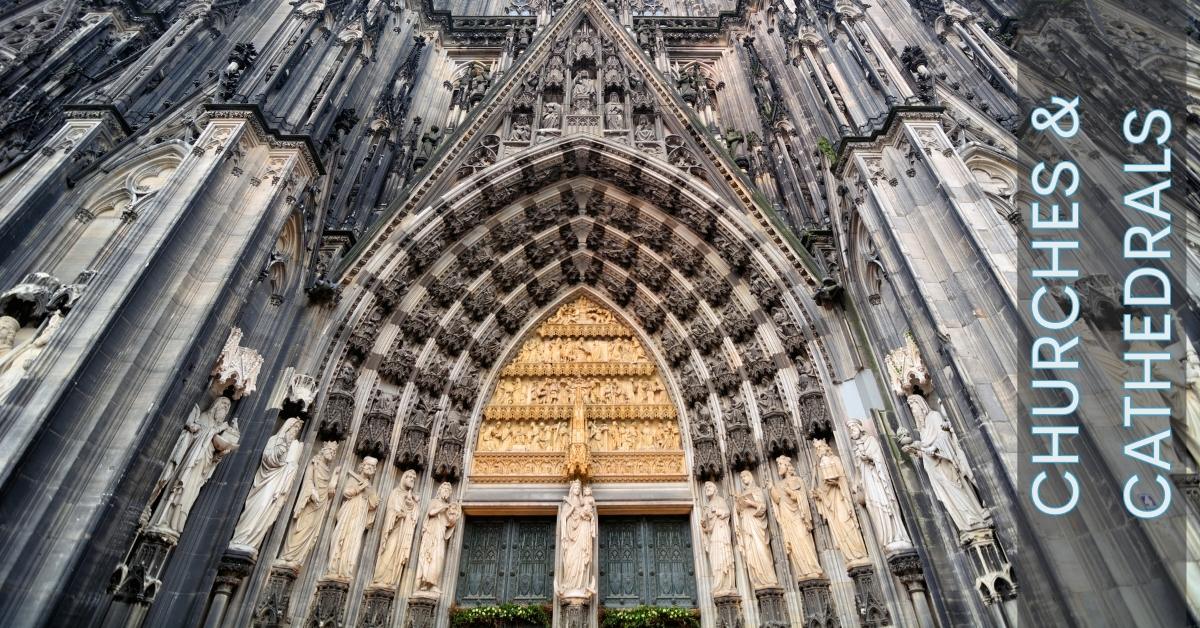
North Rhine-Westphalia, Germany: Travel Guide to NRW
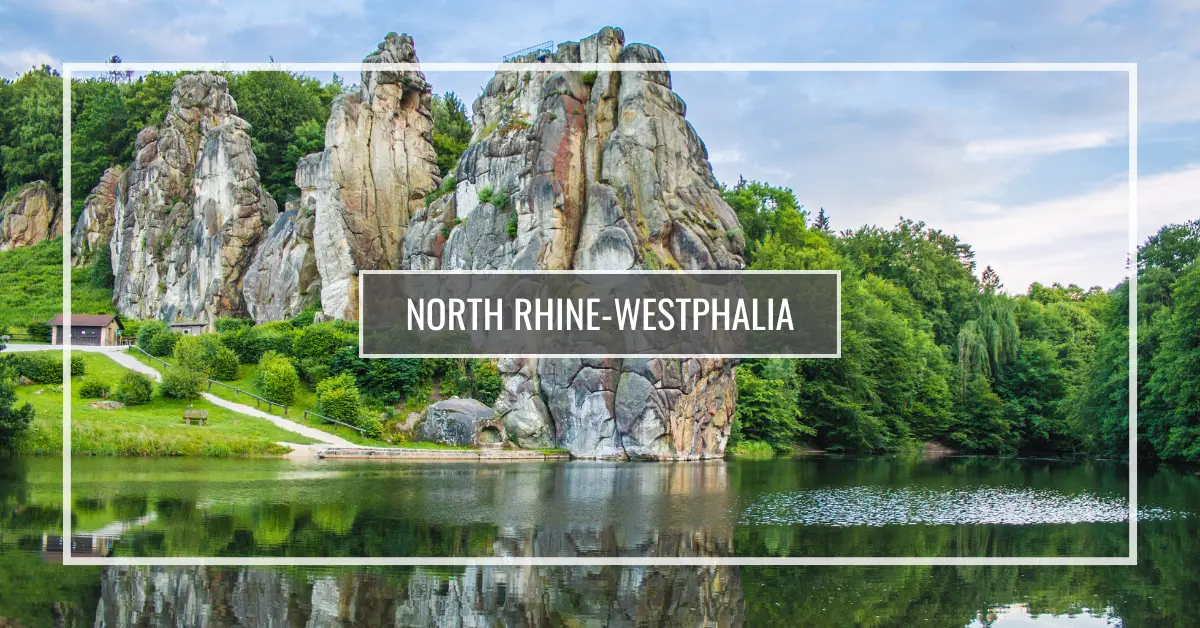
The 16 Federal States of Germany: Facts, Photos, & Map
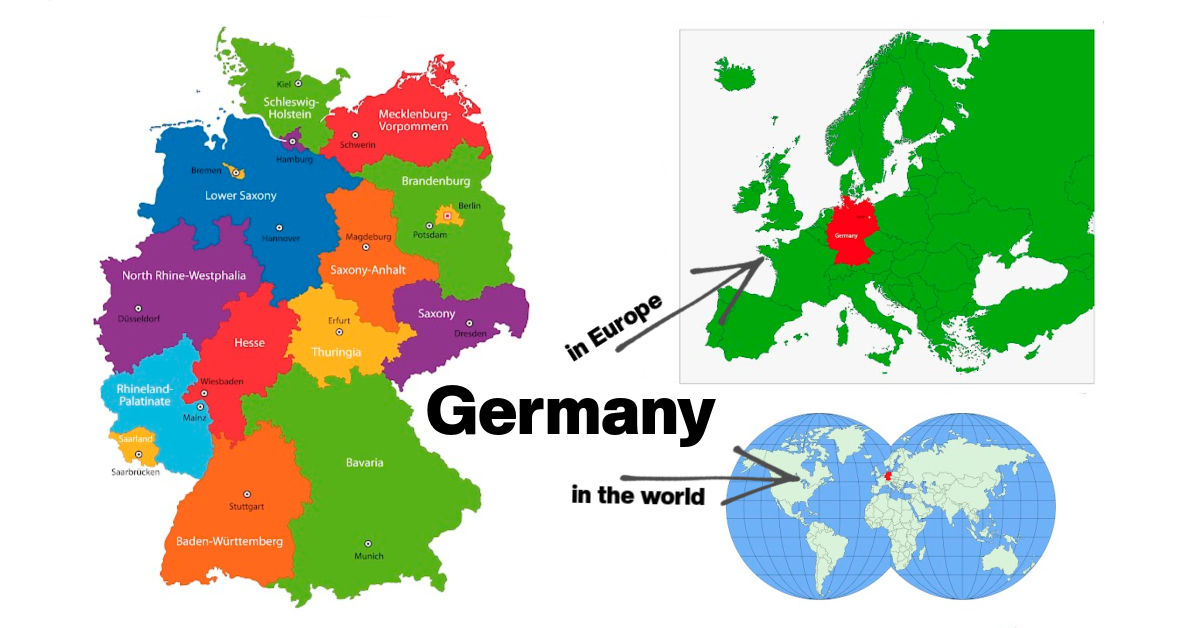
Things To Do in Cologne: A Guide to the City's Best Attractions
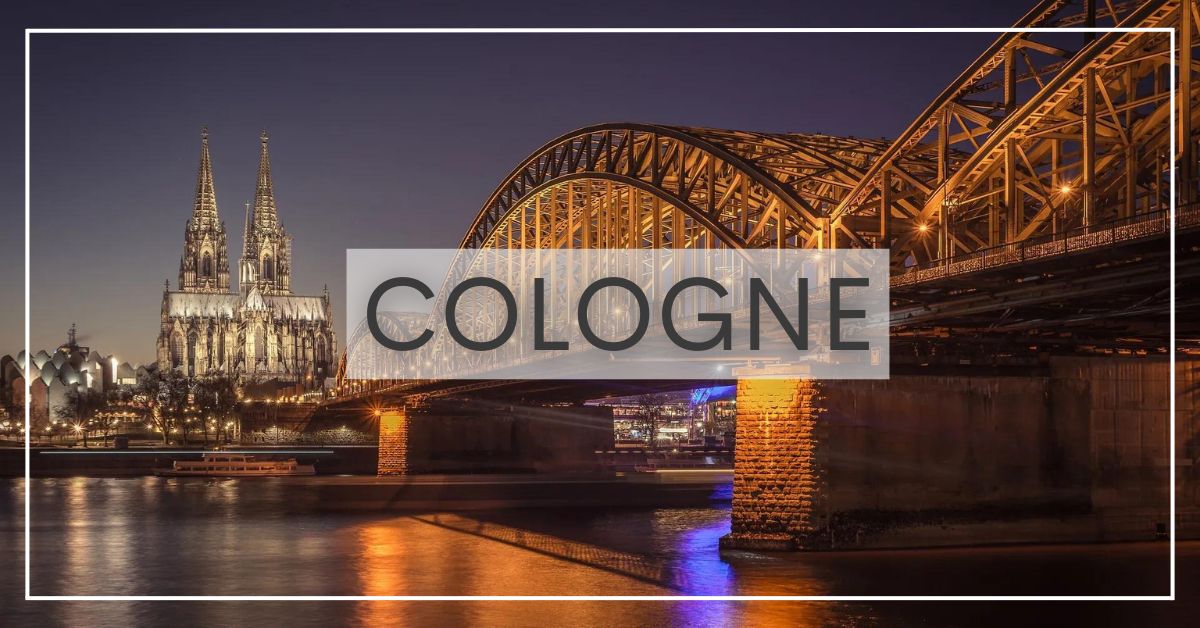
Wine Country and the Mosel Valley: The Best Things to do in Cochem
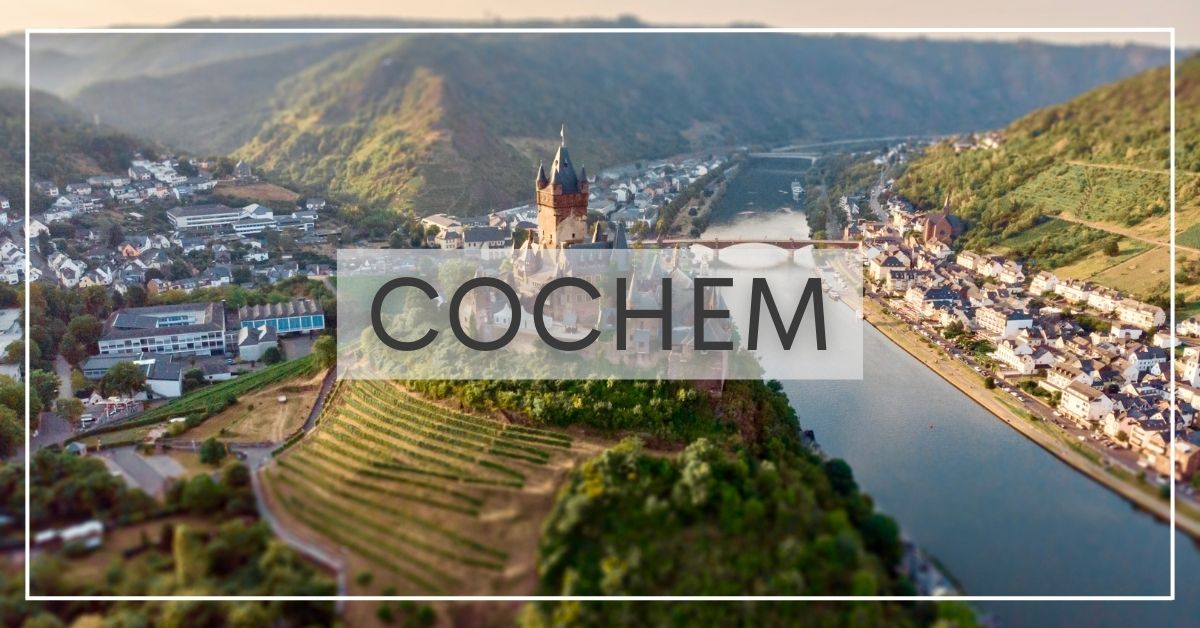
Attractions to See in Dresden: Uncover the Hidden Gems
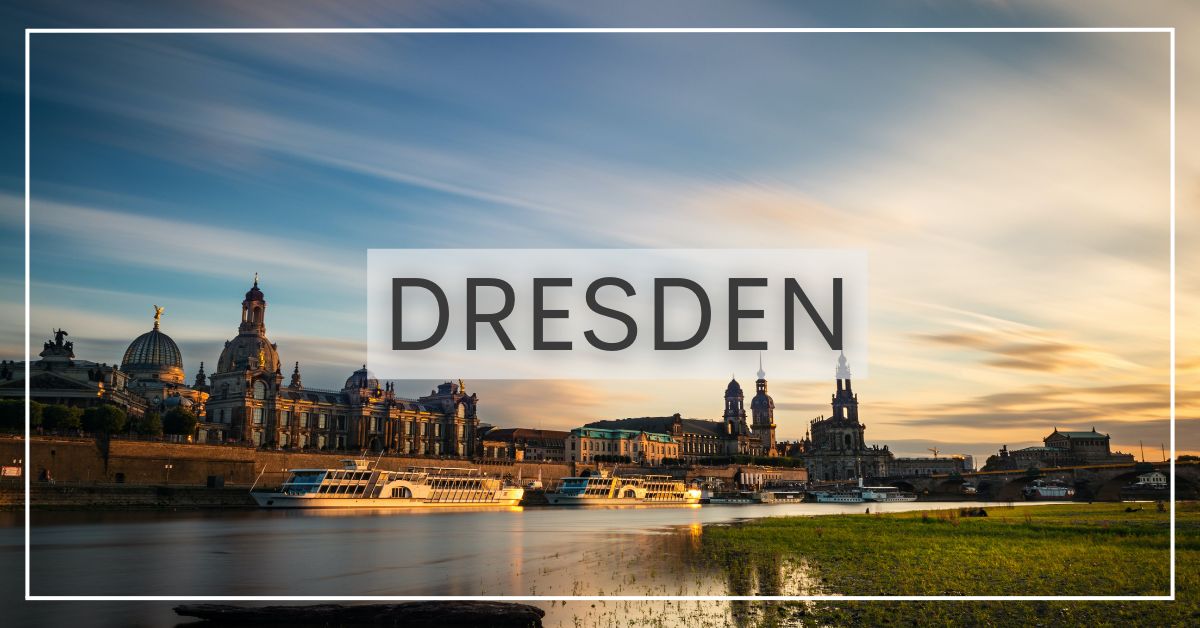
Best Things to do in Rothenburg ob der Tauber
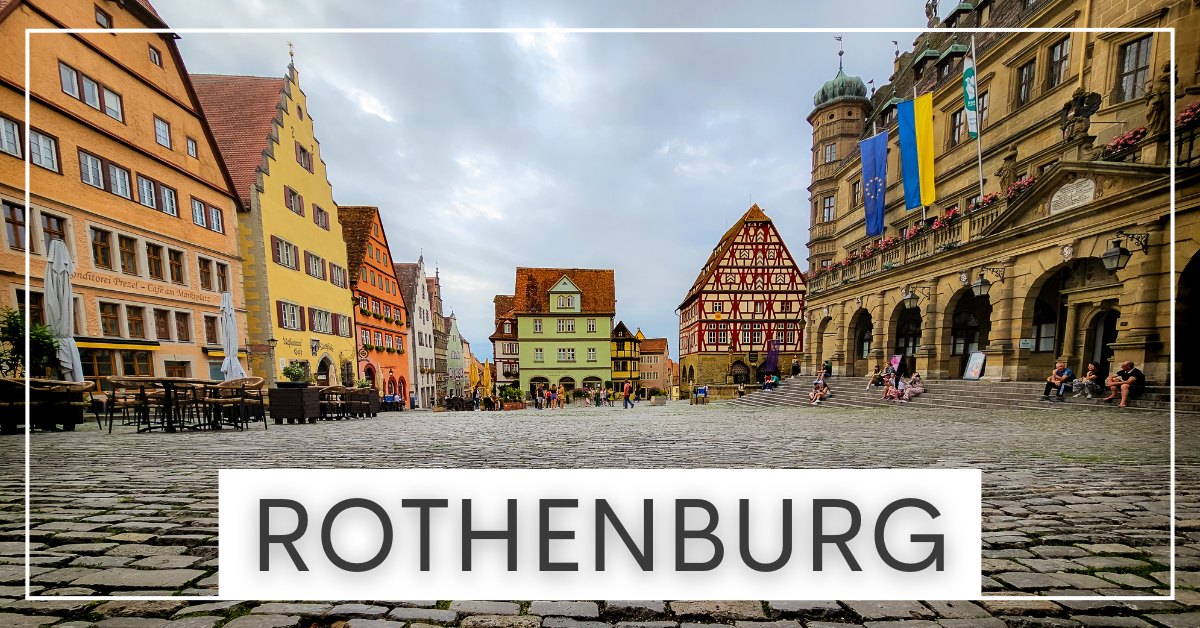
3 Day Berlin Itinerary: Best Travel Guide for 2024
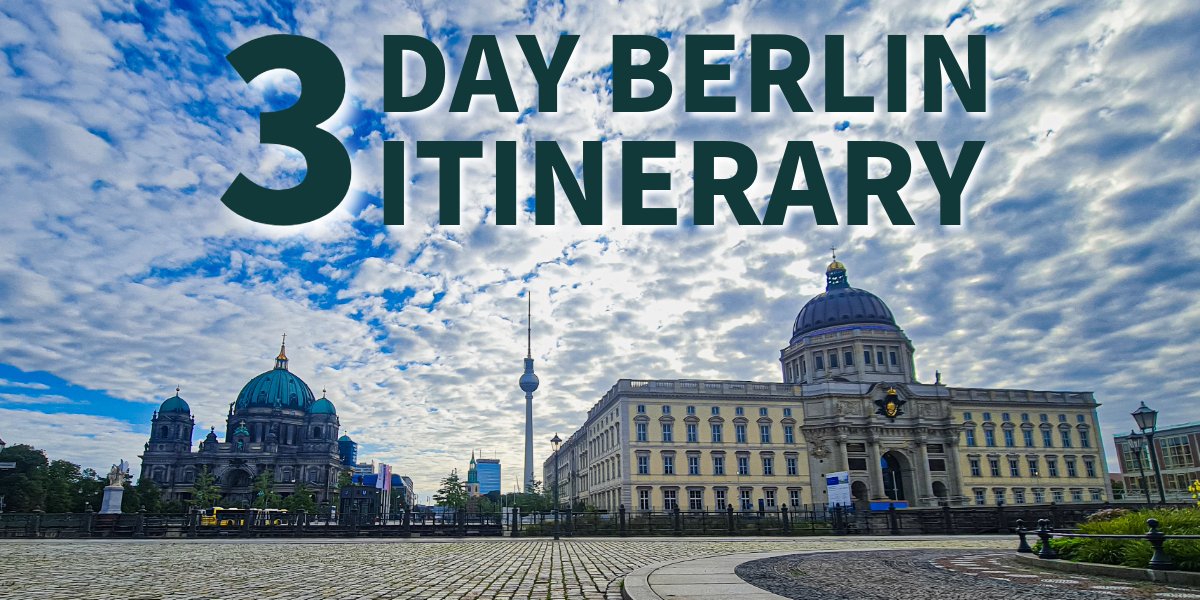
Top German Cities to Visit: A Guide to the Where, What, How, and Why
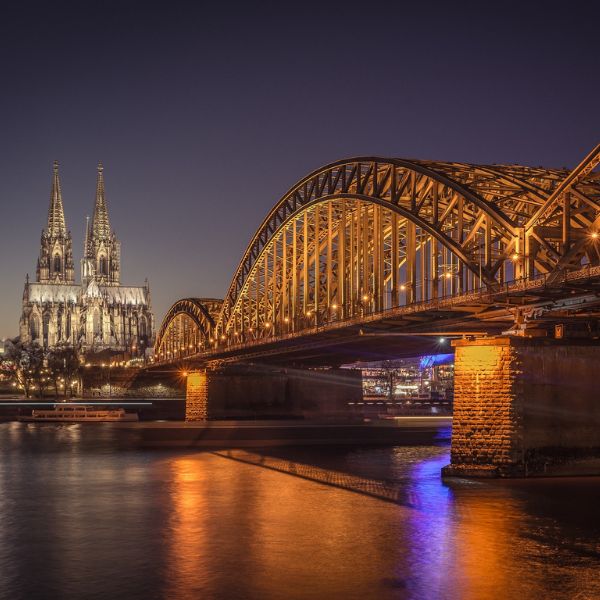
Unique Things to do in Berlin: More than a museum or two.
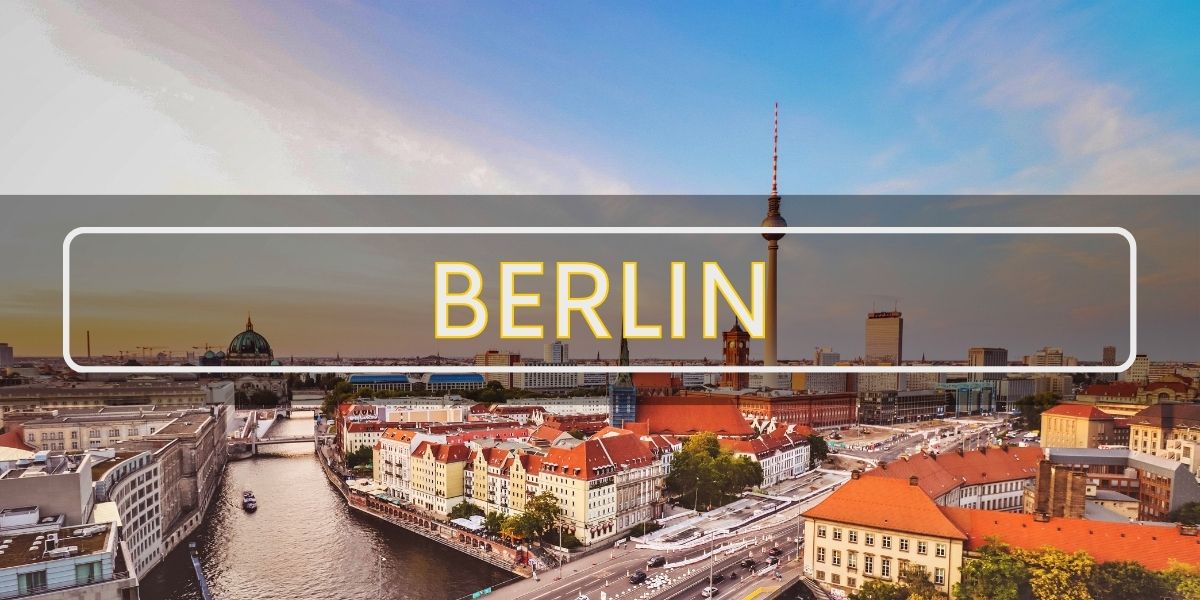
Looking for something different? Use the search in the upper-right corner or go to our sitemap .
Follow us on
SITEMAP | Privacy Policy | Disclaimer | Terms and Conditions | affiliate program
AFFILIATE DISCLOSURE : Tour My Germany participates in various affiliate advertising to provide a means to earn advertising fees by linking to retail websites. We are a participant in the Amazon Services LLC Associates Program, an affiliate advertising program designed to provide a means for us to earn fees by linking to Amazon.com and affiliated sites. We will not promote products WE do not own or would not buy ourselves. Our goal is to provide you with product information and our own personal opinions or ideas. At times, We will showcase services, programs, and products. We aim to highlight ones that you might find interesting, and if you buy items from those companies, we may get a small share of the revenue from the sale.
We are independently owned, and the opinions expressed here are our own. YOU SHOULD ALWAYS PERFORM DUE DILIGENCE BEFORE BUYING GOODS OR SERVICES ONLINE.
8 of the best places to visit in Germany
May 9, 2024 • 6 min read

Plan your trip to Germany with this guide to the best places to visit © Westend61 / Getty Images
At the heart of Western Europe is Germany , a boundless feast for travelers.
Its endless variety of historic yet cutting-edge cities, romantic forests, and cultural riches can often make the task of planning a visit daunting. It would take a lifetime to see all of this fascinating country’s highlights, so take it slow and make a start with our guide to the very best places to visit in Germany.
1. The Middle Rhine Valley (the Rhine Gorge)
As the Rhine , Germany’s second-longest river, flows south from Koblenz , it cuts a gorge through a gasp-inducing landscape of vineyards and castles. The stretch between Koblenz and Rüdesheim, known as the Oberes Mittelrheintal (Upper Middle Rhine Valley) is so special it won UNESCO World Heritage listing in 2002.
A land heavily contested over the centuries, the Oberes Mittelrheintal harbors wonderful castles like Pfalzgrafstein , Burg Rheinstein , Burg Reichenstein and Koblenz’s mighty Festung Ehrenbreitstein .
Planning tip: Make time to visit some of the many wineries and wine bars here. We recommend Bingen’s Weingut Georg Breuer, Alte Weinstube Zum Hubertus in Koblenz and Zum Grünen Baum in Bacharach.

2. Cologne
Cologne (Köln) is known for its liberal climate and its wealth of historic sights. Taking its name from the Romans (who founded it in the first century CE as Colonia Claudia Ara Agrippinensium), it’s been a major center of German history for centuries.
The most tangible symbol of Cologne’s importance and the essential sight is its magnificent 13th-century Gothic cathedral. The Kölner Dom is Germany’s largest church, and was also Europe’s highest building until eclipsed by the Eiffel Tower . Other must-see historical and cultural attractions include the Römisch-Germanisches (Romano-Germanic) Museum and the sublime collection of 13th- to the 19th-century European art at the Wallraf-Richartz-Museum & Fondation Corboud .
Planning tip: Pick up a KölnCard at the Cologne Tourist Board office (adjacent to the cathedral) or at any KVB or DB ticket machines. A 24-hour individual ticket (€9) gets you unlimited public transport and up to 50% off at many cultural attractions, restaurants and shops.
Looking for more budget tips? Here's our money-saving guide to visiting Germany

3. The Baltic Coast
Northern Germany’s Baltic Coast represents a side of the country not many visitors anticipate. The indented southern coast of the Baltic Sea hides great swathes of pure sand, susurrating pines and pristine nature sanctuaries. Highlights include the former Hanseatic power Stralsund, a classic of red-brick Gothic gabled architecture; the sheer cliffs of Jasmund National Park on Rügen Island ; and the birdlife and beauty of the Darss-Zingst Peninsula.
Driving in Germany? Here are the best road trips

4. Rothenburg ob der Tauber
Perhaps the most enchanting village along the entire 400km (250 miles) of the Romantic Road , Rothenburg ob der Tauber (meaning “above the Tauber river”) is a wonderfully preserved example of a medieval German village. Strict heritage protection ensures that every turn reveals meandering cobbled lanes, glimpses of the intact city walls and venerable churches. See the local treasures collected in the Reichsstadtmuseum , housed in a former Dominican convent, and the Alt-Rothenburger Handwerkerhaus , where weavers, potters and other craftspeople ply their trade as they have done for over seven centuries.

5. Munich and the Bavarian Alps
Munich (München), the capital of the Free State of Bavaria (Freistaat Bayern) is the city most visitors associate with “classic” German culture – for while Germany is in fact a patchwork of cultures and dialects, it’s often the Bavarian model of Bierkellers , Bratwurst and Lederhosen that outsiders have in mind. Munich is no cliché, though: Germany’s third-largest city is a center of high-tech manufacturing and cutting-edge culture, as well as the gateway to the magnificent Bavarian Alps .
Essential sights and experiences include the Residenzmuseum , the former palace of Bavaria’s ruling Wittelsbach dynasty; the museum-packed Kunstareal district; and the gracious 17th-century Schloss Nymphenburg . An easy drive south of Munich lie the forested mountains, photogenic villages and ski- and spa-resorts of the beautiful Bavarian Alps.
Planning tip: Oktoberfest – the beer festival that starts each year in September – is synonymous with Munich, and is the busiest and most expensive time to visit. Accommodations are booked solid long in advance, so plan ahead.
Time your visit to Munich right with this seasonal guide

6. Erfurt and Weimar
The proximate central-German cities of Erfurt and Weimar represent an astonishing concentration of cultural achievement and historic significance. Erfurt, capital of Thuringia , has one of Germany’s loveliest medieval centers, while Weimar stands tall as the capital of the eponymous 20th-century Republic, and before that the home of cultural luminaries such as Bach, Goethe, Schiller and Nietzsche.
Erfurt’s essential sights include its cathedral , where Martin Luther was ordained, and the vast, baroque Zitadelle Petersberg . In Weimar, make time for the Goethe-Nationalmuseum , in a building that was the author’s home of 50 years; the UNESCO-listed Herzogin Anna Amalia Bibliothek ; and the modernist treasures of the Bauhaus Museum , which also originated here.

7. The Black Forest
Bordering France and Switzerland , the Black Forest (Schwarzwald) is a vast woodland of more than 6000 sq km (2316 sq miles). From its spruce-swaddled slopes to deep valleys broken by silvery lakes and traditional villages and farmsteads, this diverse rural playground just begs to be explored by car, cycle or foot.
If you’re pressed for time, a drive along the Schwarzwaldhochstrasse ( Black Forest High Road ) from Baden-Baden to Freudenstadt unfurls a series of gorgeous vistas. If you have more time, consider hiking the 40km (25-mile) Panoramaweg or the 12km (7.5-mile) Feldberg–Steig to the forest’s highest peak. Population centers you should definitely include on your visit include Triberg, with its waterfall and cuckoo clocks; the laid-back university town of Freiburg ; and Alpirsbach, with its 11th-century Benedictine monastery .
Planning tip: While travelers are naturally drawn to the Black Forest’s great outdoors, it would be a mistake to overlook the region’s excellent cuisine. There’s Schwarzwälder Kirschtorte (Black Forest gâteau), of course – while lesser-known specialities include venison Baden-Baden , smoked Schwartzwalder Schinken (ham) and skinless lange rote (long red) sausages from Freiburg.
Don't miss Germany's best flavors with this guide to food and drink

No list of German highlights would be complete without the country’s capital and dynamic cultural engine room. Germany’s most populous city, Berlin is a bountiful beast of a place, with some of the country’s definitive museums, dining, art and – perhaps above all – nightlife.
Boisterous Berlin has long had a bohemian streak. While you should definitely make time to for cultural highlights like the Mies van der Rohe–designed Neue Nationalgalerie and the treasure trove that is Museumsinsel (Museum Island), those seeking a party will surely find it in iconic venues like Berghain and Pratergarten , where beer and bonhomie have flowed together since 1837. As ever, Berlin’s party people continue to innovate .
Planning tip: Before you hit town, get yourself a Berlin Welcome Card online. It's available for varying periods of time, from 48-hours to 6-days, and gives unlimited rides on public transport , free entry to more than 30 top attractions plus up to 50% off entry to over 150 more, as well as other benefits.
Explore Berlin one neighborhood at a time with our guide
This article was first published Jun 3, 2021 and updated May 9, 2024.
Explore related stories

Sep 10, 2024 • 7 min read
Find the best ski resorts in Valais, Switzerland, whether you're a powder fiend, all about the après, or content to meander down gentle, tree-lined slopes.

Sep 10, 2024 • 5 min read

Sep 9, 2024 • 8 min read

Aug 26, 2024 • 8 min read

Aug 20, 2024 • 4 min read

Aug 16, 2024 • 9 min read

Jul 31, 2024 • 7 min read

Jul 31, 2024 • 5 min read

Jul 25, 2024 • 4 min read

Jul 17, 2024 • 3 min read

Germany Travel Guide
Looking for an in-depth Germany travel guide ?
Then you’re in the right place!
Planning your Germany travel itinerary but not sure where to start? We’ve got you covered!
There’s so much to see in this country of 83 million people.
From big cities to little Alpine villages, you’ll find that Germany is rich in culture, history, and natural splendors. In this Germany tourist guide, we’ll be sharing some of the best highlights with you.
If you’re wondering where to go in Germany, the cities are a great place to start. Destinations like Berlin, Munich, Hamburg, and Frankfurt all offer something different, from modern architecture and 24/7 nightclubs to historic churches and cobblestone streets.
Of course, some of the best places to go in Germany are the smaller cities and towns. Leipzig , for example, is just a short train ride from Berlin. Johann Sebastian Bach’s former home is full of history, classic German architecture, and art galleries.
The small towns in the Bavarian Alps also offer idyllic experiences and enough space to really see the stars at night. Again, if you’re wondering how to travel Germany, there’s no one way to do it!
The country’s modern transportation system and its central location make it easy to travel to Germany from other European destinations . The country is well-connected to its neighbors by rail and inexpensive flights from nearby countries are easy to find.
A Eurail Pass is also a great option for backpackers who want a little flexibility, particularly those who qualify for youth fares (ages 12-27). Keep all your options in mind as you plan a trip to Germany.
Keep reading to dive into resources that will help you with planning a trip to Germany in Western and Central Europe.
Note: This guide to Germany travel contains affiliate links to trusted partners!

Germany Map
Use this Germany travel map to begin planning your trip to this incredible country!
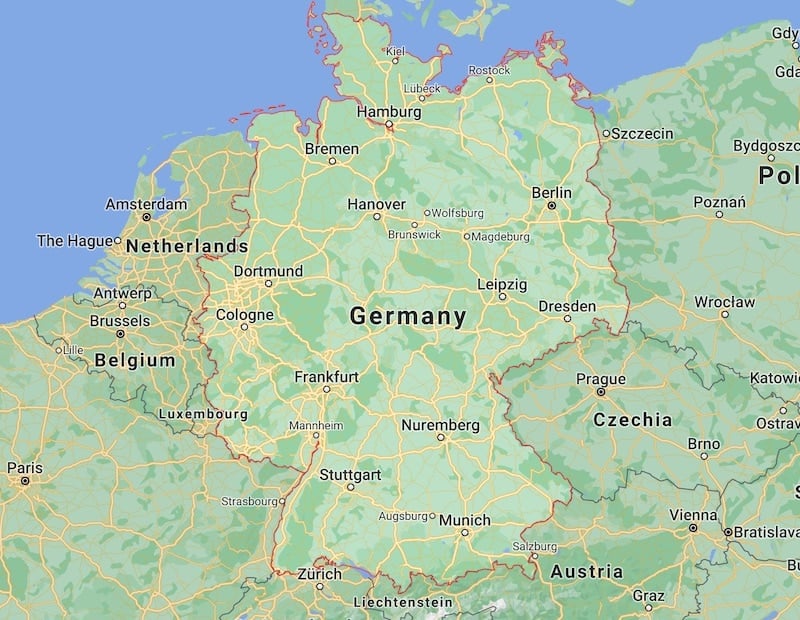
Click here for an interactive Google Map version of the above graphic.
Planning A Trip To Germany Itinerary Resources
If you’re looking for a helpful travel guide for Germany , check out:
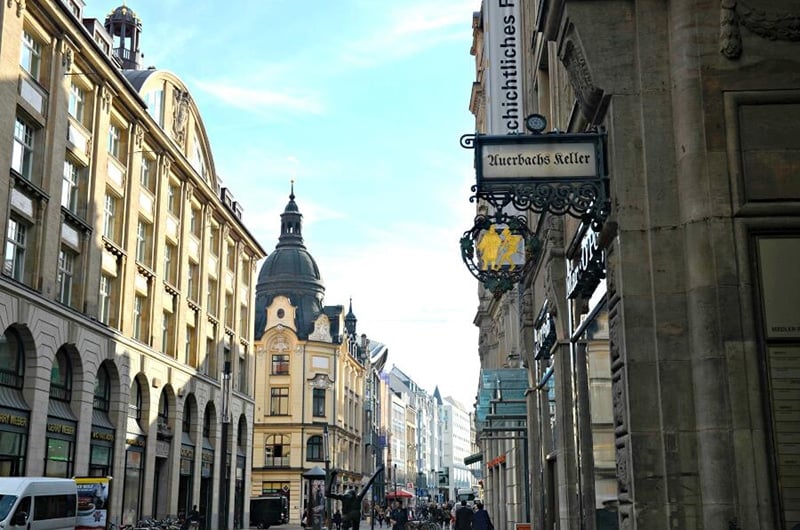
Leipzig: A Must-Have Day Trip From Berlin, Germany
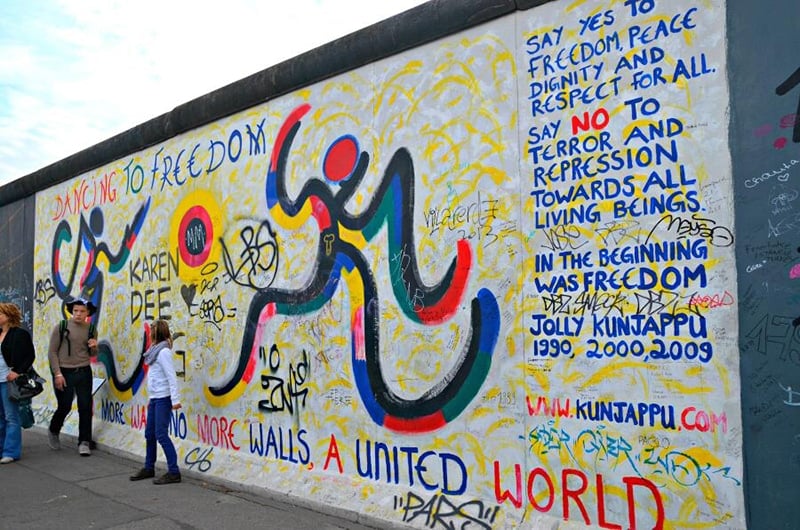
Exploring Germany’s Berlin Wall History, 25 Years After The Fall
Best Things To Do In Germany
Wondering what to do in Germany ? The following guides can help! The experiences shared are highlights of any Europe travel itinerary !

10 Amazing Offbeat Things To Do in Germany

How The Berlin Marathon Showed One Traveler That We’re All In This Race Of Life Together
Germany Travel Tips
This Germany travel advice can help you plan the perfect trip!
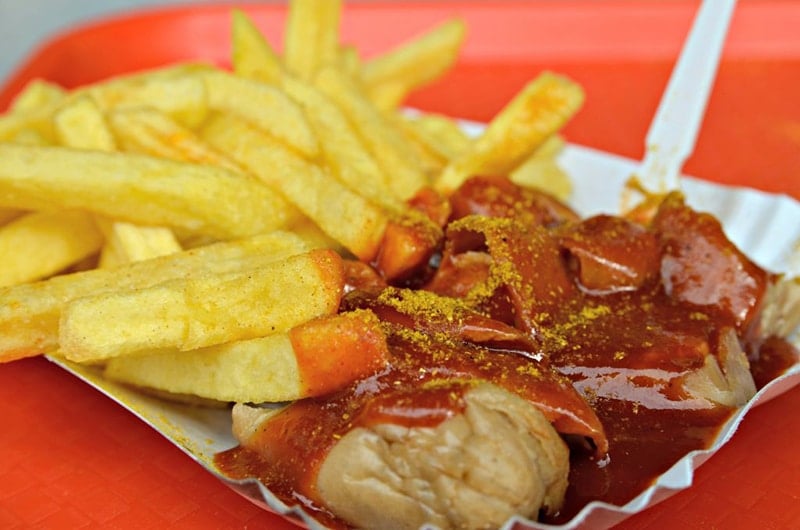
10 Reasons Why Germany Should Be Your Next Trip
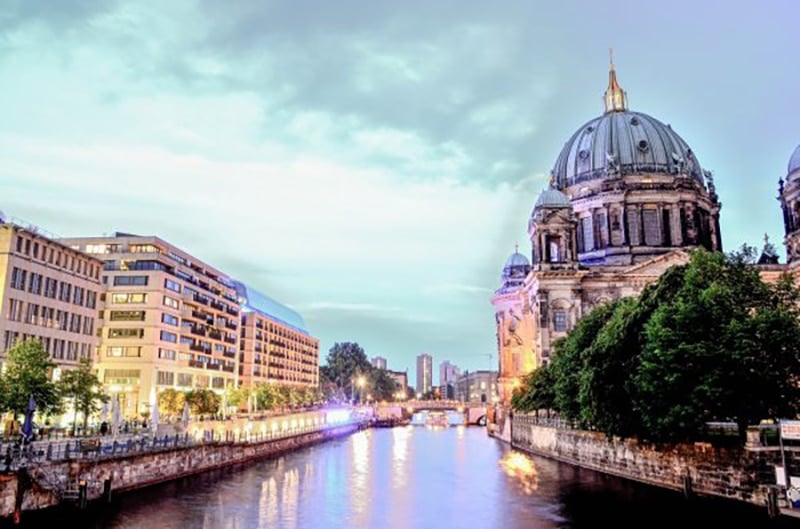
10 Tips for Traveling Berlin On A Budget
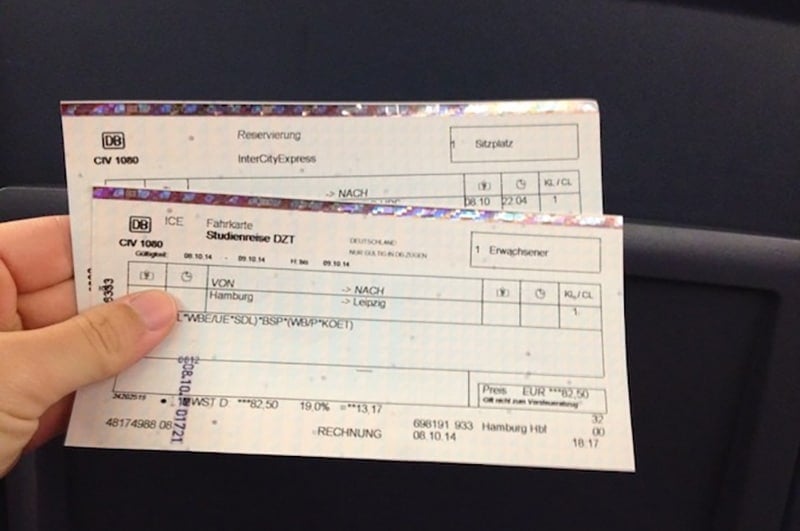
17 Essential Germany Transportation Tips For Travelers
Top Guided Tours In Germany
Explore local culture with a Germany tour guide through these unique excursions:
- Bavarian Schnitzel Cooking Class in Oberaudorf Farmhouse (Oberaudorf)
- Neuschwanstein Castle and Linderhof Palace Day Tour (from Munich)
- Cologne City Tour Experience cathedral city on the Rhine (Köln)
- Best of Bohemian and Saxon Switzerland Day Trip (from Dresden)
- Bavarian Beer and Food Evening Tour (Munich)
- 3-Hour Berlin Highlights Tour (Berlin)
Renting A Car In Germany
Need a rental car for your Germany trip?
Use Discover Cars to quickly compare your car rental options.
Germany Train Travel
Getting around Germany by train, bus, or ferry?
Omio is a must! I use this tool for all of my public transportation needs when traveling Europe.
The site is straightforward and user-friendly — and you can pre-book your tickets in advance at a discount.
They even offer flight and car deals!
Germany Hotels
Click here to browse hotels in Germany!
Prefer self-contained stays?
Click here to check out unique local apartments and rentals!
You can also use this map to search for local stays and experiences:
Germany Travel Insurance
It doesn’t matter if you’re traveling solo or with a group on a Germany tour. When visiting Germany — or any other country in the world — make sure to get travel insurance to protect your health and safety.
In my opinion, the best travel medical insurance for travelers is SafetyWing as they’ve got a large network and offer both short-term and long-term coverage — including coverage if you’re traveling for months as well as limited coverage in your home country).
Additionally, SafetyWing is budget-friendly and offers $250,000 worth of coverage with just one low overall deductible of $250.
With coverage, you’ll have peace of mind as you embark on your Germany itinerary.
Click my referral link here to price out travel insurance for your trip in just a few clicks .
Germany Travel Guide FAQ
Below, find answers to frequently asked questions about traveling in Germany .
Q: What are the best places in Germany for tourists?
Germany offers something for every kind of traveler, so your destination really depends on the kind of trip you want to have.
Looking to party until the wee hours of the morning and visit historic sites from World War II and the Cold War? Head to the capital city of Berlin .
Visiting during Oktoberfest or want to experience the famed German Christmas markets? Munich is the place to be.
Want to take in world-class concerts and wander along canal-side streets? Head to Hamburg.
Not much of a city slicker? Germany has plenty of open space for you to enjoy.
The Black Forest in the Baden-Württemberg region features iconic natural sights and is an excellent spot for hiking. The area is also home to many thermal baths in resort towns like Baden-Baden where you can relax in the natural curative spring waters.
And for those looking for the storybook Bavarian experience, a trip to Neuschwanstein Castle is an absolute must!
This 19th-century romantic castle in the Bavarian Alps has inspired many an artist, including Walt Disney, who modeled Sleeping Beauty’s castle at Disneyland after the iconic home.
Q: What are the best ways to travel cheaply in Germany?
There are many ways to stretch your budget while visiting Germany. First off, be mindful when choosing your travel dates. Prices tend to be higher and travel destinations are usually busier around the German public school holidays and major trade fairs in certain cities, so check local school schedules and event calendars before booking your trip.
Try to book your trip for the shoulder seasons; for example, if you’re planning a summer getaway, try to book in June or September which are still warm but not quite as busy.
If you’re planning to travel around Germany by train , be sure to book directly with Deutsche Bahn, the German rail service. Third-party retailers tend to tack on extra fees. You can also order a rail pass here for more flexible travel options. The sooner you book, the better — fares tend to go up closer to the date of travel.
As for accommodations, Germany has plenty of hostel and homeshare options. Many hostels offer private rooms for around $50 USD per night and are just as clean and modern as city hotels.
Looking for a little more room? Check out sites like AirBnB and VRBO for apartment and home rentals throughout the country.
Q: What are the do’s and don’ts when traveling to Germany?
As with any other country, Germany has its own customs and cultural standards. Here are some general do’s and don’ts:
– Be on time. Punctuality is seen as a sign of respect in Germany and most things start on schedule. Whether you’re taking a tour or meeting someone for coffee, try to arrive a little bit early.
– Use titles and last names when addressing people. Herr [Last Name] or Frau [Last Name] are generally appropriate unless otherwise noted.
– Learn a little bit of German before your trip.
– Make sure you have proper health insurance before your trip, as medical care can be expensive in Germany. SafetyWing is one excellent travel medical insurance recommendation.
– Tip at least 5-10% at restaurants. Tipping for most services (salons, taxis, hotels, etc.) is not common in Germany but it is still expected in restaurants. Anything over 15% is considered generous. Also, be sure to tip your tour guide if you are taking a free tour.
– Keep cash on hand. Many restaurants throughout the country do not take credit cards.
DON’T
– Get too loud or too intoxicated. Unless you’re in a nightclub or an Oktoberfest tent, this behavior is generally frowned upon.
– Wear shoes in someone’s house. Most Germans take off their shoes upon entering their house and expect visitors to do the same. If you must keep them on, make sure it’s okay with your host first.
– Throw out your bottles. When purchasing drinks in glass or plastic bottles, a small deposit (usually around 10 cents) is added to your price. If you return the empty bottles to a local shop, you’ll get that deposit back, regardless of whether or not you purchased the bottle at that shop.
– Show the Nazi salute or any other Nazi symbol. This should simply go without saying, but it is also illegal to show any Nazi symbol in Germany.
Q: How much money do you need per day in Germany?
Your budget for a trip to Germany will of course depend on your individual travel plans but the average traveler spends about $130 USD per day in the country for accommodations, transportation, food, and other expenses.
Q: Is Germany safe?
Germany is considered quite safe compared to most destinations. Violent crime is rare in the country.
Petty theft and pickpocketing do occur, particularly in train stations and at major tourist attractions, so be sure to keep your valuables close, be aware of your surroundings, and have a plan for avoiding pickpockets .
Racially-motivated assaults against those perceived as “foreigners” have also occurred in recent years. Stay vigilant, particularly if you are traveling alone.
Q: How long can a tourist stay in Germany?
Most tourist visas will allow you to stay in Germany for up to 90 days without engaging in any professional activity during your stay.
Q: Do I need a Germany travel visa?
Travelers from the United States, United Kingdom, Australia, Canada, Schengen Area member countries, and several other countries do not need a visa to visit Germany for a period of fewer than 90 days.
It’s recommended to view your country’s Germany International Travel Information page for the most up-to-date information on entry and exit requirements. You can also contact the Consulate General of Germany.
Q: What is the best time to visit Germany?
While Germany is a year-round destination, for fewer crowds and better deals, spring is a great time to visit. You’ll experience mild weather and can take part in the many events that happen during this time, like Frühlingsfest (aka “Little Oktoberfest”) and Kirschblütenfest.
Additionally, many travelers love visiting in December for Germany’s famous European Christmas markets .
Q: Where is Germany?
Germany is located in West and Central Europe. Its borders are Denmark to the north, Poland and the Czech Republic to the east, Austria to the southeast, and Switzerland to the south-southwest.
Q: Are credit cards accepted in Germany?
Credit cards are widely accepted in Germany, though it’s always wise to carry some cash on you, especially when frequenting smaller mom and pop type establishments and street stalls.
Q: Can you drink the tap water in Germany?
Yes, the water is safe to drink in Germany.
Q: Do they speak English in Germany?
In tourist areas and big cities, you’ll typically find people who speak English, though not everyone does, and even fewer people do in more rural areas.
If possible, it’s smart to learn a bit of the language and know some common German phrases before traveling.
Q: What is the local currency in Germany?
The local currency in Germany is the Euro (€).
What would you add to this Germany travel guide?

Enjoyed this ultimate guide to Germany travel? Pin it for later!
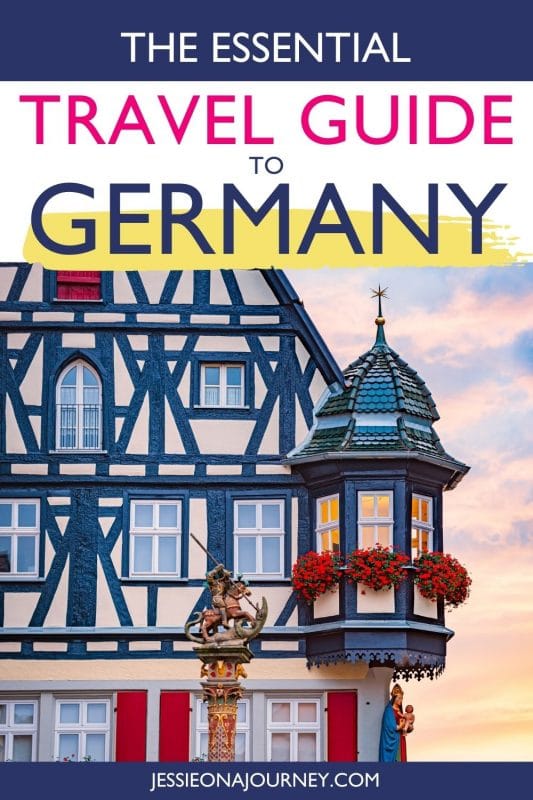

- Destinations
Germany Travel Guide
National Geographic’s latest travel stories about Germany
- Terms of Use
- Privacy Policy
- Your US State Privacy Rights
- Children's Online Privacy Policy
- Interest-Based Ads
- About Nielsen Measurement
- Do Not Sell or Share My Personal Information
- Nat Geo Home
- Attend a Live Event
- Book a Trip
- Inspire Your Kids
- Shop Nat Geo
- Visit the D.C. Museum
- Learn About Our Impact
- Support Our Mission
- Advertise With Us
- Customer Service
- Renew Subscription
- Manage Your Subscription
- Work at Nat Geo
- Sign Up for Our Newsletters
- Contribute to Protect the Planet
Copyright © 1996-2015 National Geographic Society Copyright © 2015-2024 National Geographic Partners, LLC. All rights reserved
Matador Original Series
These are the 100 most-loved sights in germany and we bet you haven't even heard of the top 5.
I think of myself as a well-traveled individual with a very solid knowledge of geography and tourist sights. Most of the people at Matador Network see themselves in the same way. After all, we live and breathe travel day in, day out. Yet, apparently, none of us know much about Germany.
When the German National Tourist Board sent me a list of the country’s top-100 sights and attractions , I already had the first five clearly listed in my head — or so I thought:
- The Berlin Wall
- Neuschwanstein Castle
- The Brandenburg Gate
- The big Christmas markets of Nuremberg and Cologne
- Oktoberfest
When I clicked the link to the ranking, however, the top five were not what I had anticipated.
To make sure I was not the only one with a distorted idea of what Germany had to offer, I asked my coworkers what they thought were the top sights and attractions in the country. Their responses mostly mirrored mine, except for a few; many also suggested Berlin’s nightlife, the Black Forest, the Bavarian Alps, Frankfurt’s Old Town, and the Cologne Cathedral, among others.
In reality, after the German National Tourist Board asked international visitors, as well as more than 25,000 people from around the world, their favorite sights and attractions in Germany, this is what the top five looked like:
- Miniatur Wunderland, Hamburg
- Europa-Park, Rust
- Phantasialand, Brühl
- Nürburgring
- Rothenburg ob der Tauber
The city of Berlin, the capital of the country, doesn’t even crack the top five, Neuschwanstein Castle ranks as #11, and Oktoberfest is found at the 37th spot.
If you’ve never heard of most of the entries on this top-five list, you’re not alone. Neither have I and neither have my travel expert colleagues. But these are the German sights and attractions that the public chose, so let’s dive a little deeper to see what they are all about.
1. Miniatur Wunderland, Hamburg
Holder of the Guinness World Record for the world’s largest model railroad system, Miniatur Wunderland is a cross between a museum and a theme park. Like its name indicates, it is a miniature representation of parts of the world, including Italy, the US, and Switzerland, as well as airports, train stations, train lines, and events like the Monaco Grand Prix, among many others. Miniatur Wunderland covers a total of 107,639 square foot in the center of Hamburg’s Speicherstadt District and is home to 292,110 Wunderländer, the mini inhabitants of this fantastic world. Miniatur Wunderland keeps expanding to include more and more geographic locations and details; a Rainforest section, as well as as an miniature Atacama Desert should be added at the end of 2025.
2. Europa-Park, Rust
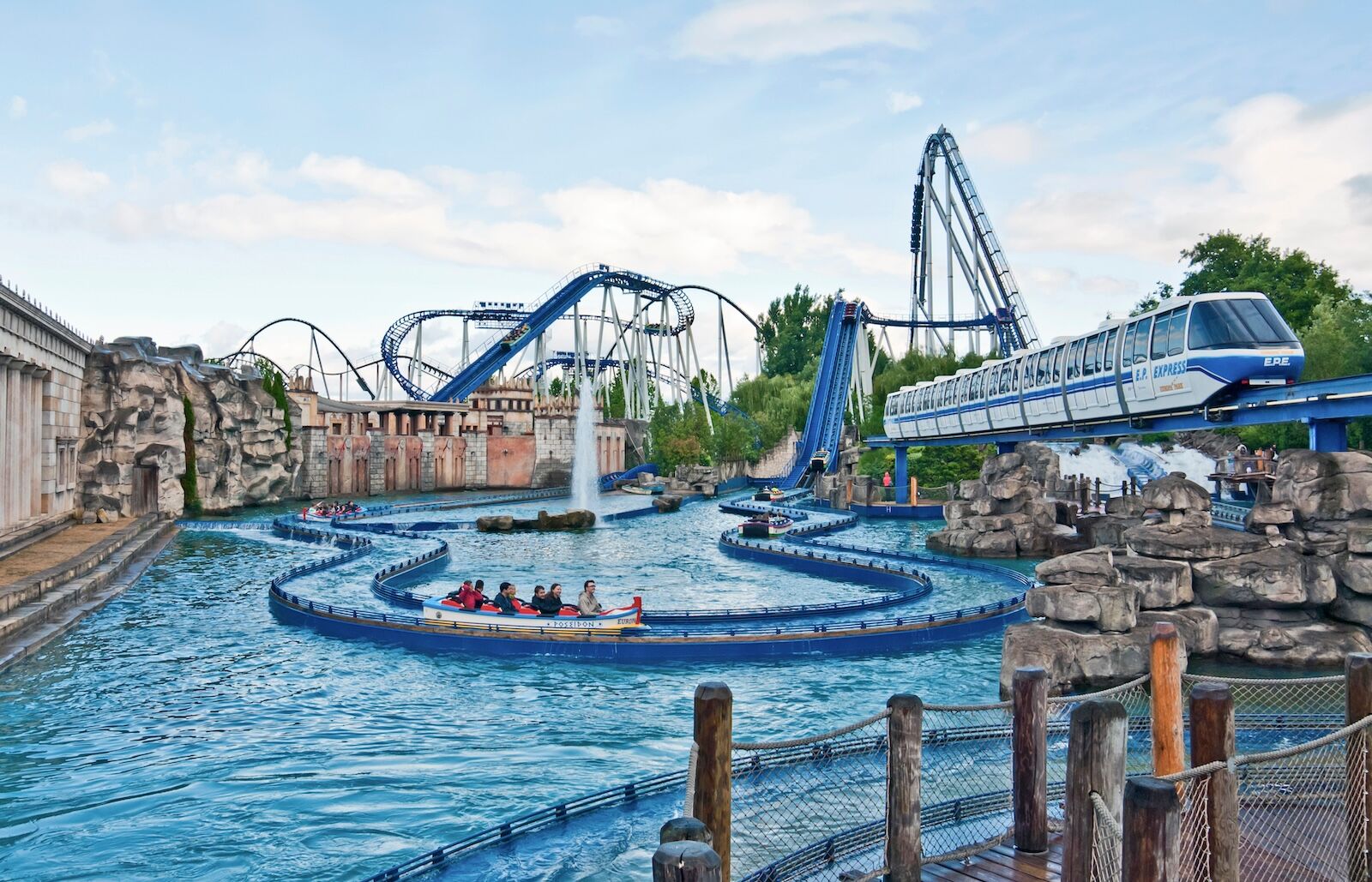
Photo: Preisler /Shutterstock
Europa-Park , located in the city of Rust in Southwest Germany, is the country’s largest theme park. There are over 100 rides and shows on offer at Europa-Park, including dozens of rollercoasters, magic shows, dance shows, train rides, carrousels, boat rides, water slides, and many more. There are on-site hotels and restaurants to cater for the more than 6 million people who visits the park every year. Most of the attractions are named and designed after European countries, cities, sights, or geographical features, hence the name of the park. The mascot of the park is an anthropomorphized mouse named Ed Euromaus but, rest assured, it looks nothing like Mickey.
3. Phantasialand, Brühl

Photo: D. Pfleiderer /Shutterstock
Also a theme park filled with thrilling and family-friendly rides and shows, Phantasialand is located in the city of Brühl in Western Germany, near Cologne. While Europa-Park focuses on Europe’s attributes and attractions, Phantasialand is all about magic, fantasy, and the realm of dreams. Phantasialand is a record-breaking theme park: it is home to Taron, the longest multi-launch rollercoaster in the world, and River Quest, a river rapids ride with the world’s biggest splash.
4. Nürburgring

Photo: Roel Ramaekers /Shutterstock
Germany being home to the autobahn , a highway with no speed limit, and being the birthplace of iconic car markers like Porsche, Mercedes, and BMW, it’s not overly surprising that a race circuit features as the fourth most-loved tourist attraction in the country. Probably the most famous and the most challenging race circuit in the entire world, the Nürburgring , opened since 1927, is a very popular place for gearheads to visit. There are races of all kinds (classic cars, motorbikes, etc.), drifting events, motor shows, and more throughout the year, but more frequently in the summer months. The Nürburgring is located in Western Germany, just 25 miles from the border with Belgium.
5. Rothenburg ob der Tauber

Photo: Kirk Fisher /Shutterstock
More like this
Trending now, the 15 coolest libraries around the world and how to visit them, what it’s like to ride first class trains from france to germany, and back, luxury on the rhine: this scenic cruise features a classical concert in a unesco-listed church, what i packed for a week of travel in northern germany, 20 european national parks every outdoors lover should know, discover matador, adventure travel, train travel, national parks, beaches and islands, ski and snow.
We use cookies for analytics tracking and advertising from our partners.
For more information read our privacy policy .
Matador's Newsletter
Subscribe for exclusive city guides, travel videos, trip giveaways and more!
You've been signed up!
Follow us on social media.
News for Kids
- Dominican Republic
- Netherlands
- New Zealand
- Papua New Guinea
- Philippines
- Puerto Rico
- Solomon Islands
- South Africa
- South Korea
- Switzerland
- United Arab Emirates
- United Kingdom
- United States of America
- 7 Continents
- Australia/Oceania
- North America
- South America
- Chinese New Year
- Elections 2024
- Olympics 2024
- European Union
- Trivia & Quizzes
- Solar System Quiz
- Travel Reviews
- Travel Health
- Travel Links
- Competition 2024
- Winners 2023
- Winners 2022
- Winners 2021
- Winners 2020
- Winners 2019
- Request A Correction
Germany Travel Guide
Germany travel guide 2022.
In our Germany Travel Guide for Kids you will find fun and interesting travel information for children and families that was chosen and researched by kids, especially for kids. Enjoy!
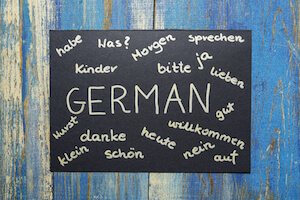
Germany Travel Ideas
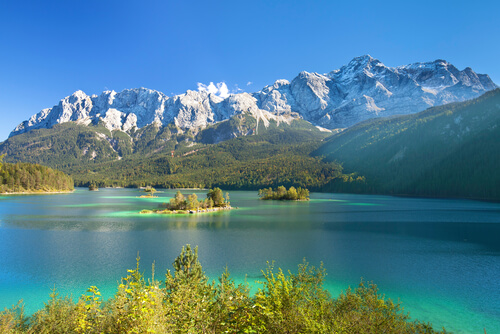
Germany for Kids
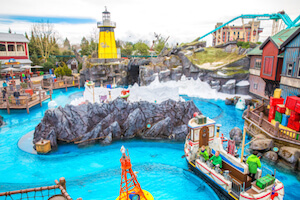
Fabulous German attractions
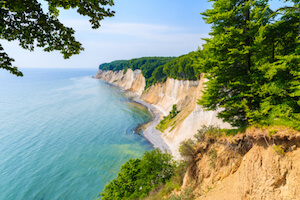
Germany Travel Tips
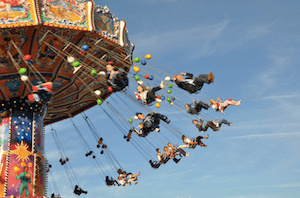
Germany Travel Guide: Related Pages
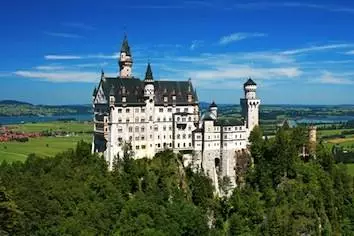
German Travel Guide | Resources
- Germany Tourism Board - Official Website
- Visit Berlin: Tourism Board - Official Website
- Muenchen.de - Oktoberfest - Tourism Board Info
- Stuttgart Spring Festival : 20.4. - 12.5.2024
- Hamburg Dom Festivals in Spring, Summer and Winter - official Hamburg Tourism Board Website
- Deutsche Bahn: BahnCard Infosite
- 10 Grimm fairy tales everyone should know - Deutsche Welle
- The best amusement parks in Germany - by Culture trip
- UNESCO World Heritage Sites in Germany
Let us know if you want to share some more tips on our Germany Travel Guide. We will add your insights about travels to Germany with children
Back from Germany Travel Guide to Germany Facts
Picture Credits on Germany Travel Guide: All Pictures, if not otherwise mentioned sourced from shutter stock and sxc.hu
Popular Pages Kids World Travel Guides
Back from Germany Travel Guide to Kids-World-Travel-Guide
Competition 2024 is open!

Would you prefer to share this page with others by linking to it?
- Click on the HTML link code below.
- Copy and paste it, adding a note of your own, into your blog, a Web page, forums, a blog comment, your Facebook account, or anywhere that someone would find this page valuable.

Events & Celebrations
Organisations, games & quizzes, travel tips, competition, recent articles.
Togo Facts for Kids | Facts about Togo for Kids | Geography | Africa
Sep 13, 24 08:25 AM
Pacific Ocean Facts for Kids | Geography | Pacific Ocean for Kids
Sep 06, 24 10:07 AM
Facts about Tuvalu for Kids | Tuvalu Oceania | Geography | Pacific
Sep 06, 24 09:53 AM
More about Germany

KidsWorldTravels Travel Guides
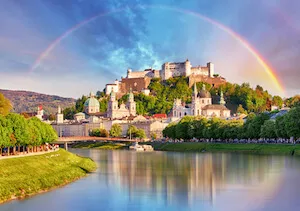
More about Countries in Europe
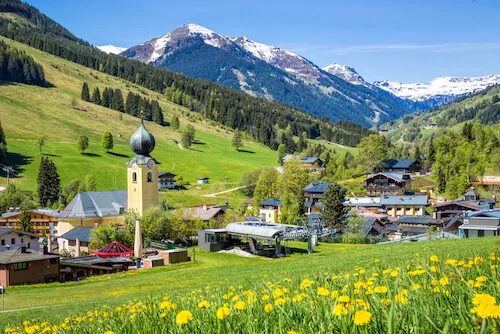
Temperature in Germany - Fahrenheit -
Temperature in germany - celsius - .
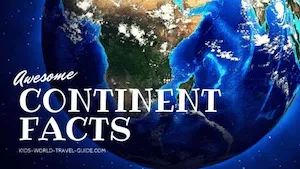
Like us on Facebook
Kids World Travel Guide
Brilliantly
Content & links.
Verified by Sur.ly
©Kids-World-Travel-Guide.com 2010-2024 | Created by Regina Gräff and KidsWorldTravels
All rights reserved | Privacy Policy | Disclaimer

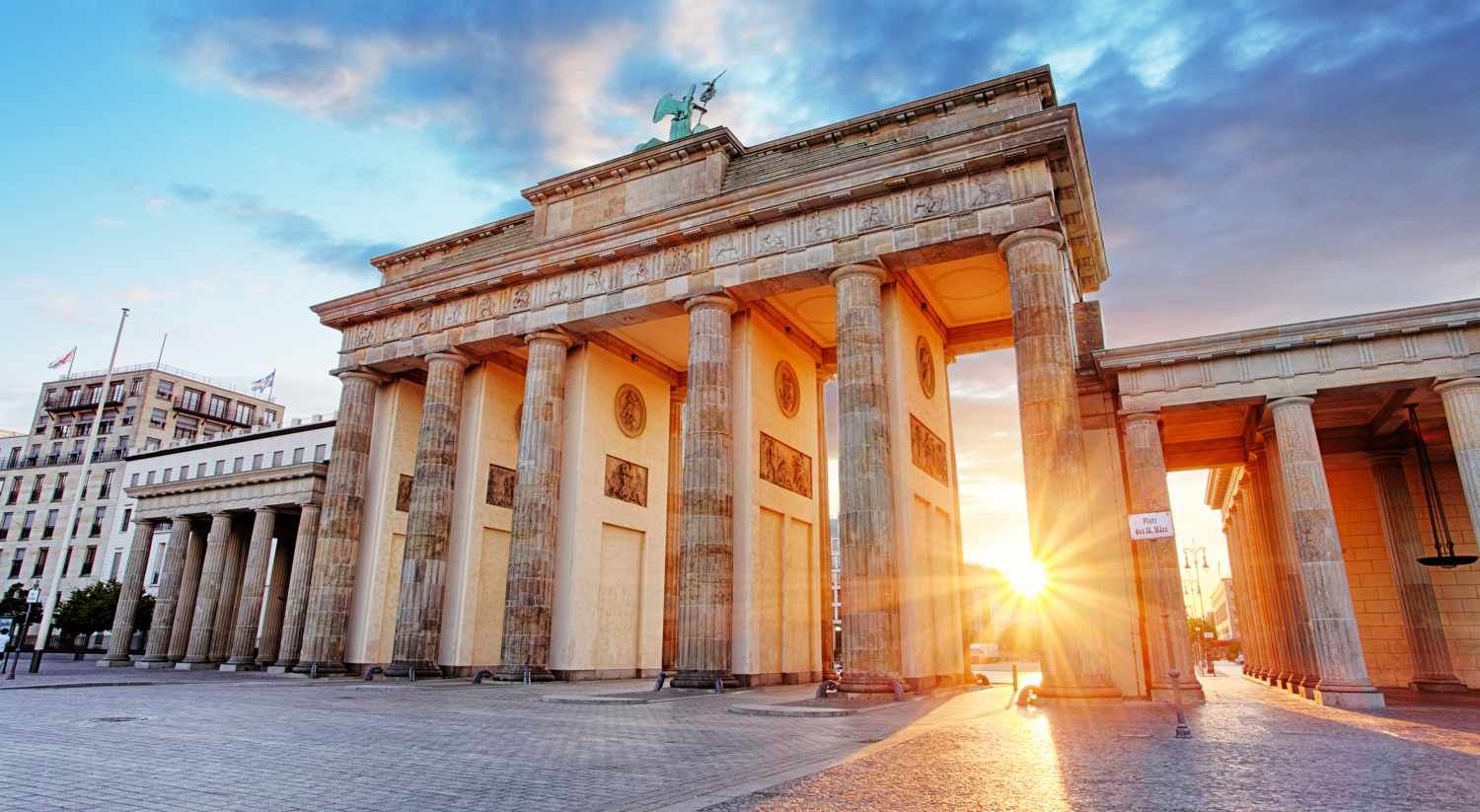
Introducing Germany
- About Germany
- Images of Germany
- History, language & culture
- Weather & geography
- Doing business & staying in touch
Plan your trip
- Travel to Germany
- Where to stay
While you’re there
- Things to see & do
- Shopping & nightlife
- Food & drink
- Getting around
Before you go
- Passport & visa
- Public Holidays
- Money & duty free
Book your flights
- BER Berlin Brandenburg Airport
- Bodensee Airport Friedrichshafen
- City Airport Bremen
- Cologne Bonn Airport
- Dresden International Airport
- Düsseldorf Airport
- Frankfurt Airport
- Hamburg Airport
- Hanover Airport
- Leipzig/Halle Airport
- Munich Airport
- Münster Osnabrück International Airport
- Nuremberg Airport
- Paderborn/Lippstadt Airport
- Rostock-Laage Airport
- Stuttgart Airport
- Sylt (Westerland) Airport
- Zweibrücken Airport
Ski Resorts
- Garmisch-Partenkirchen
Getting Around Germany
Internal services are operated by Lufthansa ( www.lufthansa.com ) and Eurowings ( www.eurowings.com ) and several other airlines. Given the breadth and general efficiency of the public transport network however, internal flights should not be seen as essential.
The Star Alliance Europe AirPass can be used for domestic flights within Germany, thanks to the fact that Lufthansa is one of its partners.
Departure tax
Germany is covered by a busy network of motorways ( Autobahnen ). All roads, Autobahnen and otherwise, are toll free (other than for heavy trucks). Lorries are banned from travelling on Autobahnen on Sundays and on Bank Holidays throughout the year from midnight until 22:00 hours. Additionally, during the summer holidays in the months of July and August lorries aren't allowed on Autobahnen on Saturdays from 0700-2000 hours, making it easier for cars to cover long distances.
Side of the road
Road classification.
Autobahnen are three- or four-lane motorways, while Bundesstraßen signifies secondary B routes, federal highways. Landstraßen (also known as Staatsstraßen ) are state roads.
Self-drive cars are available at most towns, airports, and major railway stations – a high number of international car hire companies are present in Germany.
Almost all German taxis are cream-coloured Mercedes with yellow-and-black signs on their roofs. You're far more likely to find a vehicle at a taxi stand than flag one down. Fares are metered.
Germany holds real appeal for cyclists. Designated bike paths are commonplace and long-distance routes are widespread. If you're serious about cycle touring however, be aware that the country is a very large one.
Bike hire is easily available. Several leading cities, including Berlin, Frankfurt, Munich and Stuttgart, have a 24-hour interactive bike-hire scheme which tourists can sign up to ( www.callabike-interaktiv.de ).
Though by no means as time-efficient or lauded as the rail service, Germany’s extensive bus network still offers a workable (and reasonably comprehensive) way of exploring some of the country’s more remote regions. Local services are run by regional companies, and many timetables stop at the weekends. Eurolines ( www.eurolines.com ) offers routes from the UK to the larger cities in Germany.
Regulations
Traffic signs are international. Speed limits in Germany are 50kph (31mph) in built-up areas and 100kph (62mph) on all roads outside built-up areas. Unless otherwise indicated, there is theoretically no maximum speed limit on Autobahns, but 130kph (81mph) is recommended.
The minimum driving age is 18. Winter tyres are a legal requirement during periods of snowfall and in case of slippery ice.
Breakdown services
The Allgemeiner Deutscher Automobil Club (ADAC) (emergency tel: 0180 222 2222, in Germany only; www.adac.de ) is the principal national assistance network.
Documentation
Insurance is mandatory, and you should also have a full driving licence to hand.
Urban travel
All urban areas have efficient bus services, complemented in a number of larger cities by trams, and underground or suburban trains. In most larger cities, tickets for a local transport journey have to be purchased from ticket machines before boarding the suburban train ( S-Bahn ), underground ( U-Bahn ), bus or tram. Ticket inspections are frequent, with on-the-spot fines issued. Taxis are widely available in the main cities, and operate from designated ranks. They can be advance booked by telephone.
Berlin: The city's excellent public transport includes an extensive network of buses, underground and S-Bahn in three travel zones. In the eastern part of the city, tram services and the ferries of the Berliner Verkehrs-Betriebe, BVG or Berlin Public Transport ( www.bvg.de ), in conjunction with east Berlin's White Fleet (Weisse Flotte), provide further services. Day and longer period passes are available covering all services. Taxis are generally available throughout the city ( www.quality-taxi.de ).
Frankfurt : An extensive tram network and bus services serve the Rhine-Main region, operated under the auspices of the Rhein-Main Verkehrsverbund (tel: +49 69 2424 8024; www.rmv.de ). As in Berlin, 24-hour passes for all types of public transport are available, as is a large fleet of cream-coloured taxis. The central taxi booking number is +49 69 230 001.
Munich: The Bavarian capital has some trams, plus comprehensive bus, underground and suburban rail services. Services are operated under the aegis of the Münchner Verkehrs-und Tarifverbund (tel: +49 89 4142 4344; www.mvv-muenchen.de ). Again, taxis are widely available. Taxis can be booked on +49 89 21610.
Note: Pedestrians should be aware that it is technically an offence to cross a road when the pedestrian crossing lights are red, even if there is no traffic on the road. Offenders can risk on-the-spot fines – in practice, this is unlikely to happen. Adults should set a good example for children not to cross the street when the lights are red.
The national rail company Deutsche Bahn ( www.bahn.de ) operates tens of thousands of passenger trains each day. The most famous of these are the Intercity-Express (ICE) services, which reach speeds of up to 300kph (186mph) and run between major cities, both within Germany and internationally. A number of less speedy (but still efficient) inter-city and international trains also run.
Rail Passes
A range of Bahncards is available from Deutsche Bahn, offering a number of different discount schemes for travel within Germany, and varying advance purchase discount options are also offered. For visitors not intending to be in the country for months on end, the two most relevant options are the BahnCard 25 (providing 25% discounts) and the BahnCard50 (providing 50% discounts).
With an InterRail One Country Pass you can choose from unlimited travel on three, four, five, six or eight days of your choice during the course of a month.
Regular scheduled boat services operate on most rivers, lakes and coastal waters. Besides scheduled services, special excursions are also available on many navigable waters.
The KD German Rhine Line (tel: +49 221 208 8318; www.k-d.com/de/ ) covers the Rhine and Moselle rivers, and has comfortable ships that operate daily from April to late October. In conjunction with the Sächsische Dampfschiffahrt, the KD also organises cabin cruises on the Elbe between Meissen and the Swiss border, via Dresden.
Lake Constance is served by regular steamers, pleasure boats and car ferries between the German, Swiss and Austrian shores. The Lake Constance Adventure Passes (Bodensee-Erlebniskarte) ( www.bodensee.eu/de/darum-buchen ) give free travel on many vessels in the Lake Constance area, as well as discounted admission to attractions. The pass is valid for three days.

Related Articles

Bathe thyself: Searching for the ‘Kneipp Cure’ in Germany
Once upon a time, Europeans flocked to Germany in search of the 'Kneipp Cure' or Kneippism, so find out what it is and why it is popular again
Book a Hotel
© Columbus Travel Media Ltd. All rights reserved 2024

IMAGES
VIDEO
COMMENTS
Germany travel guide. About Germany. ... The World Travel Guide (WTG) is the flagship digital consumer brand within the Columbus Travel Media portfolio. A comprehensive guide to the world's best travel destinations, its print heritage stretches back more than 30 years, with the online portal reaching its 20-year anniversary in 2019. ...
Explore Germany holidays and discover the best time and places to visit. Germany's best sights and local secrets, from travel experts you can trust. Lonely Planet. Destinations. Planning ... Germany's public transportation network is one of the best in the world (and kids under 15 travel on trains for free). Read on for how to explore Germany. ...
15. 1001 Easy German Phrases. $7.95. This German phrase book is the ideal companion for your trip to Germany. With more than 1,000 basic words, phrases, and sentences in German it covers every travel situation you could think of from small talk, asking for directions, finding a bank, and ordering at restaurants.
Germany is blessed with some of Europe's most high-powered sights. It has spectacular scenery — the jagged Alps, flower-filled meadows, rolling hills of forests and farms, and mighty rivers — dotted all over with castles and churches of every variety. In Deutschland's idyllic half-timbered villages, you can enjoy strudel at the bakery or sip a stein of beer while bikes rattle by over the ...
Here are some German trip itinerary ideas…. Germany itinerary ideas for a taste of everything: Southern Germany Classic: Munich, the Allgäu (for Castles!), Garmisch Partenkirchen, Berchtesgaden National Park, Stuttgart & Area, Black Forest. Eastern Germany Classic: Berlin, Dresden, Saxon Switzerland.
Bauhaus: follow in the footsteps of this world-famous art school. Harz: Person goes white-water kayaking on the river Oker. Aerial view of the Dauner Maar in the Volcanic Eifel. Seebach: Hiking group with a wheelchair user and a man with a prosthetic leg on the Black Forest High Road.
We have multiple one week itinerary options you could combine to make a 10 day Germany itinerary as well: Frankfurt to Munich here; Bavaria here; Northern Germany here; Central Germany here; Western Germany here; Eastern Germany here; Or you can check out our two week itinerary for Germany here. Find all our guides to planning travel to Germany ...
The World Travel Guide (WTG) is the flagship digital consumer brand within the Columbus Travel Media portfolio. A comprehensive guide to the world's best travel destinations, its print heritage stretches back more than 30 years, with the online portal reaching its 20-year anniversary in 2019. Available in English, German and Spanish versions ...
Travel facts about Germany; Germany occupies 357,112 square kilometres territory in Central Europe. It has land borders with nine countries and a coastline of 2389km on the North and Baltic seas.; Politically, Germany is a parliamentary democracy, with an upper house - the Bundesrat - and a lower chamber, the Bundestag, both in Berlin.The administrative structure is federal, with the ...
Your Guide to Travel to Germany. From the bustling streets of Berlin to the fairytale landscapes of the Bavarian Alps, we'll help you uncover the hidden gems and must-see attractions that make Germany a top-tier travel destination. Discover expert tips on navigating Germany's efficient transportation system, finding the best accommodations ...
Germany travel guide: Quick facts. Size: 357,168 km² or 137,847 sq mi People living there: more than 80,716,000 Capital: Berlin Governmental structure: Democratic, federal parliamentary republic. National day: October 3 Time zone: Central European Time (CET) / UTC+1 / GMT+1 Currency: euro (EUR) Power voltage and socket type(s): 230V, plug types F and C. If these plug types don't match your ...
Germany Travel Guide Basics. Currency: Euro Language: While German is the national language, the country has several dialects that originated in different regions with influences from surrounding countries. Most people also speak English, especially in larger cities. UNESCO-listed sites: Germany is home to an astounding 52 UNESCO World Heritage Sites, but some of the most well-known are ...
Welcome to our Germany travel guide. Meaty bratwurst and rowdy beer halls, magnificent, windswept beaches lapped by the Baltic Sea and the endlessly evolving creative scene - there are so many incredible things to do in Germany, it is guaranteed to capture your heart. ... Berlin's Berinale is the biggest film festival in the world, while ...
The Best Ways to Get Around Germany Getting to Germany: The Frankfurt and Munich airport are the two most popular airports to fly to.. Flights: You can check for the best flights to Germany on Skyscanner. Transportation: Train: Trains are a good way to travel for a long distance.Tickets cost 30 to 50 euros for a one-way trip.
Experience all of this in the best way possible, with the help of the travel tips you'll find throughout our Tour My Germany guide. Gain insights into German culture, including customs, etiquette, and popular activities, whether you're taking a road trip, using train stations, public transportation or some of the busiest airports. Be prepared ...
Munich (München), the capital of the Free State of Bavaria (Freistaat Bayern) is the city most visitors associate with "classic" German culture - for while Germany is in fact a patchwork of cultures and dialects, it's often the Bavarian model of Bierkellers, Bratwurst and Lederhosen that outsiders have in mind. Munich is no cliché, though: Germany's third-largest city is a center ...
What To Expect. Language: The official language of Germany is German, though most Germans that work in tourism speak English as well. Currency: The official currency of Germany is the Euro (EUR), and the exchange rate is currently 1 USD to 0.88 EUR. Credit Cards & ATMs: Germany is a predominately a cash-focused society, you will have no problem using your credit card when in Germany.
Destinations like Berlin, Munich, Hamburg, and Frankfurt all offer something different, from modern architecture and 24/7 nightclubs to historic churches and cobblestone streets. Of course, some of the best places to go in Germany are the smaller cities and towns. Leipzig, for example, is just a short train ride from Berlin.
The World Travel Guide (WTG) is the flagship digital consumer brand within the Columbus Travel Media portfolio. A comprehensive guide to the world's best travel destinations, its print heritage stretches back more than 30 years, with the online portal reaching its 20-year anniversary in 2019. Available in English, German and Spanish versions ...
Here are some interesting Germany Facts which were chosen and researched by kids especially for kids. Population: 83 million people live in Germany (2023). The majority of the people live in cities and towns. Capital: Berlin with 3.5 million inhabitants is not only Germany's capital city but also the biggest city.
Come for the Euros, stay for food in Germany's Rheingau region Come for the Euros, stay for food in Germany's Rheingau region This sunny German city should top your summer travel list This ...
I think of myself as a well-traveled individual with a very solid knowledge of geography and tourist sights. Most of the people at Matador Network see themselves in the same way. After all, we live and breathe travel day in, day out. Yet, apparently, none of us know much about Germany. When the German National Tourist Board sent me a list of the country's top-100 sights and attractions, I ...
Let us know if you want to share some more tips on our Germany Travel Guide. We will add your insights about travels to Germany with children. Back from Germany Travel Guide to Germany Facts. Picture Credits on Germany Travel Guide: All Pictures, if not otherwise mentioned sourced from shutter stock and sxc.hu. Popular Pages Kids World Travel ...
The World Travel Guide (WTG) is the flagship digital consumer brand within the Columbus Travel Media portfolio. A comprehensive guide to the world's best travel destinations, its print heritage stretches back more than 30 years, with the online portal reaching its 20-year anniversary in 2019. Available in English, German and Spanish versions ...